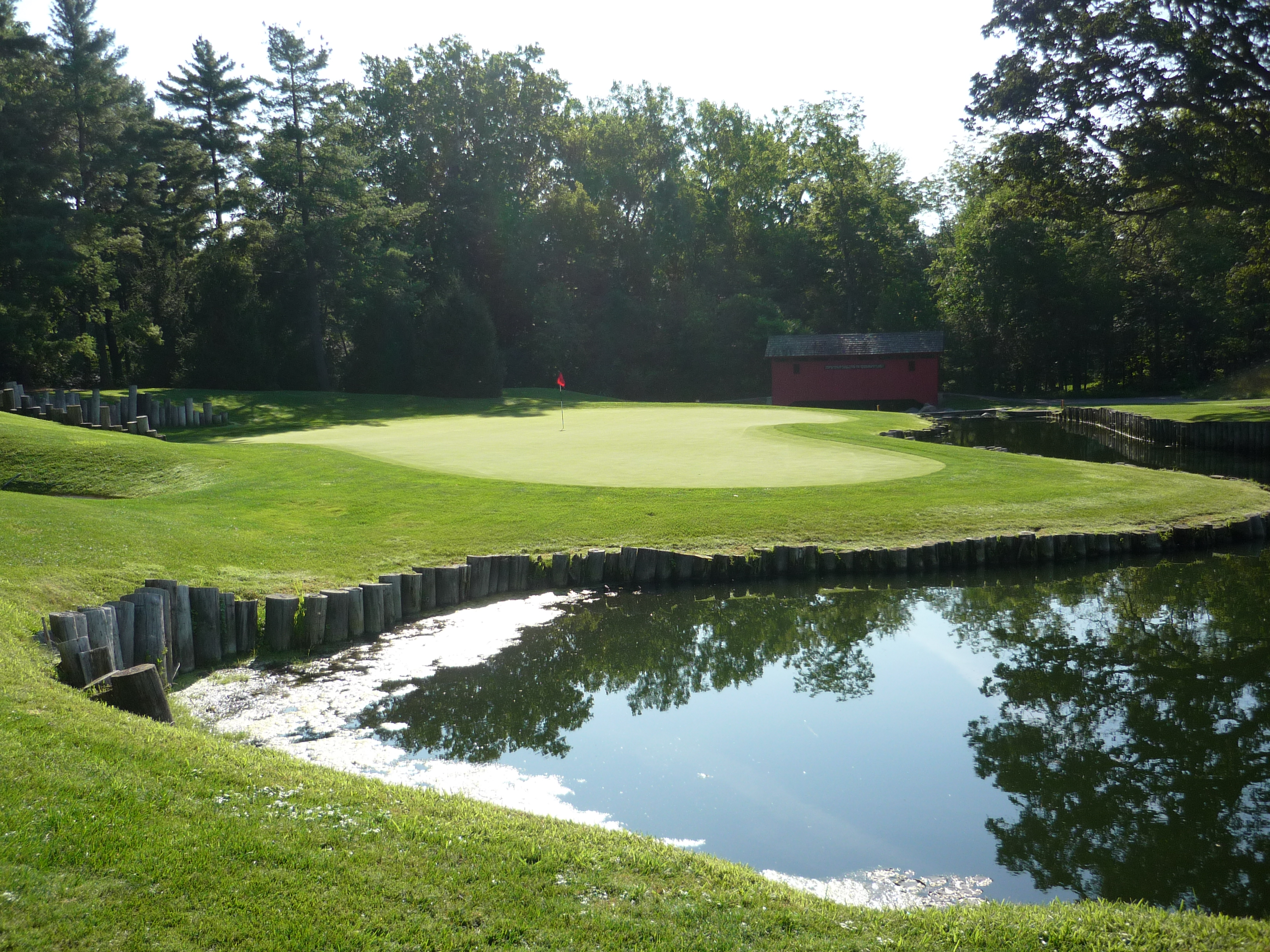
Crooked Stick Golf Club – Played 2015
- Rankings: Golf Digest #91, Golf Magazine #100
- Location: 1964 Burning Tree Lane, Carmel, Indiana
- Year: 1964
- Architects: Pete Dye & Alice Dye
- Course Access: Private
- Walking Rules: Carts & Caddies Available
Score Card Information:
- Black: 7,516 yards, Par 72, 77.8 Rating/149 Slope
- Gold: 7,159 yards, Par 72, 76.0 Rating/141 Slope
- Blue: 6,647 yards, Par 72, 73.1 Rating/136 Slope
- White: 6,029 yards, Par 72, 70.2 Rating/131 Slope
- Red: 5,201 yards, Par 72, 71.2 Rating/129 Slope
The end of my trip to Indiana found me at Crooked Stick Golf Club. I was lucky enough to get on this venerated golf course and I was going to enjoy it. I was also fortunate to play this round with my friend Tim from CBusGolfers on Twitter.
Let’s get into the story of Crooked Stick. It is one of the early designs of Pete Dye. It was backed by 60 investors from the Indianapolis area. The course features many of the trademarks that Dye would become known for such as railroad ties , strip bunkers, and mounds.
The name is probably the most unique aspect of the club. It looked like The Golf Club of Indianapolis was going to be the winner. The tale goes that Pete was walking on the uncompleted back nine with one of the original directors. He picked up a crooked stick and swung it at some stones. There you have it.
The course has been modified over the years with a lot of the changes made to accommodate major tournaments. The greens have been replaced with grasses multiple times. Additionally bunkers, mounds, and false fronts have been tweaked along with added length.
The course has hosted many prestigious tournaments. They include the 1982 US Junior Amateur, 1983 US Senior Amateur, 1989 US Mid-Amateur, 1991 PGA Championship, 1993 US Women’s Open, 2005 Solheim Cup, 2007 US Women’s Amateur, 2009 US Senior Open, 2012 BMW Championship.
The first clubhouse was an old farmhouse. A more permanent clubhouse was constructed in 1973. Crooked Stick is a golf only club and the clubhouse served the membership well until 2004. The new clubhouse built in 2005 is seen below. It looks much older but in a positive way. It fits the property as if it was always there.
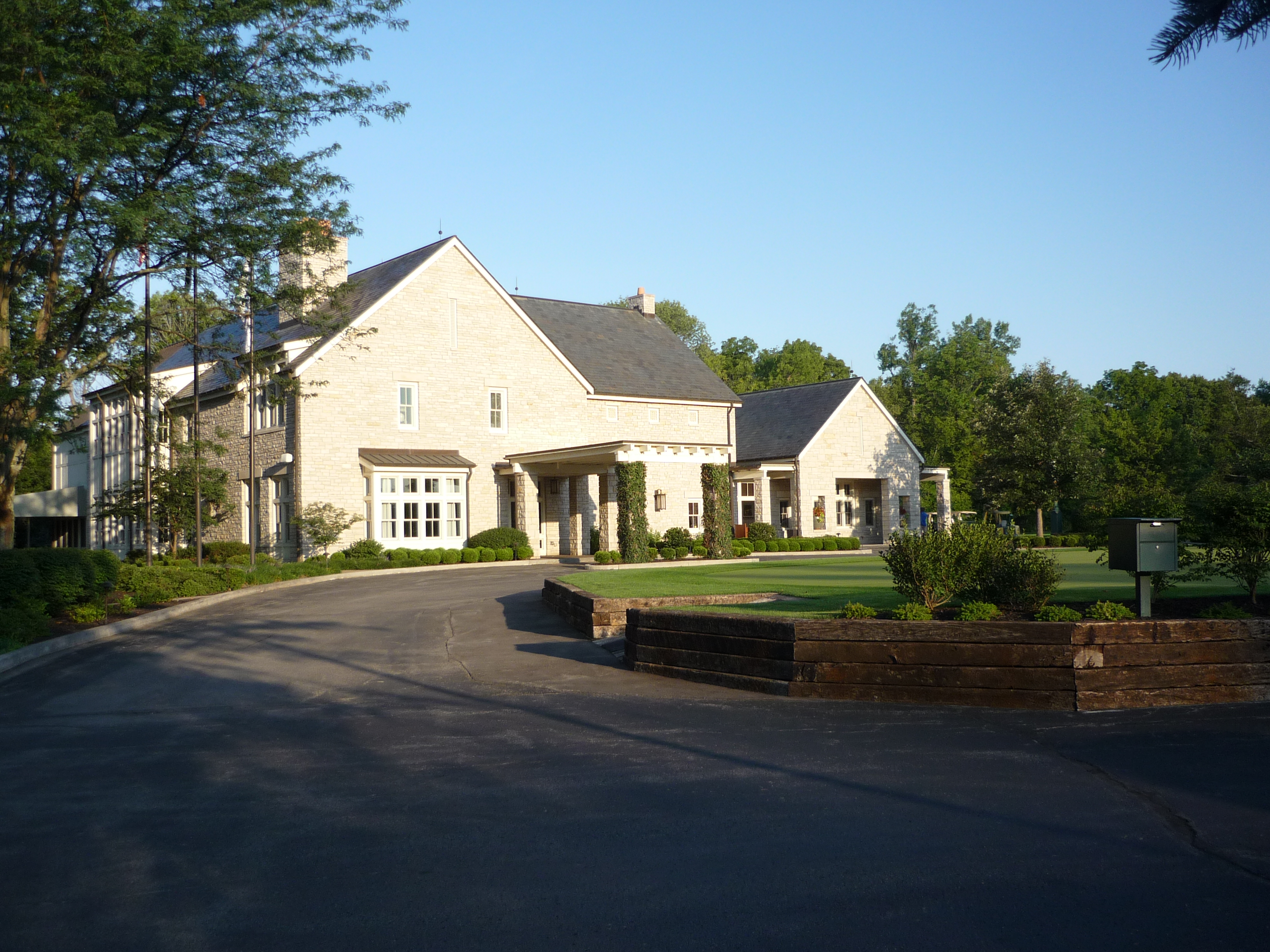
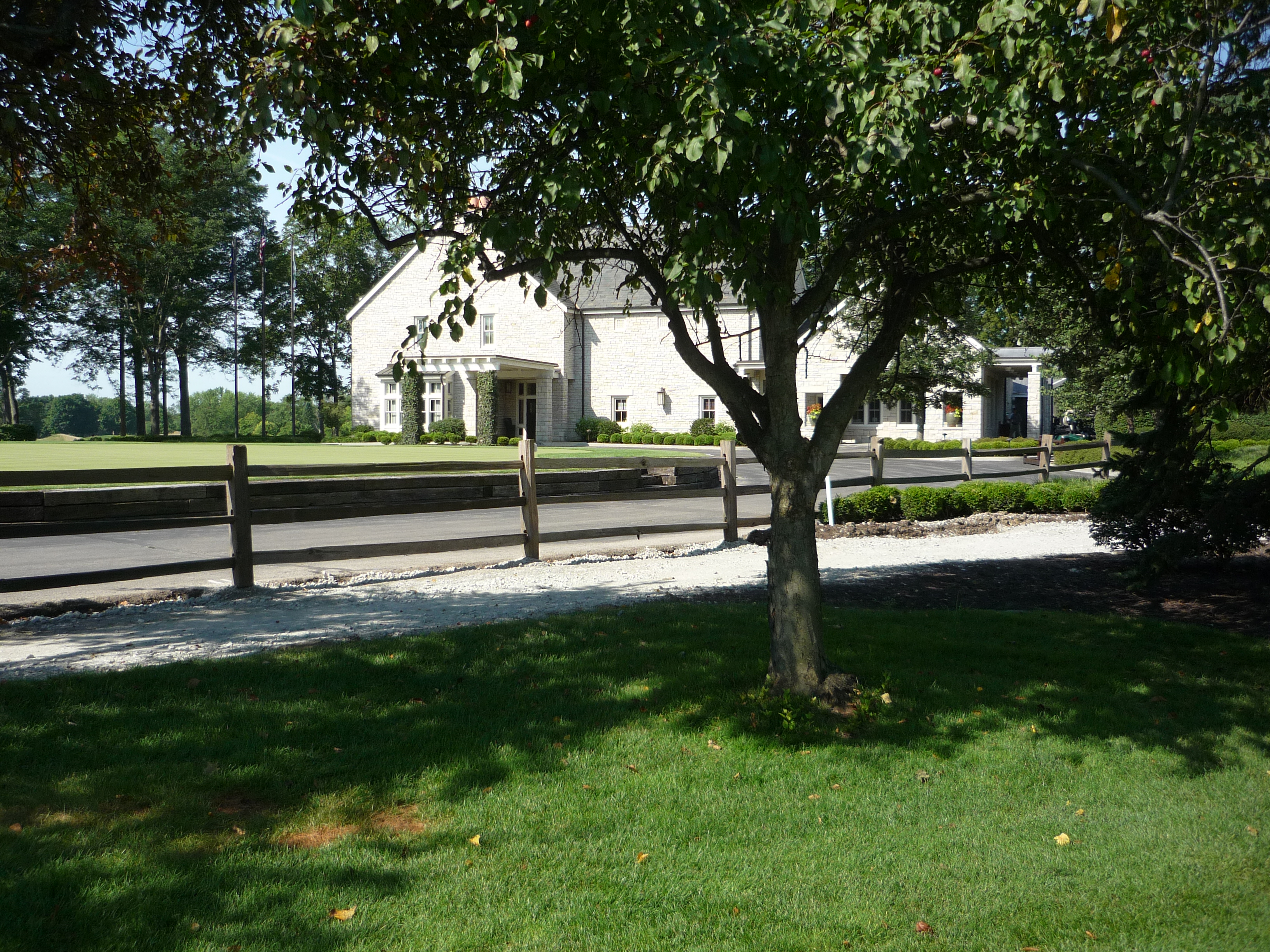
These wooden signs showcase some of the tournaments that the club has hosted.
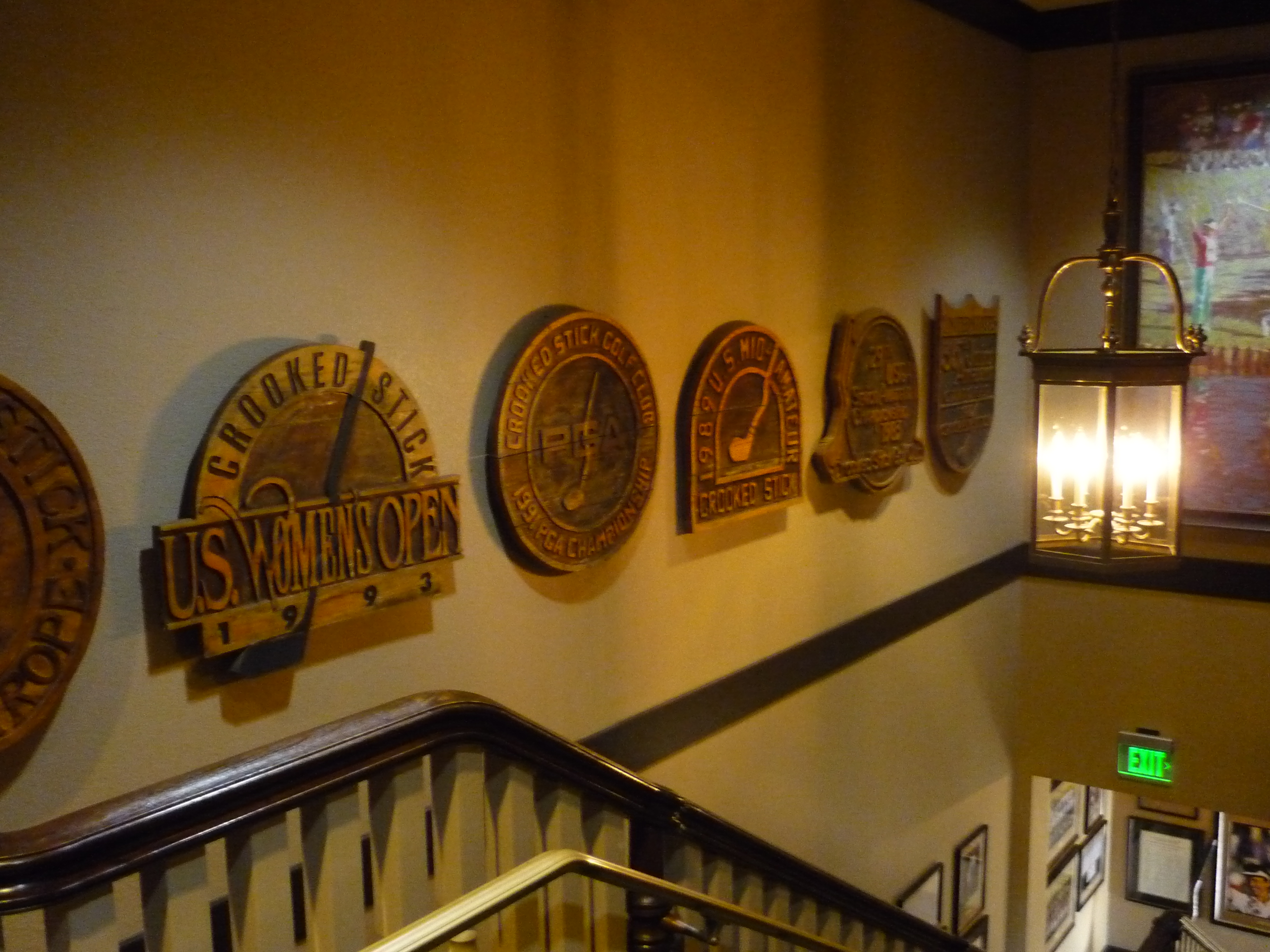
These are stairs down from the men’s locker room to the rest of the clubhouse.
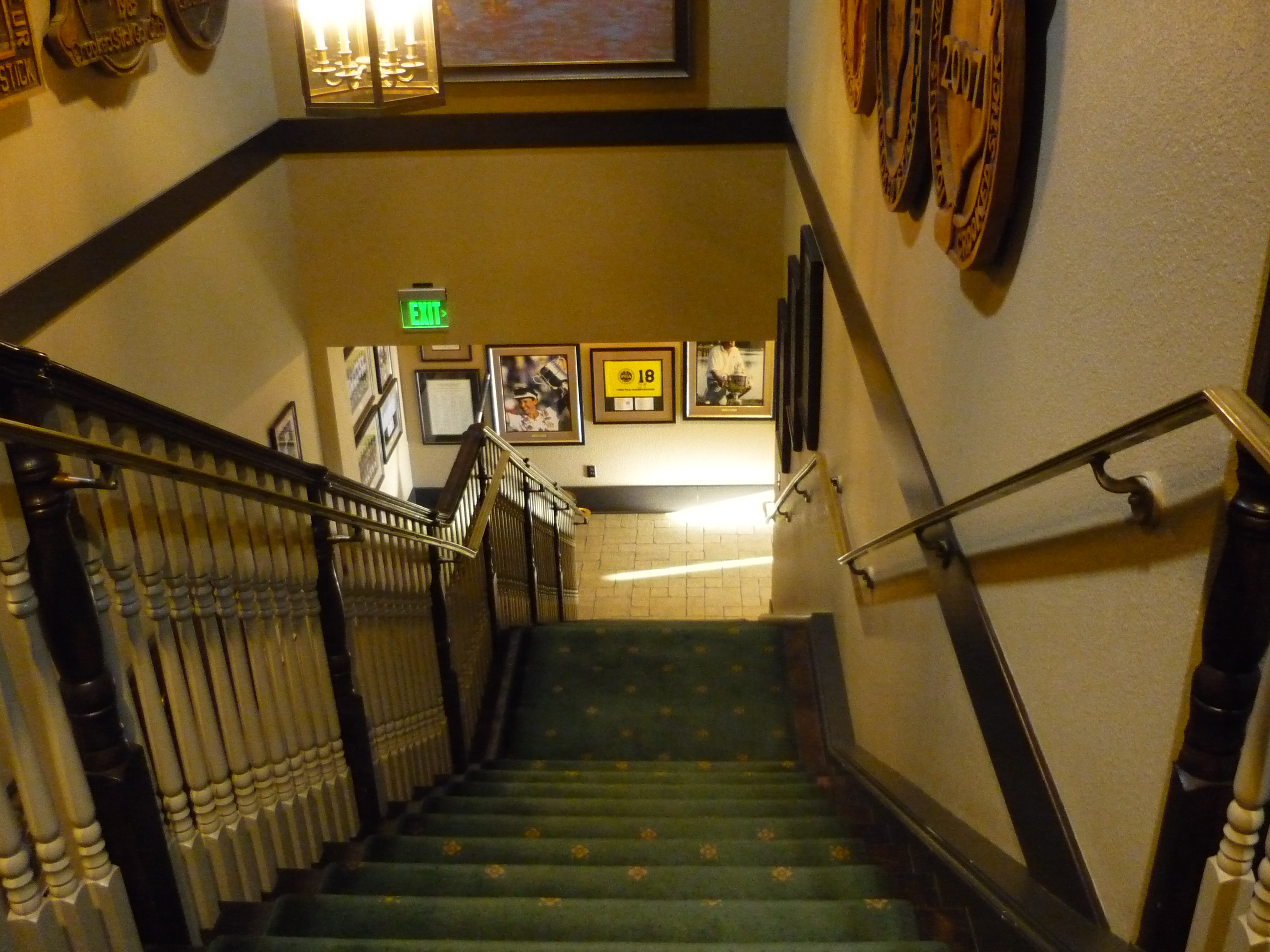
The men’s locker room is very old-school with dark wood lockers. It was very elegant and made me feel like a member for a day.
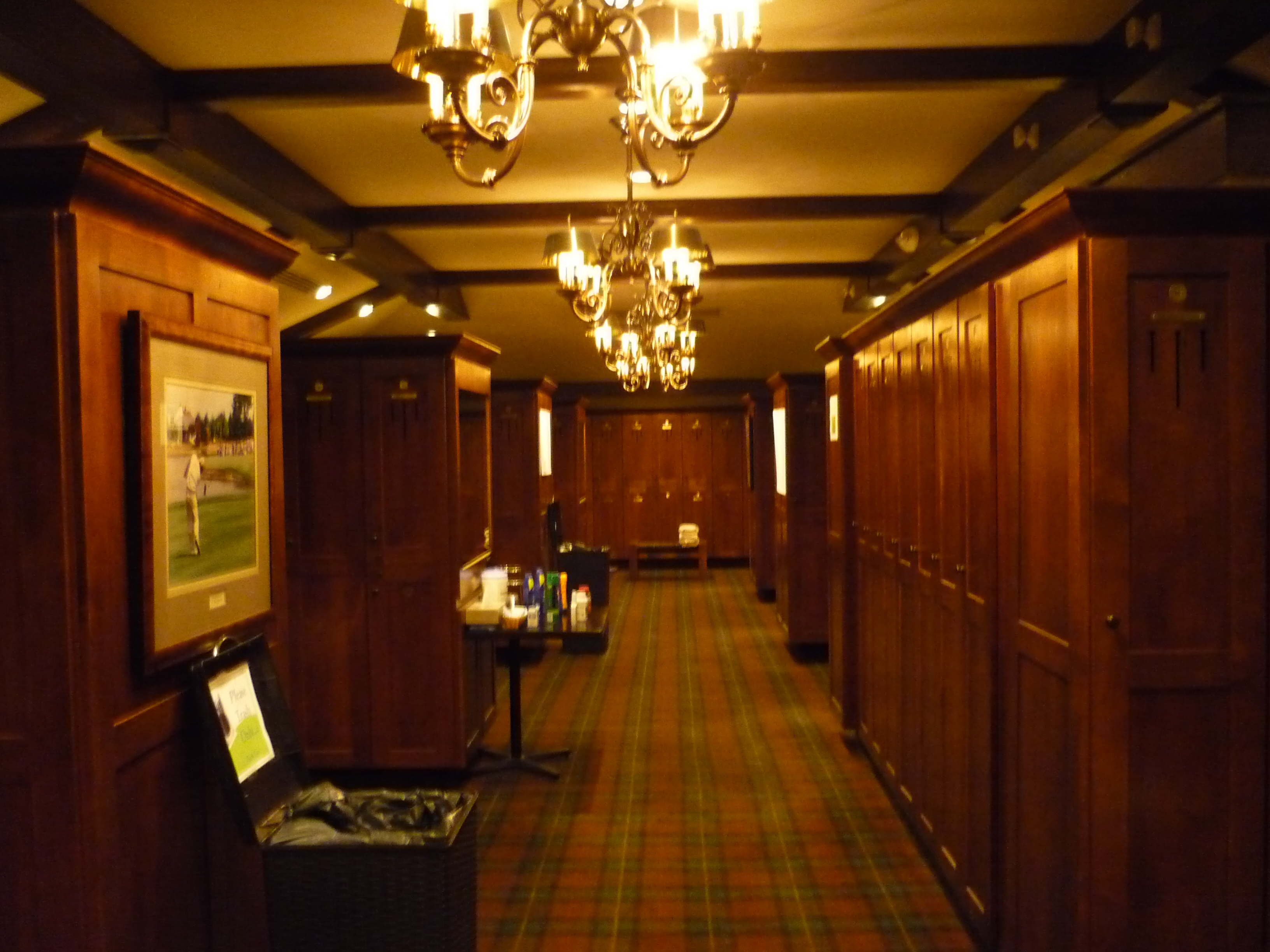
They have a picture commemorating John Daly, the winner of the 1991 PGA Championship.
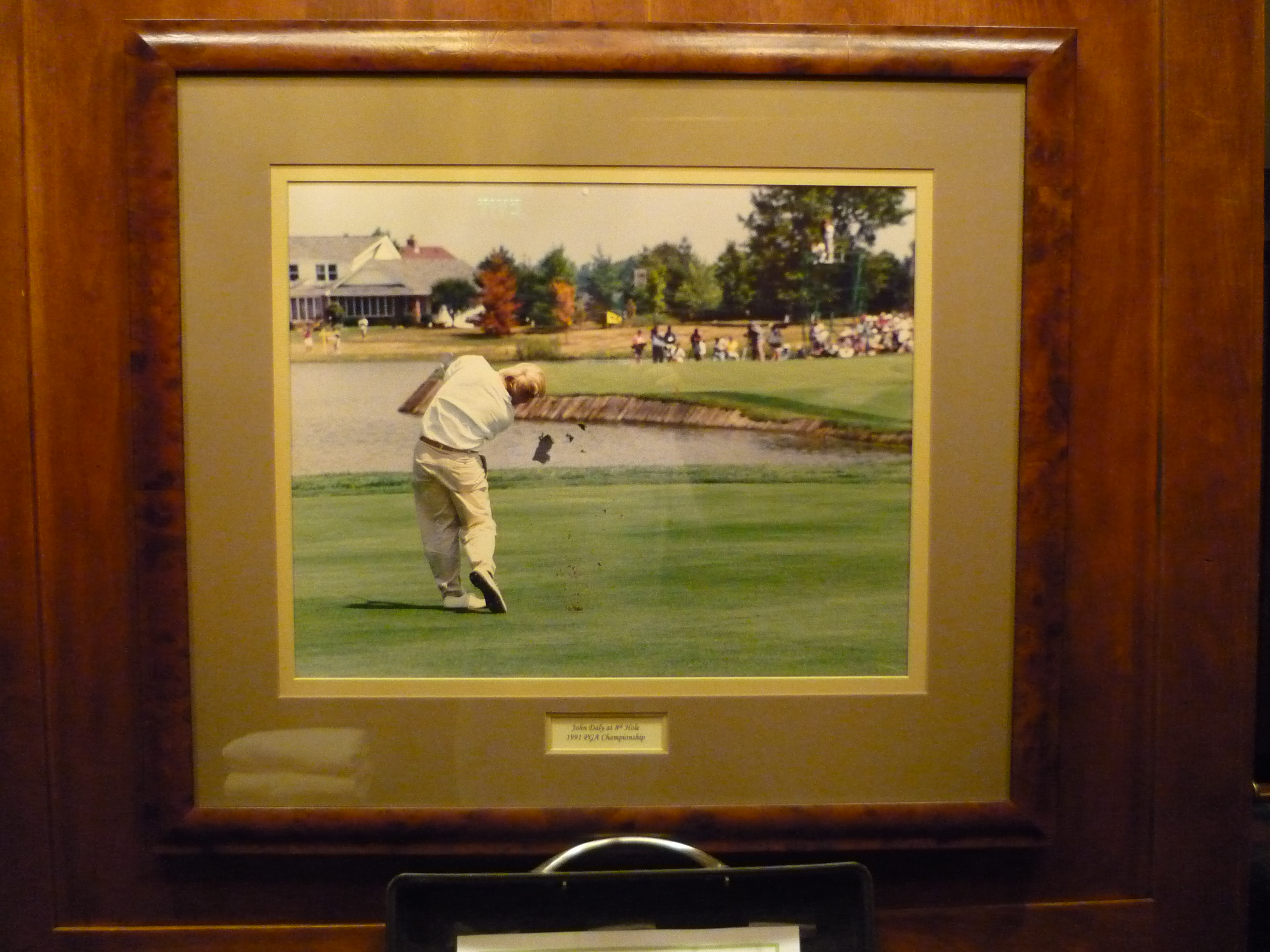
Let’s get into the course tour. We played the blue tees and all yardages are from there.
Hole 1 – 321 yards – Par 4
The opening hole definitely eases you into the round. It is somewhat of a tight fairway. I used a three-iron off the tee for position. One thing I noticed about this course is that it was very firm. It was green all around, but you got a lot of roll. It was one of the best-conditioned courses I have ever played.
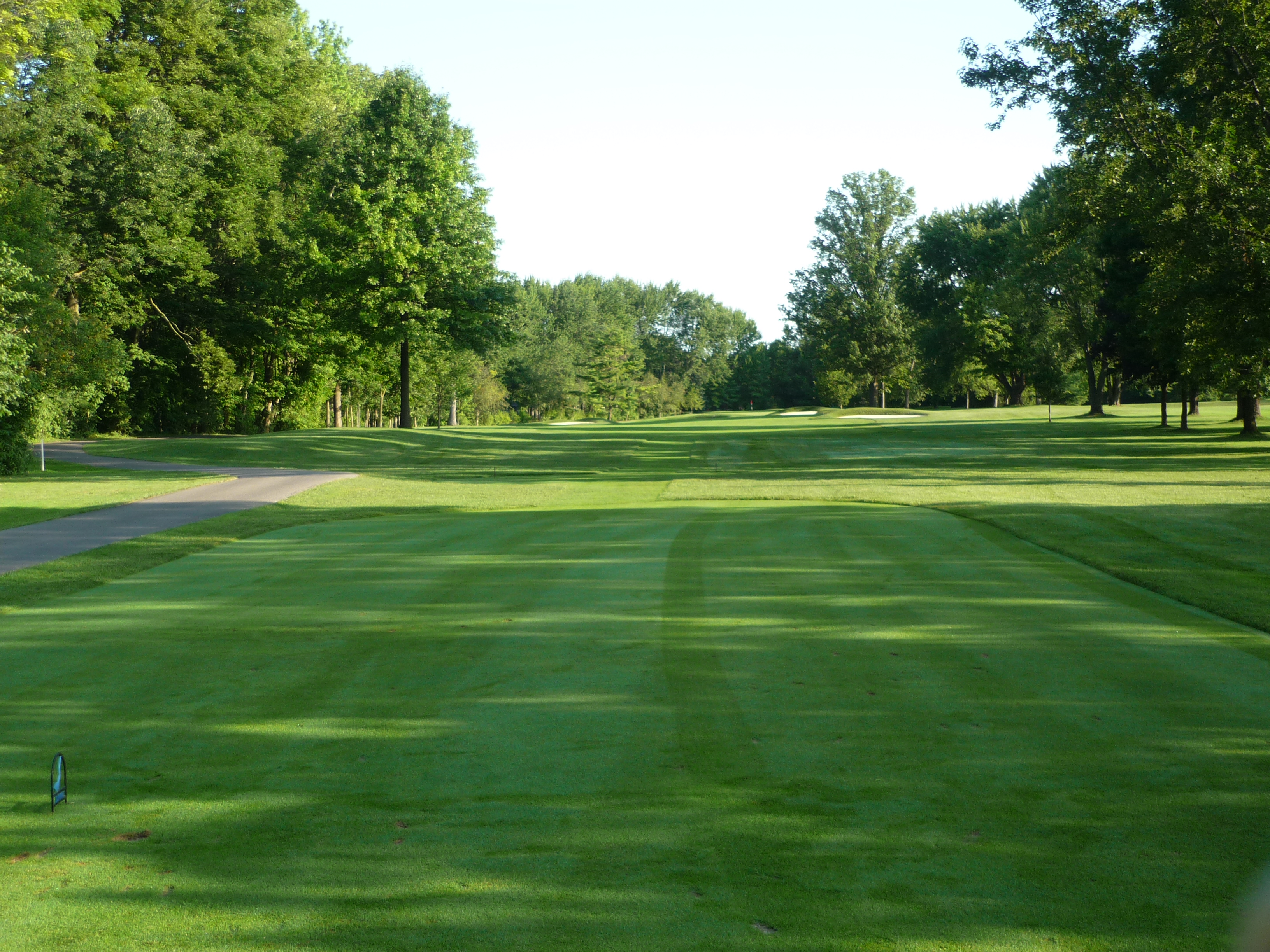
The approach shot can be seen below.
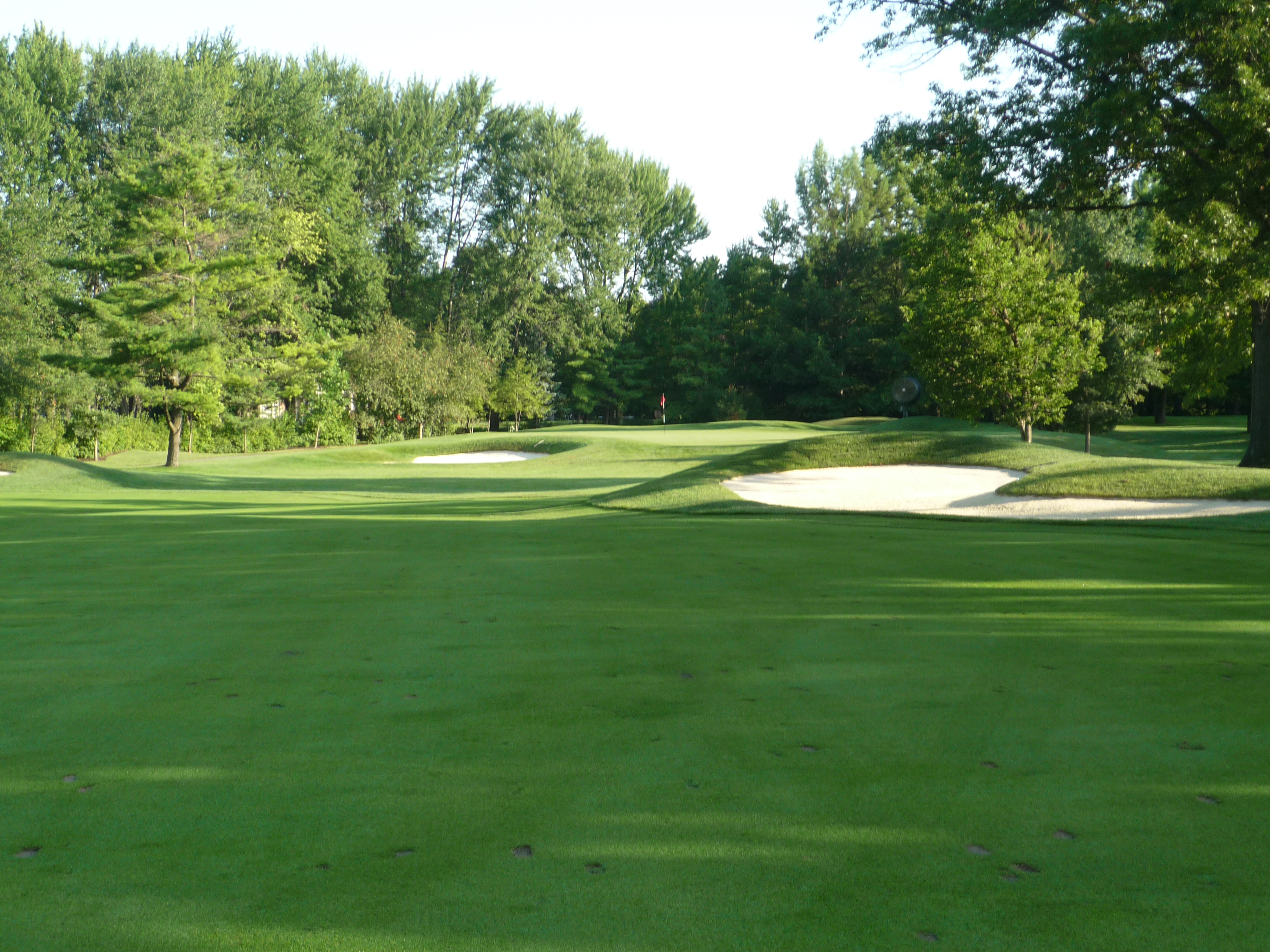
The green is not very large and is surrounded by some deep rough. You will definitely want to be putting here as much as possible.
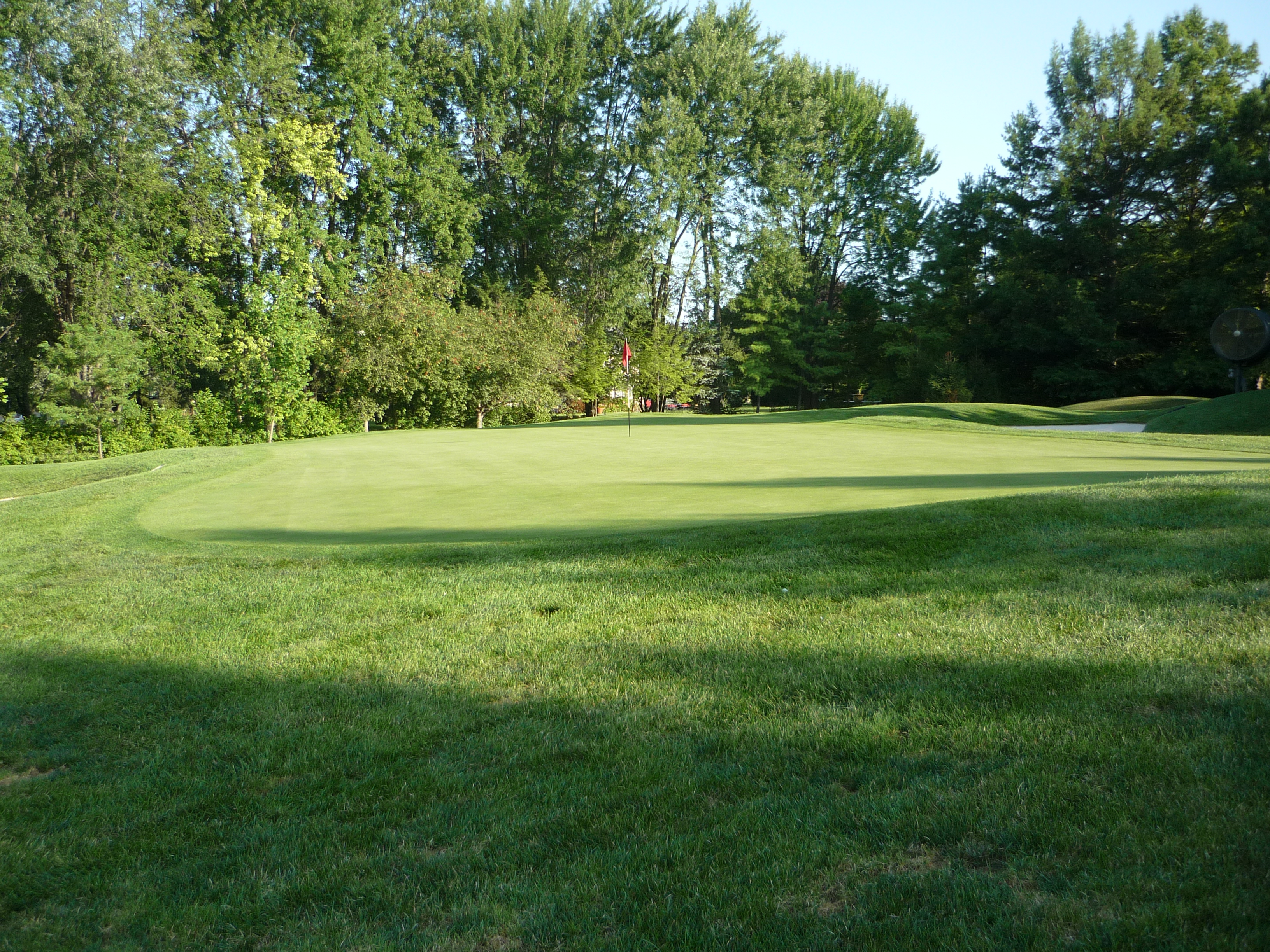
Hole 2 – 384 yards – Par 4
The second tee shot opens up more for you. You can swing away with the driver here with less worry.
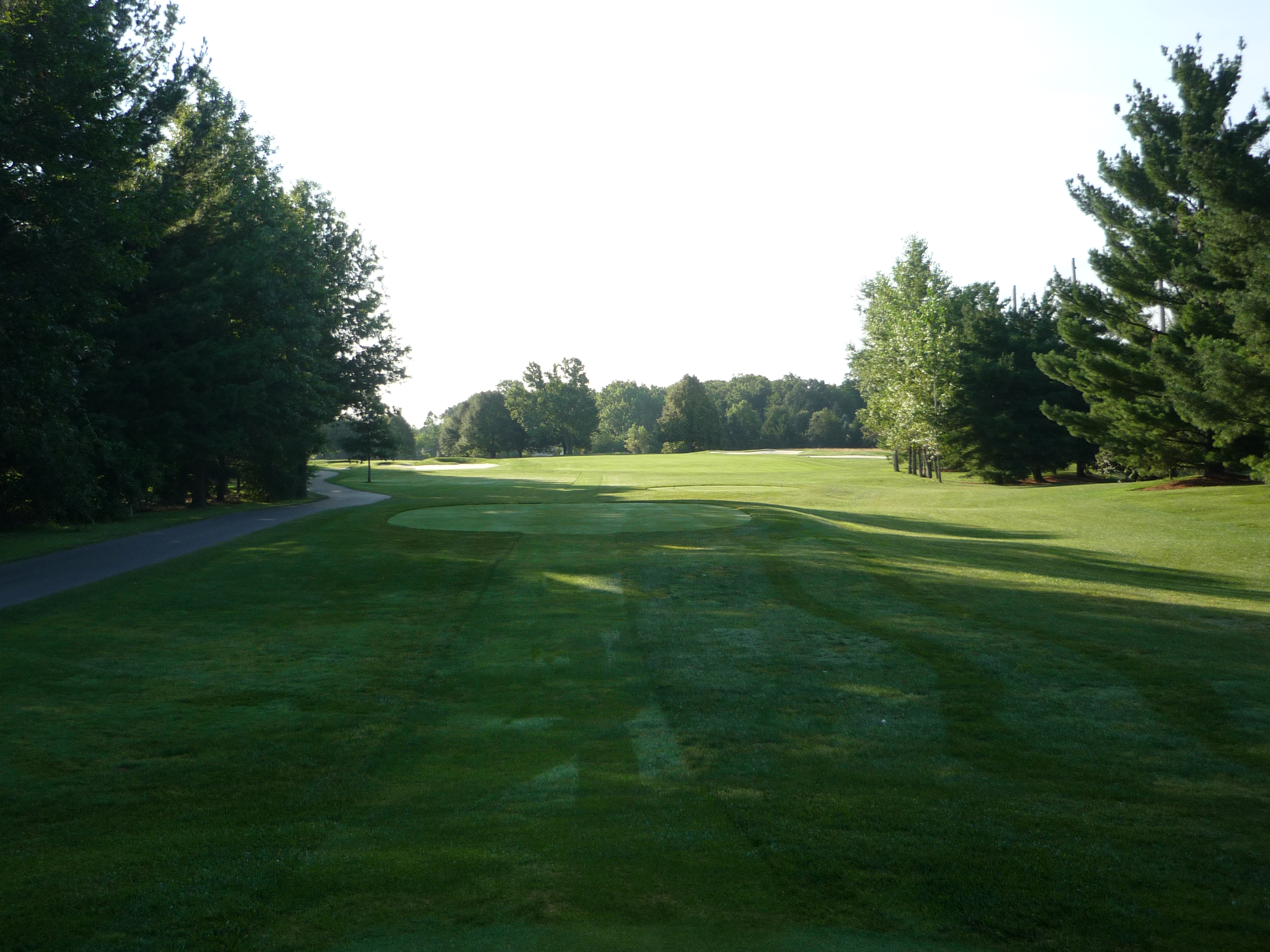
The hole bends slightly to the left and plays to the raised green you can see below. Avoid the bunkers to the right.
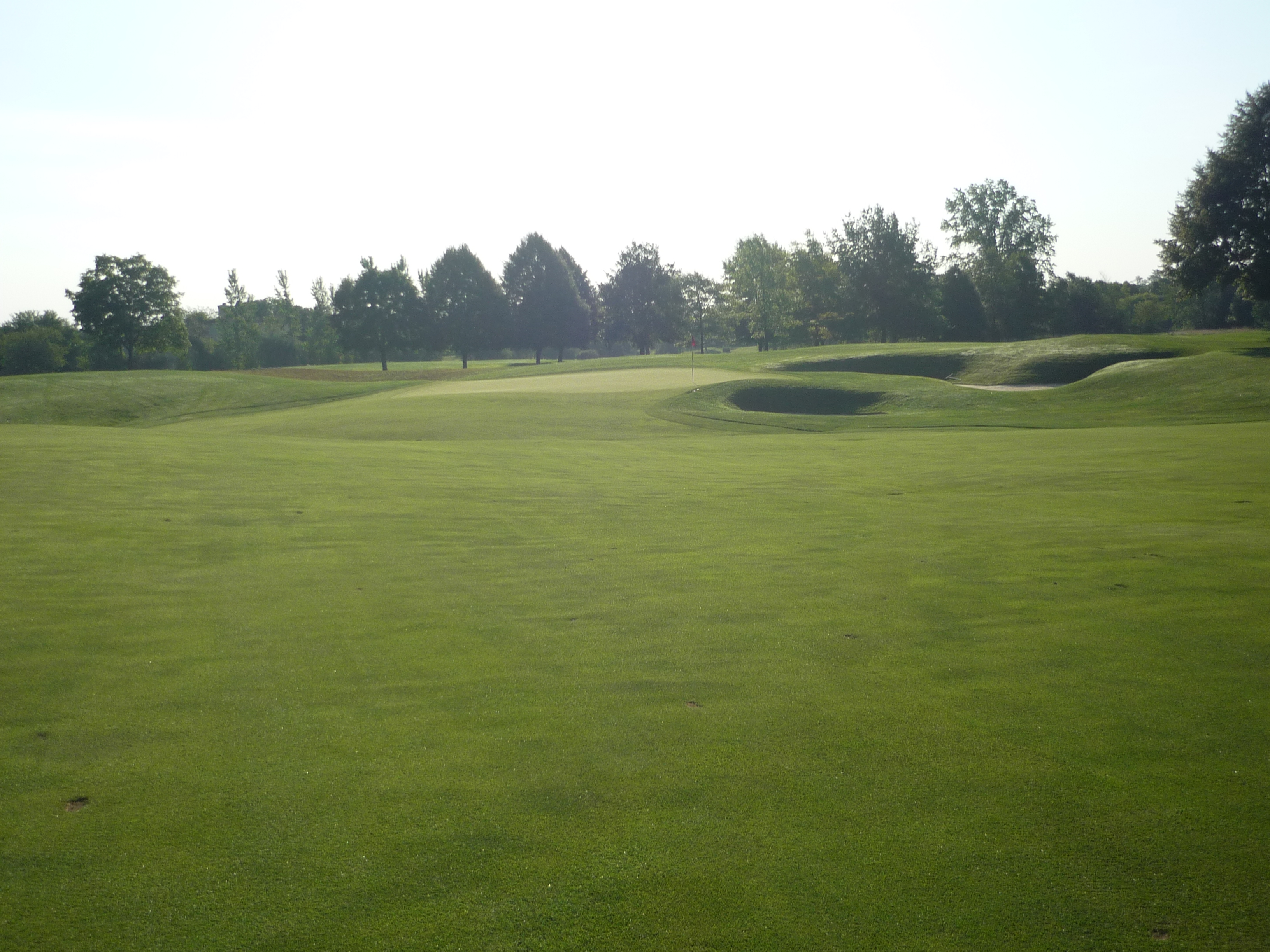
Here is a closer look at the green.
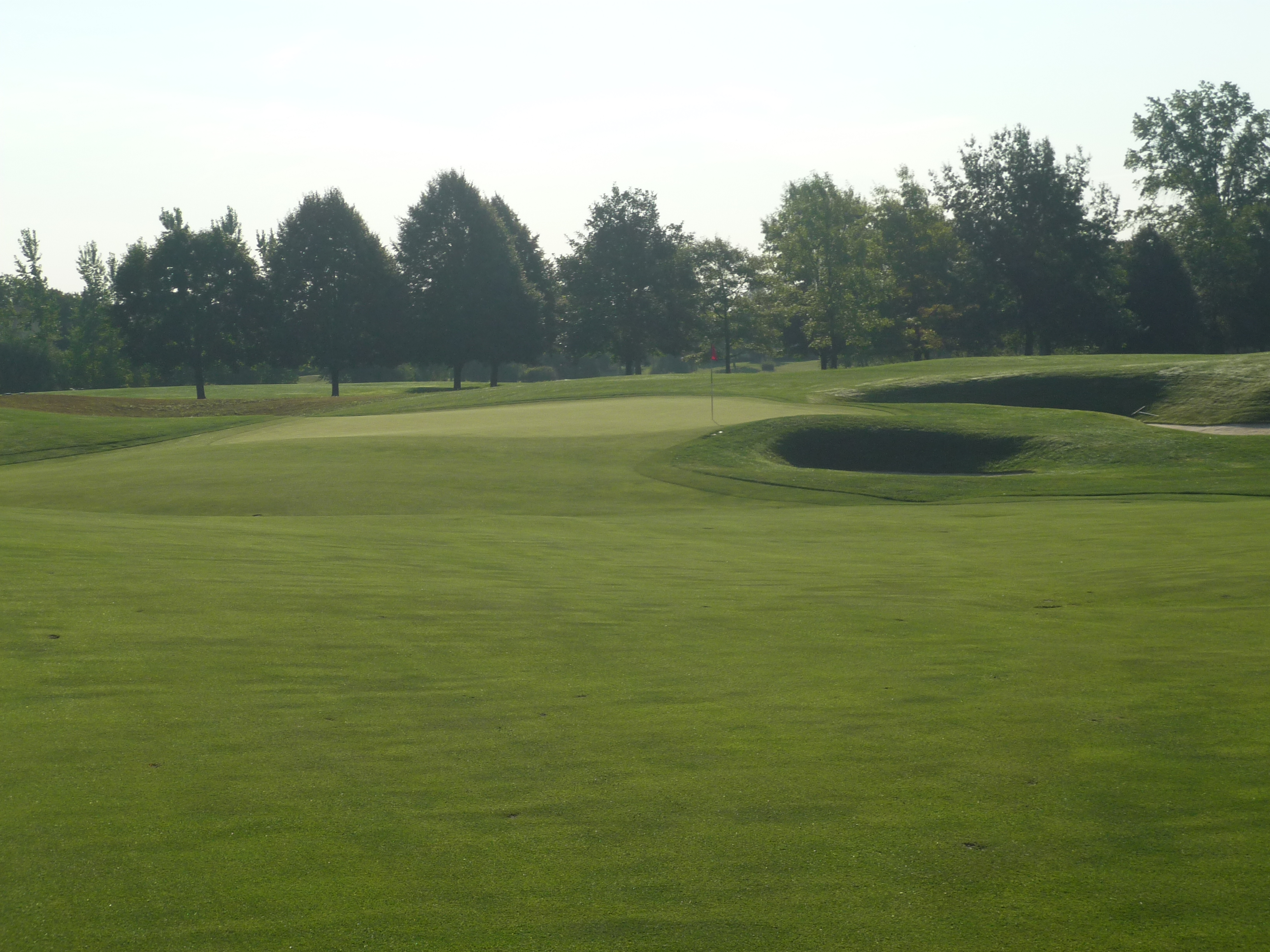
You can see the slope of the green in the photo below. Anything on the front left is in danger of rolling off the putting surface.
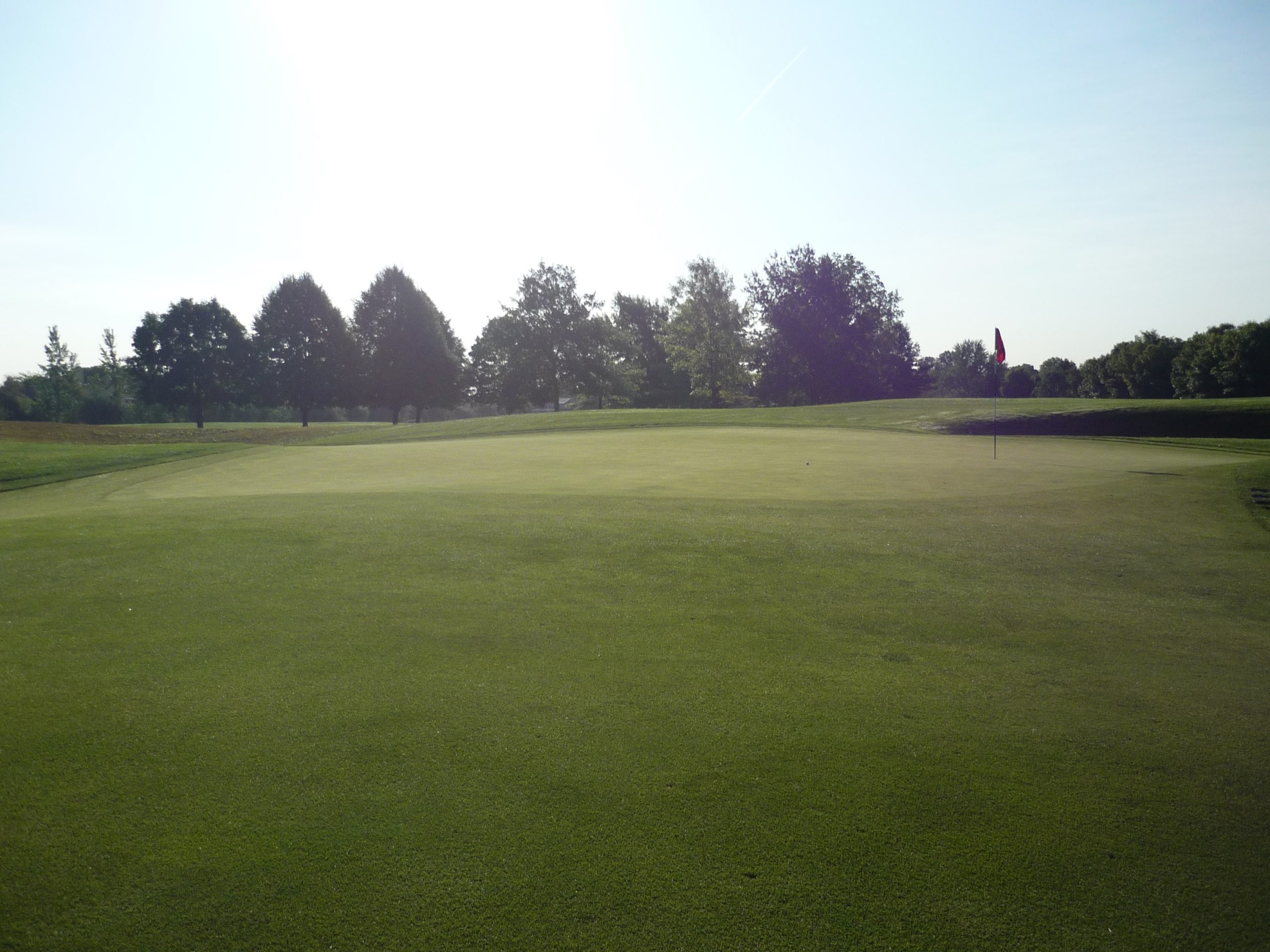
Hole 3 – 171 yards – Par 3
This hole caused some trouble for me. A good shot is really anywhere on the green. There is more trouble left.
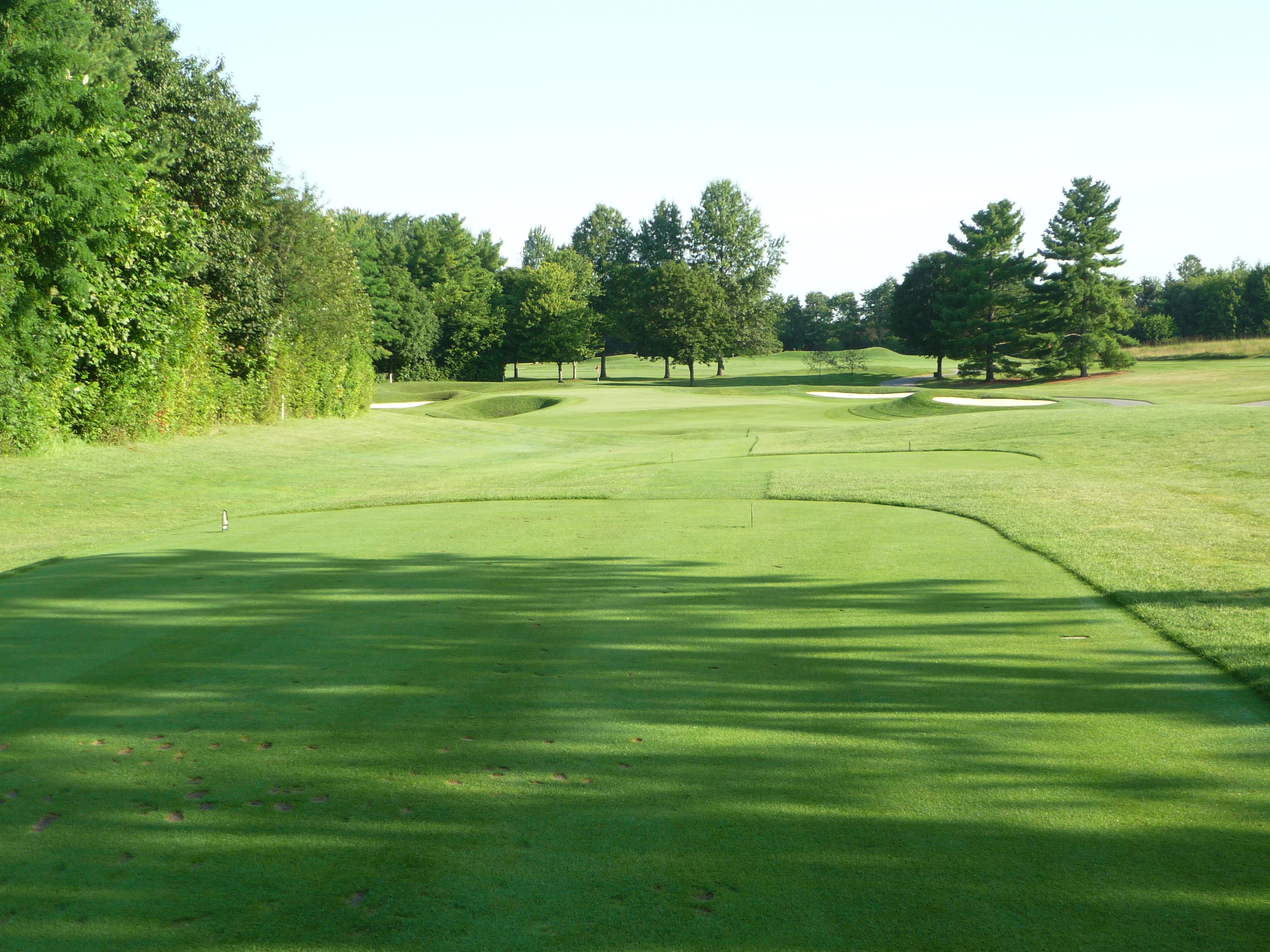
A closer shot shows the bunkers guarding the green. The front one on the left is particularly troublesome.
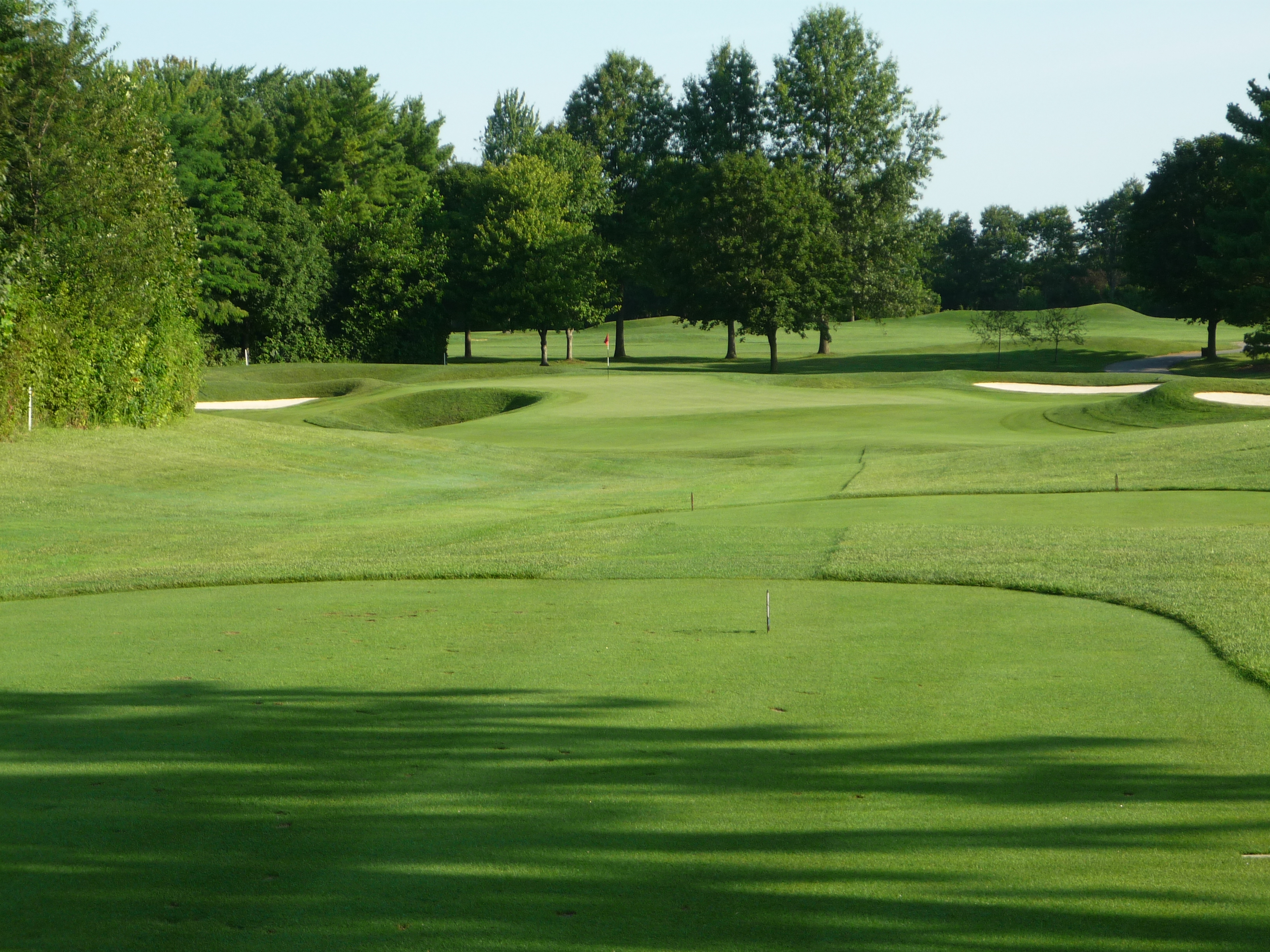
This shot from behind the green shows the hourglass shape of the putting surface. This definitely makes it feel like two separate greens.
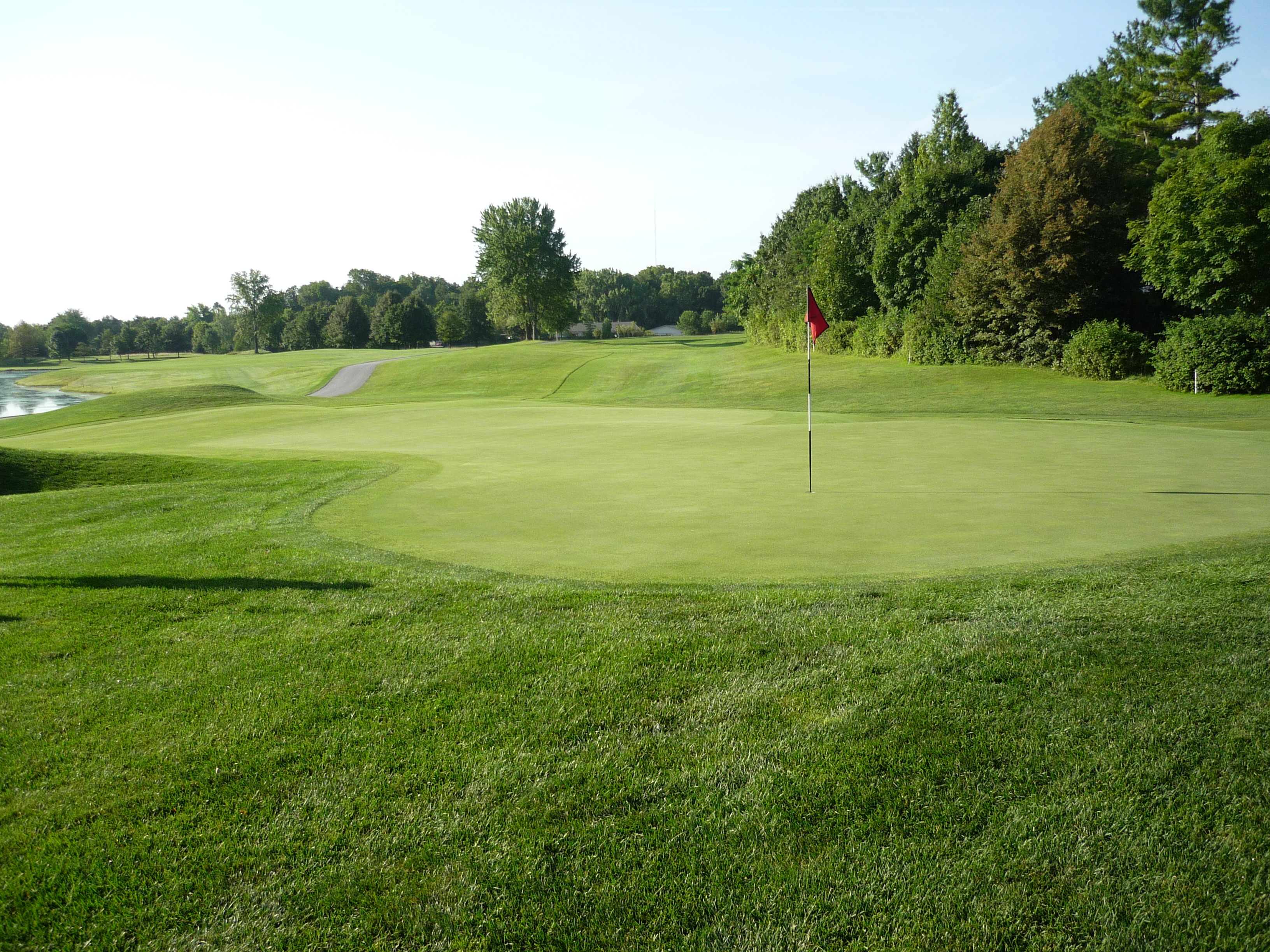
Hole 4 – 408 yards – Par 4
This is the first brutish hole of the day. There is a good bit of room out there, but bunkers are definitely in play. The trees also make for hard shots on the right side of the hole.
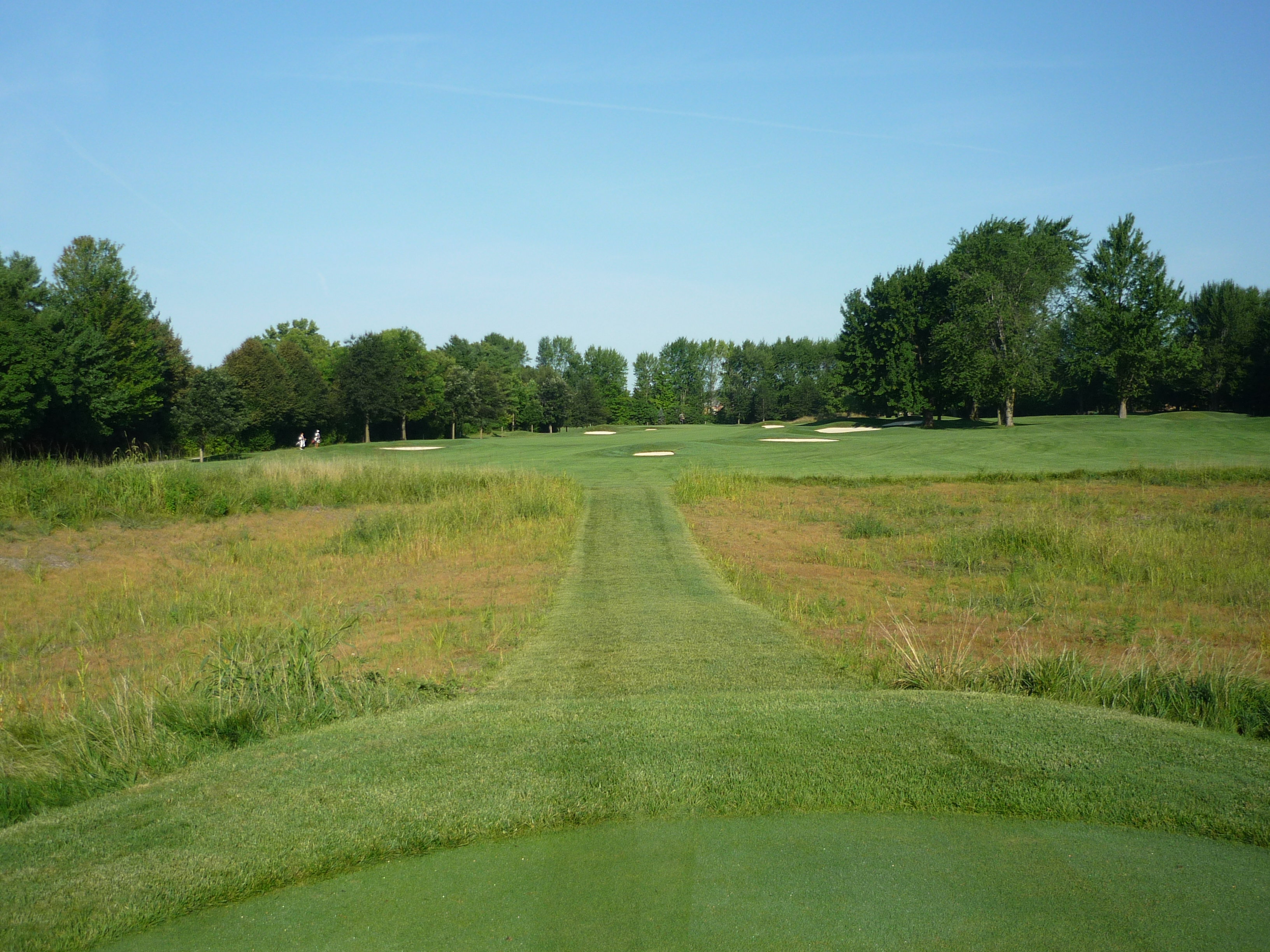
The approach shot is mostly level. Your only obstacle is the bunker in front of the green. There is some open space to allow for a running shot, which is possible here due to the firmness of the course.
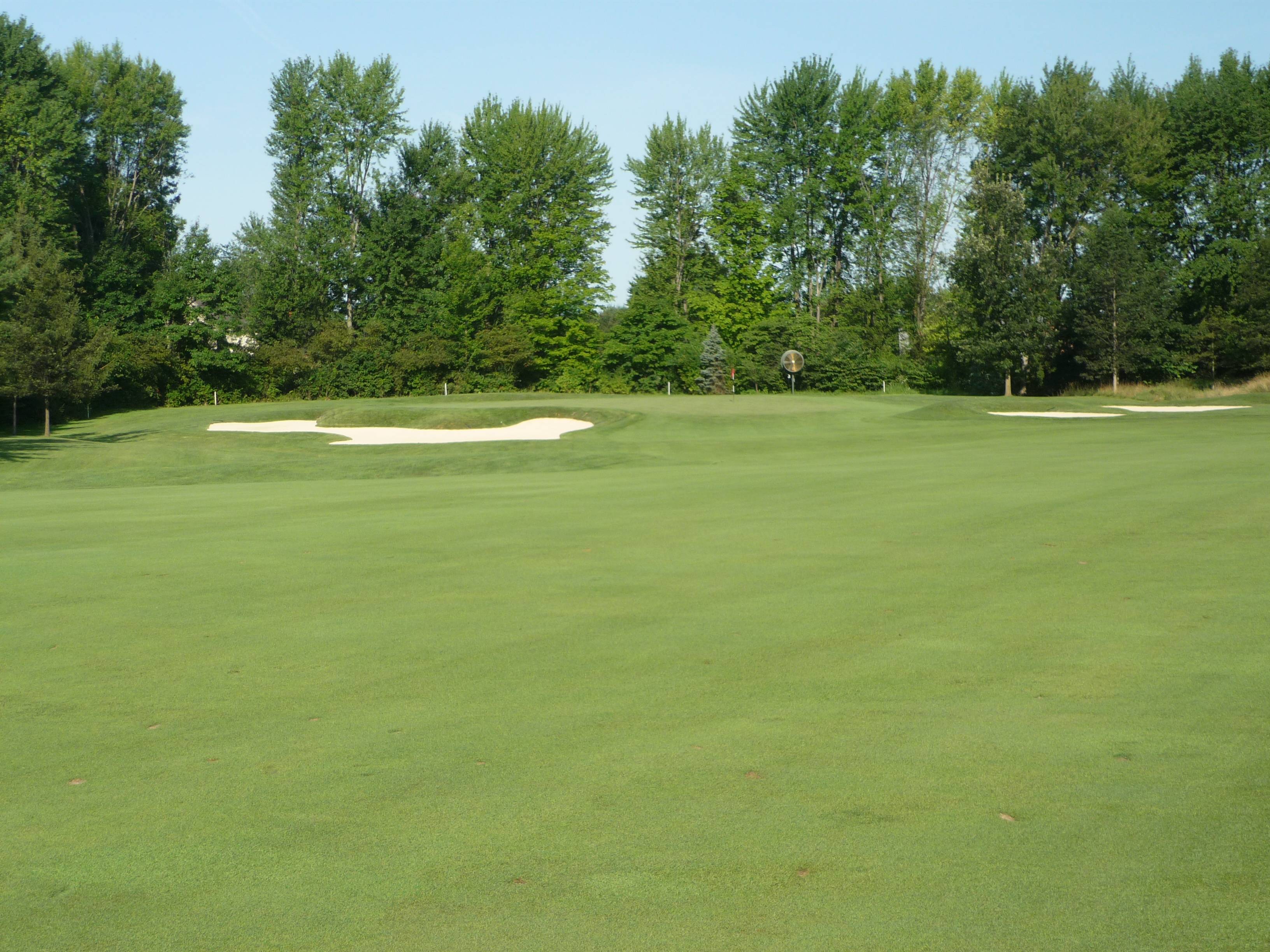
Here is a closer look at the green.
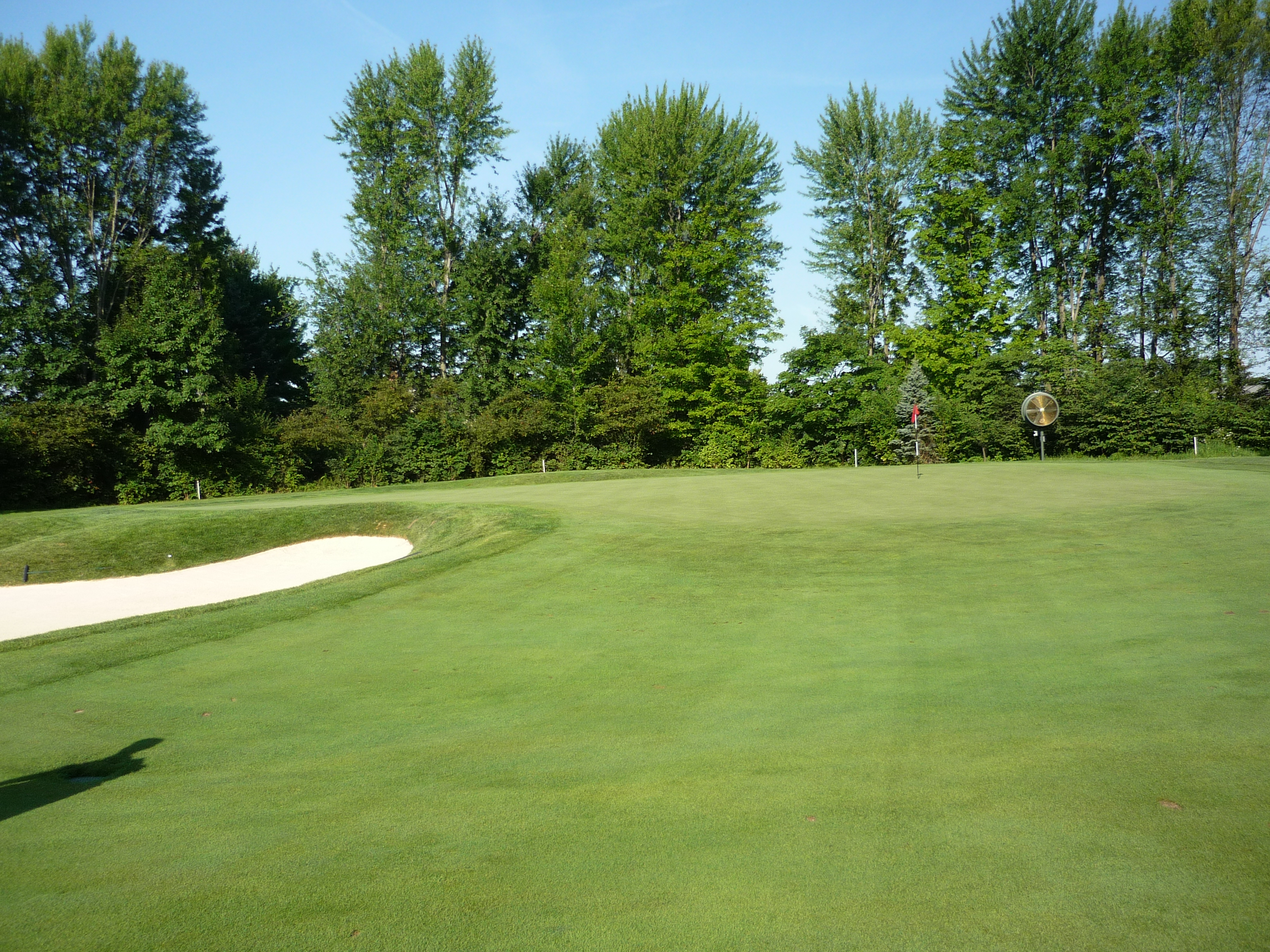
Hole 5 – 591 yards – Par 5
This is a three-shot hole for all but the longest hitters. With the trees down the right side, it favors a fade. As long as you can hit it is the strategy here.
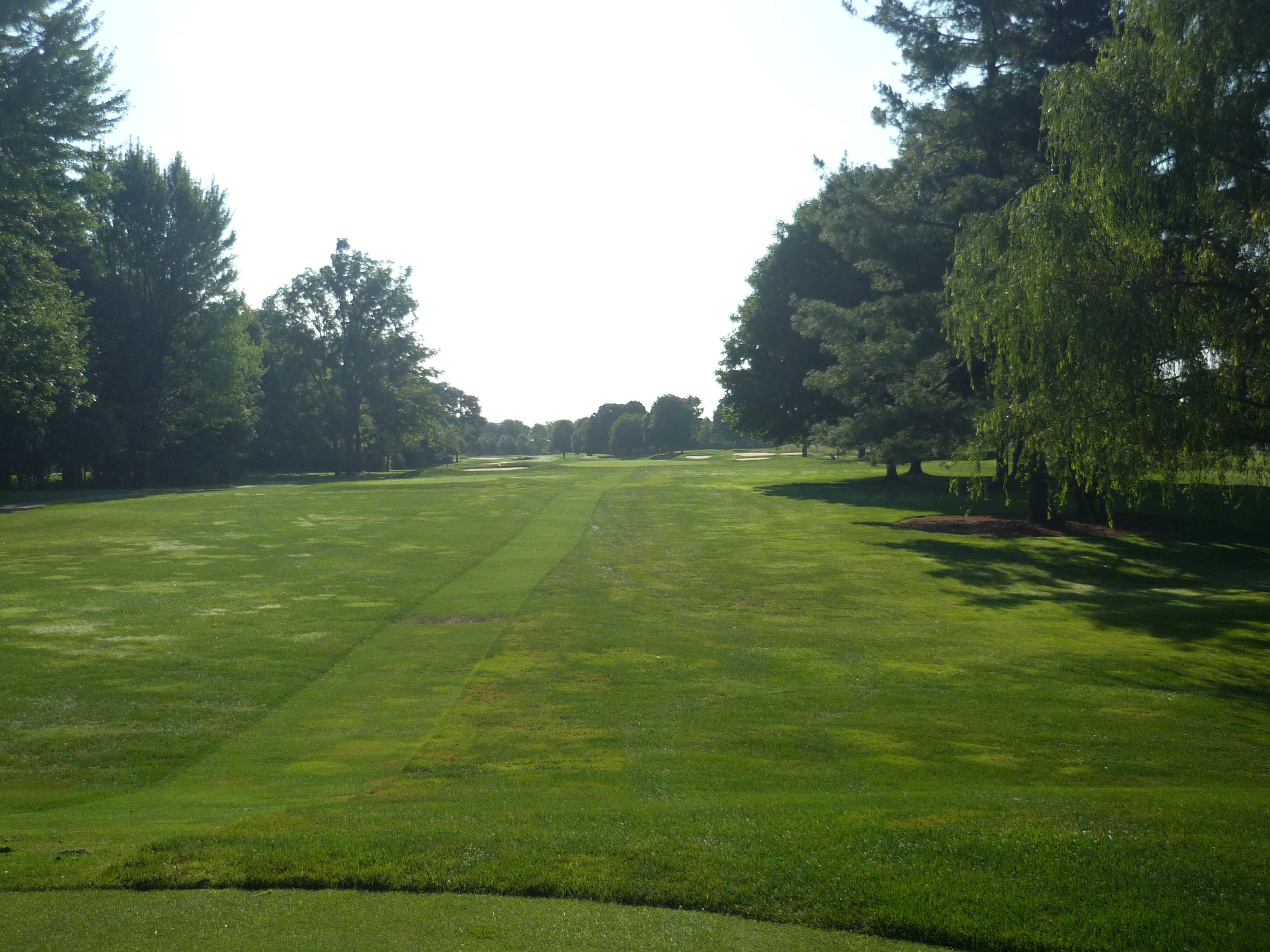
The long second shot can be seen below.
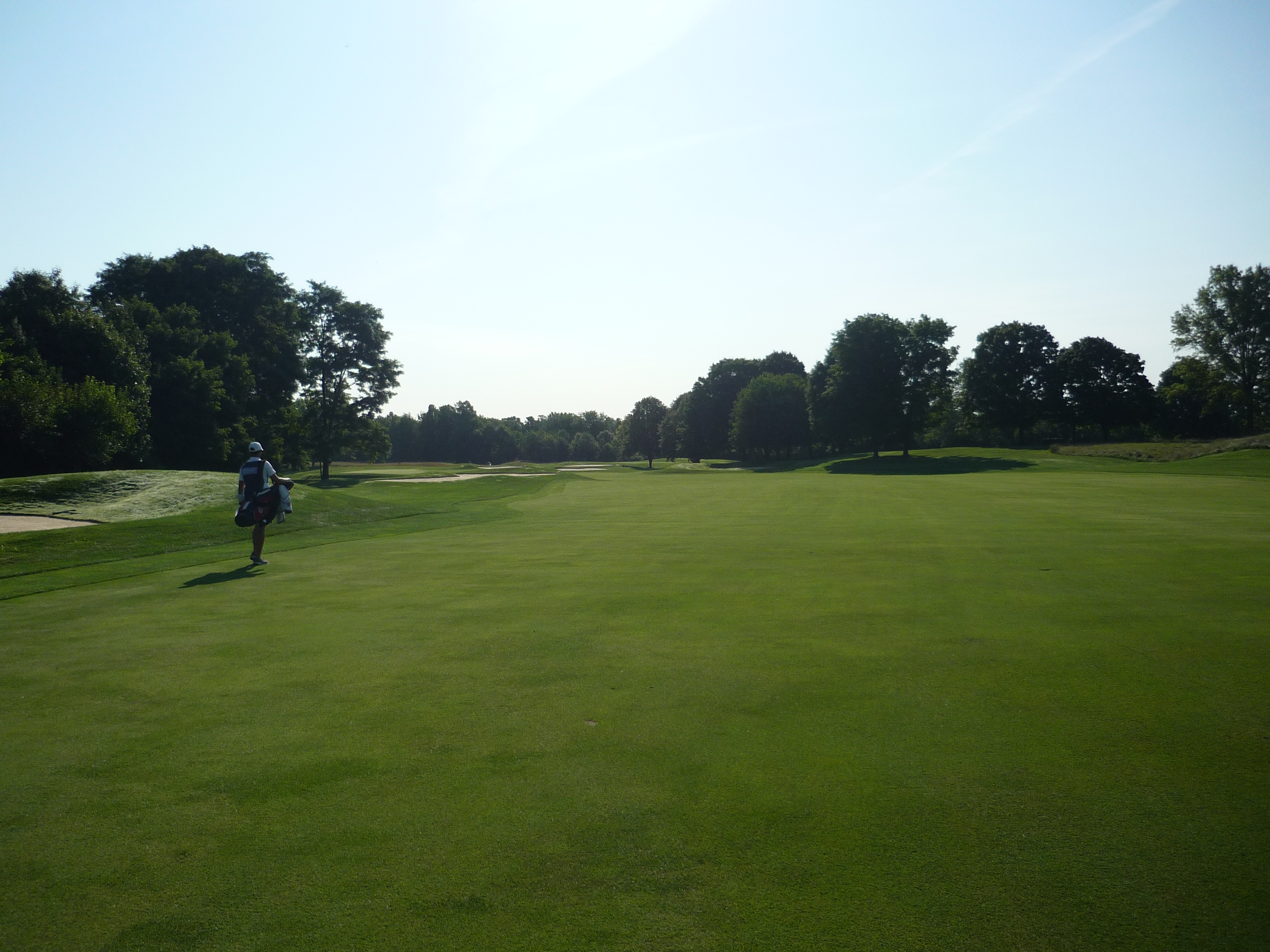
The approach shot must deal with some bunkers. The one on the left is deep as you can see. Hopefully a wedge is all you need.
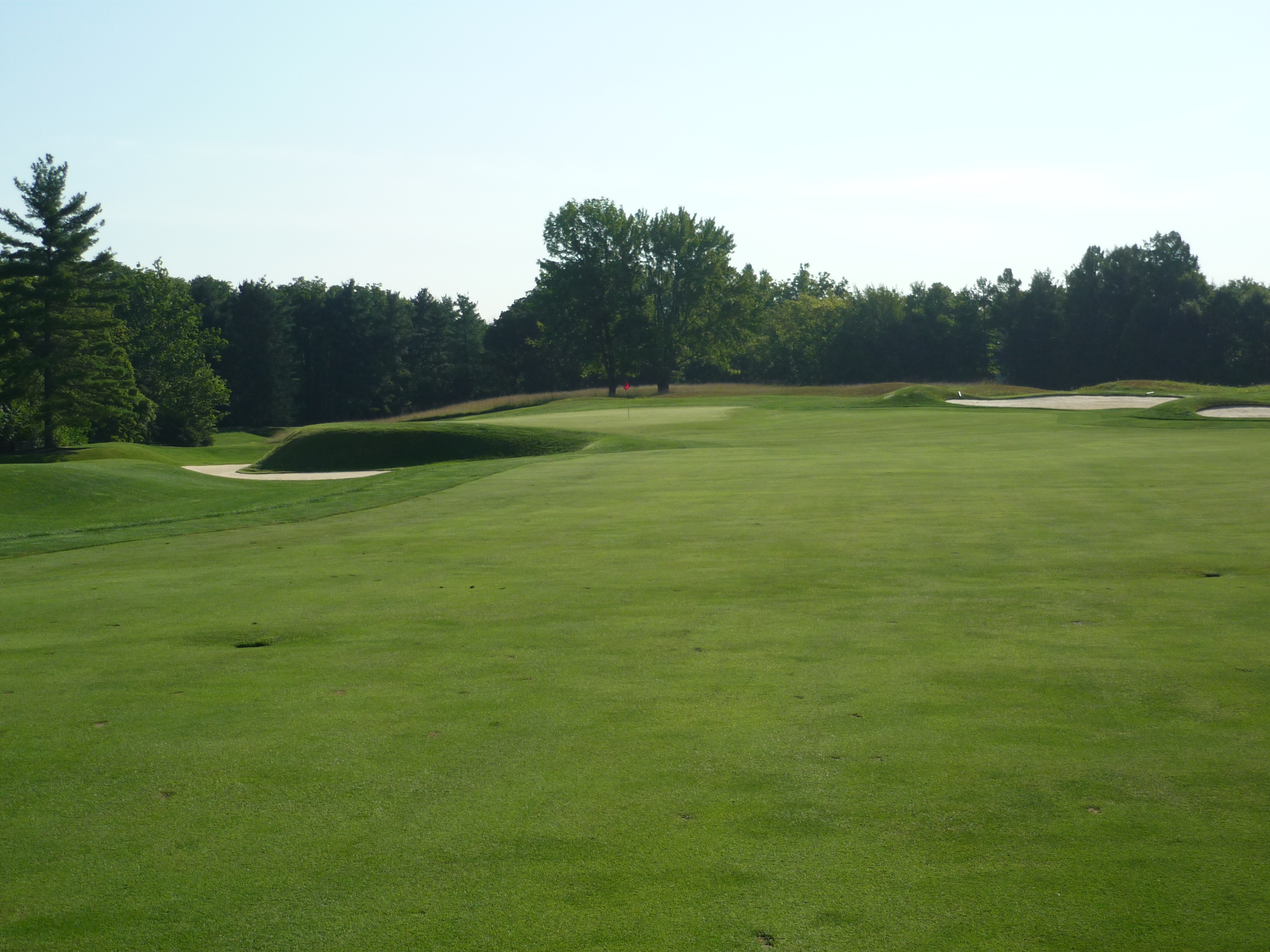
A closer look at the green shows the depth of the bunker.
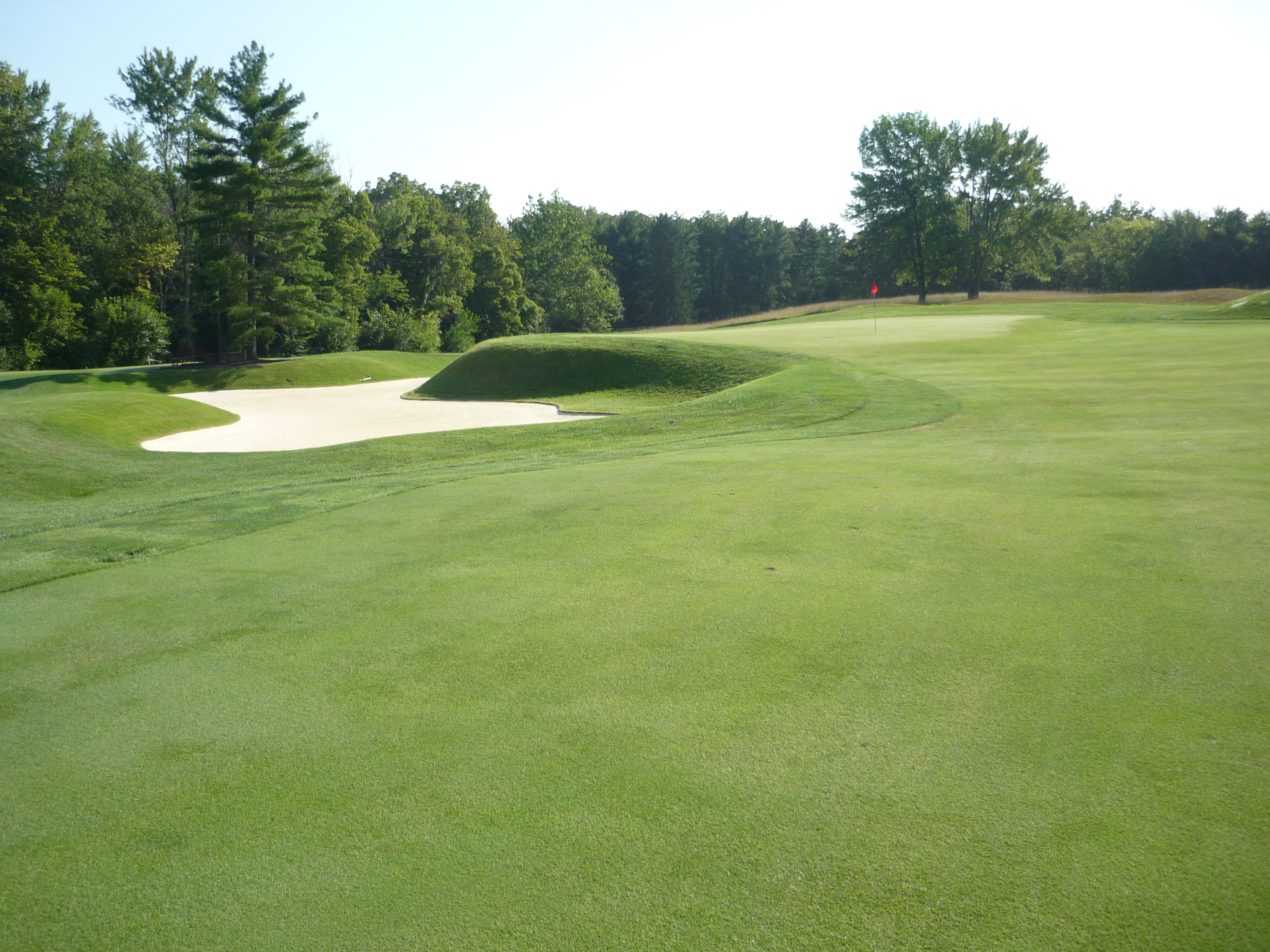
Here is another angle of the green. Note the slopes left and right of the flag.
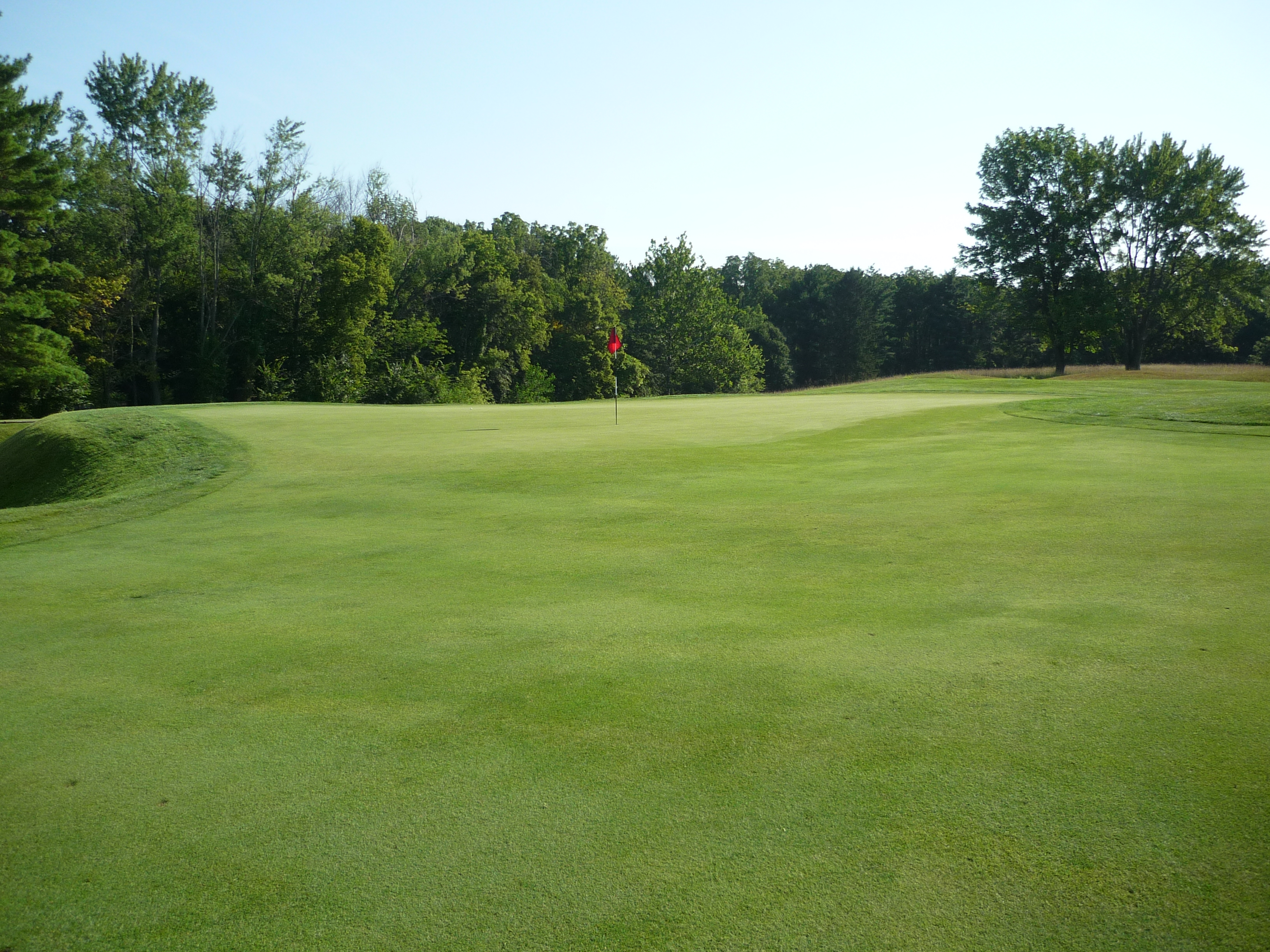
Hole 6 – 183 yards – Par 3
This is iconic Pete Dye. You can see railroad ties around the water. The covered bridge is the image I had of this course before I played. The hole itself is great with the forced carry over the water to an angled green.
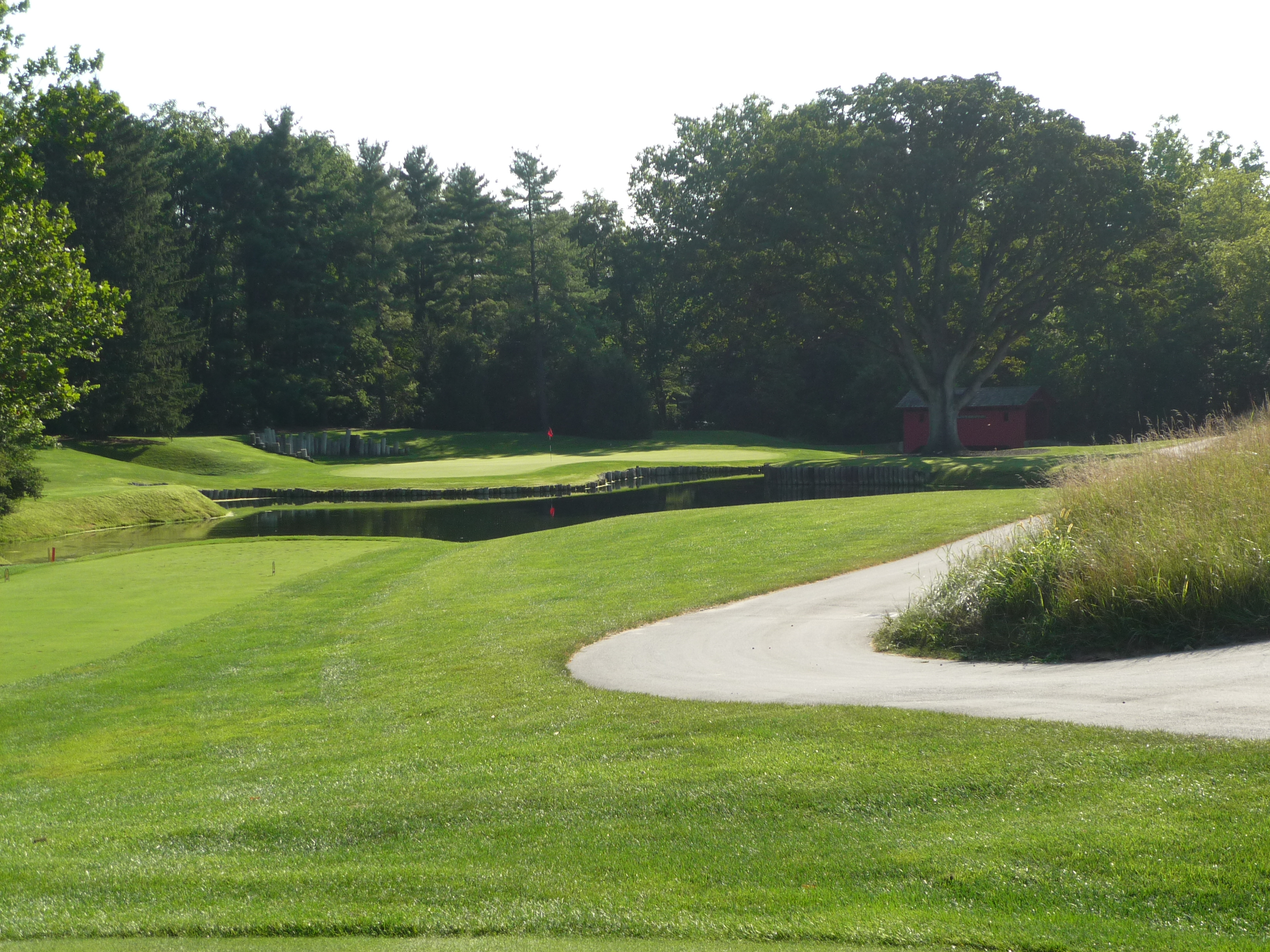
The closer look at the green shows it angles away from the tee. It is pretty large to accommodate the tee shots.

Here is another angle of the green. They are hard at work reading the green.
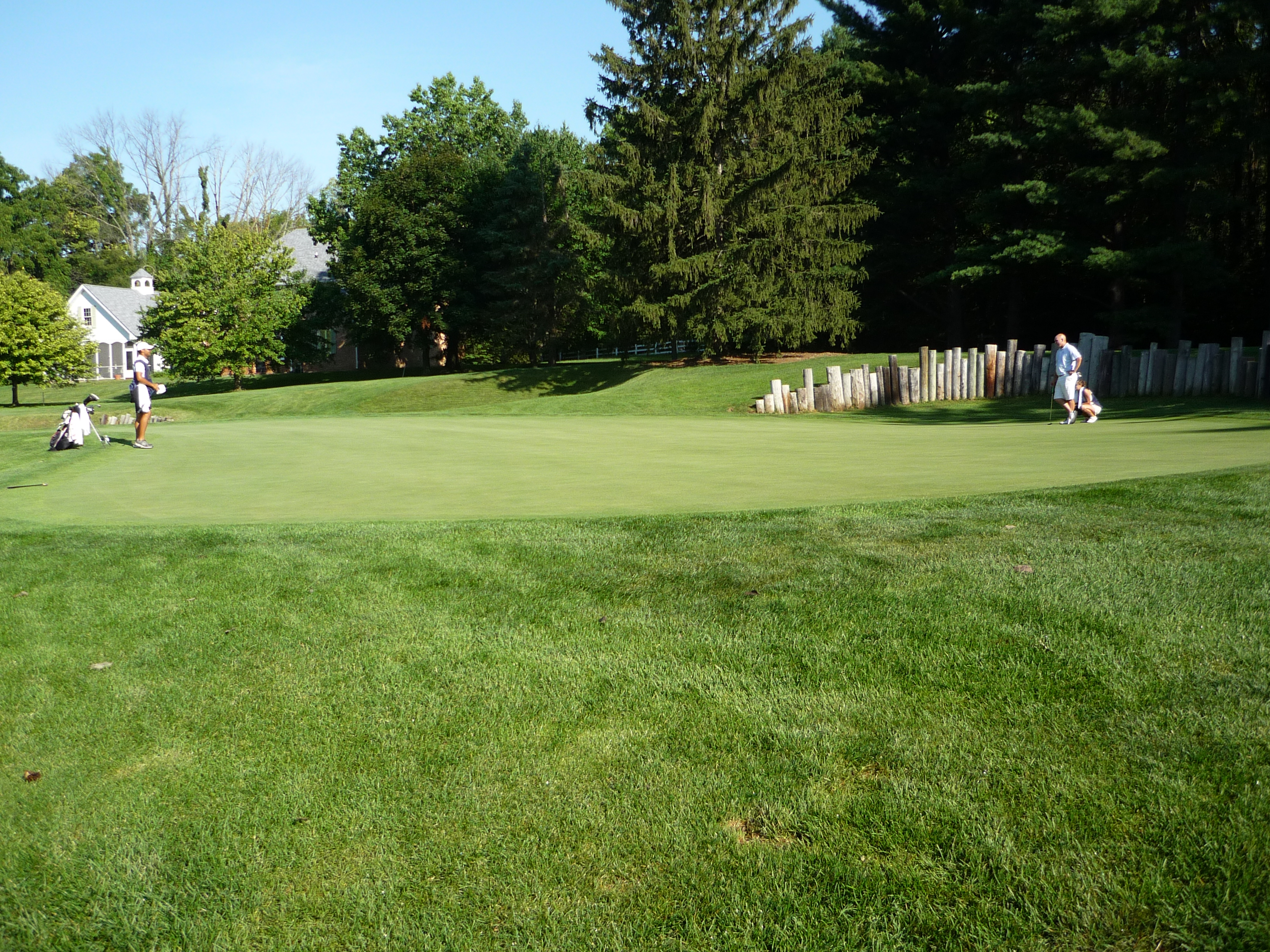
The view from the next tee was a cool one. It gives you the full view of the green, pond, and tree.
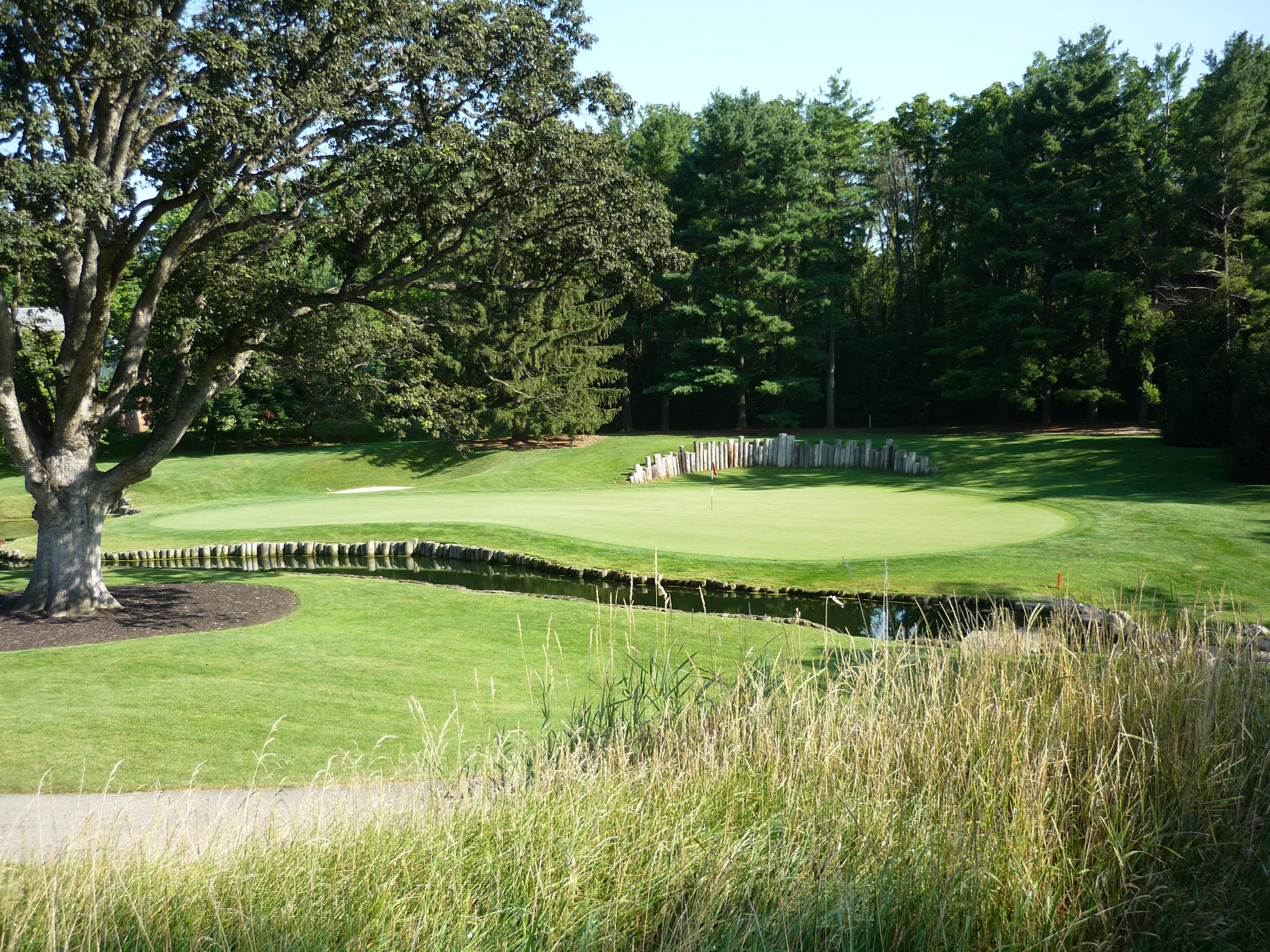
Here is the famed covered bridge.
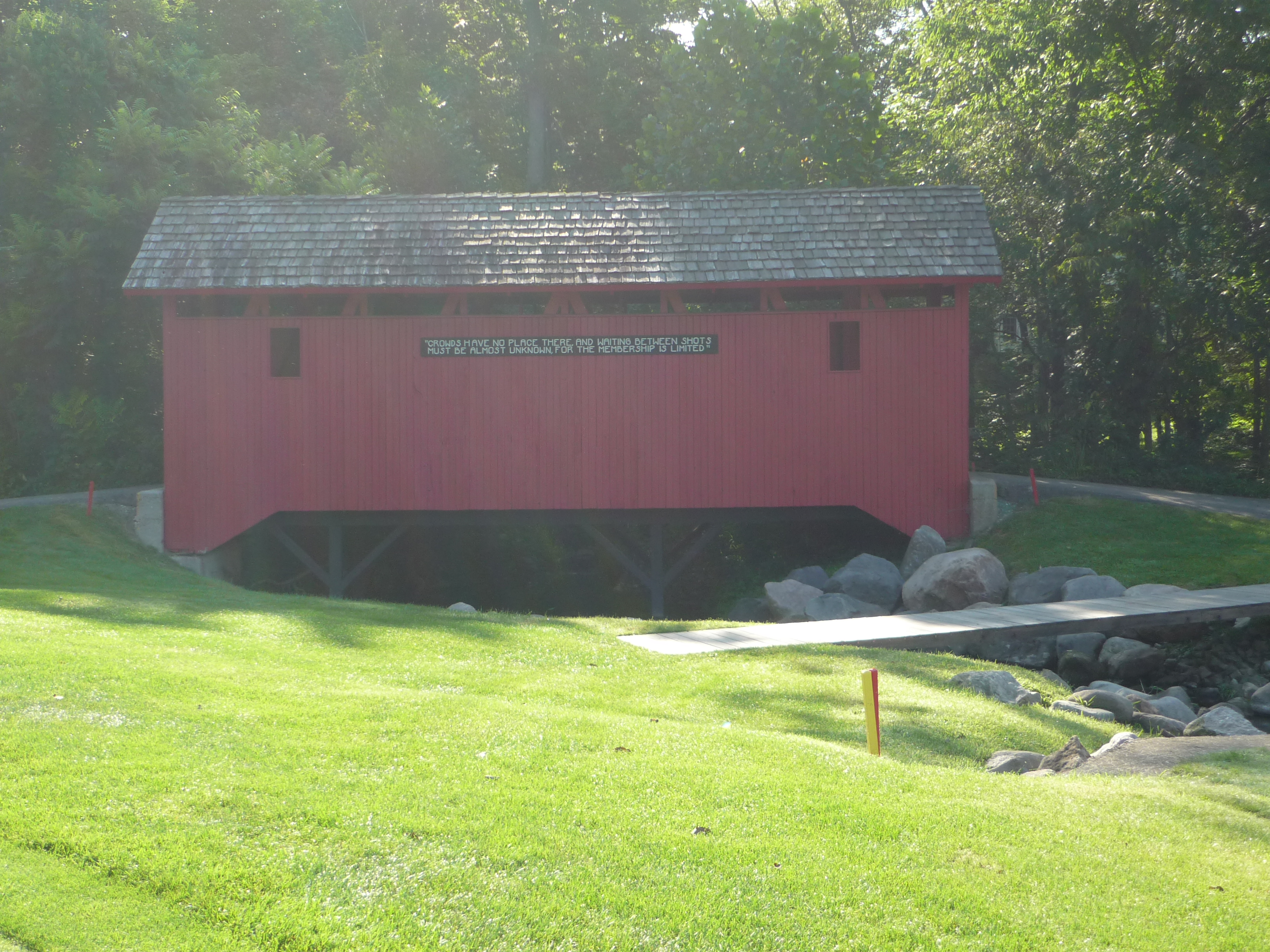
Here is the entrance.
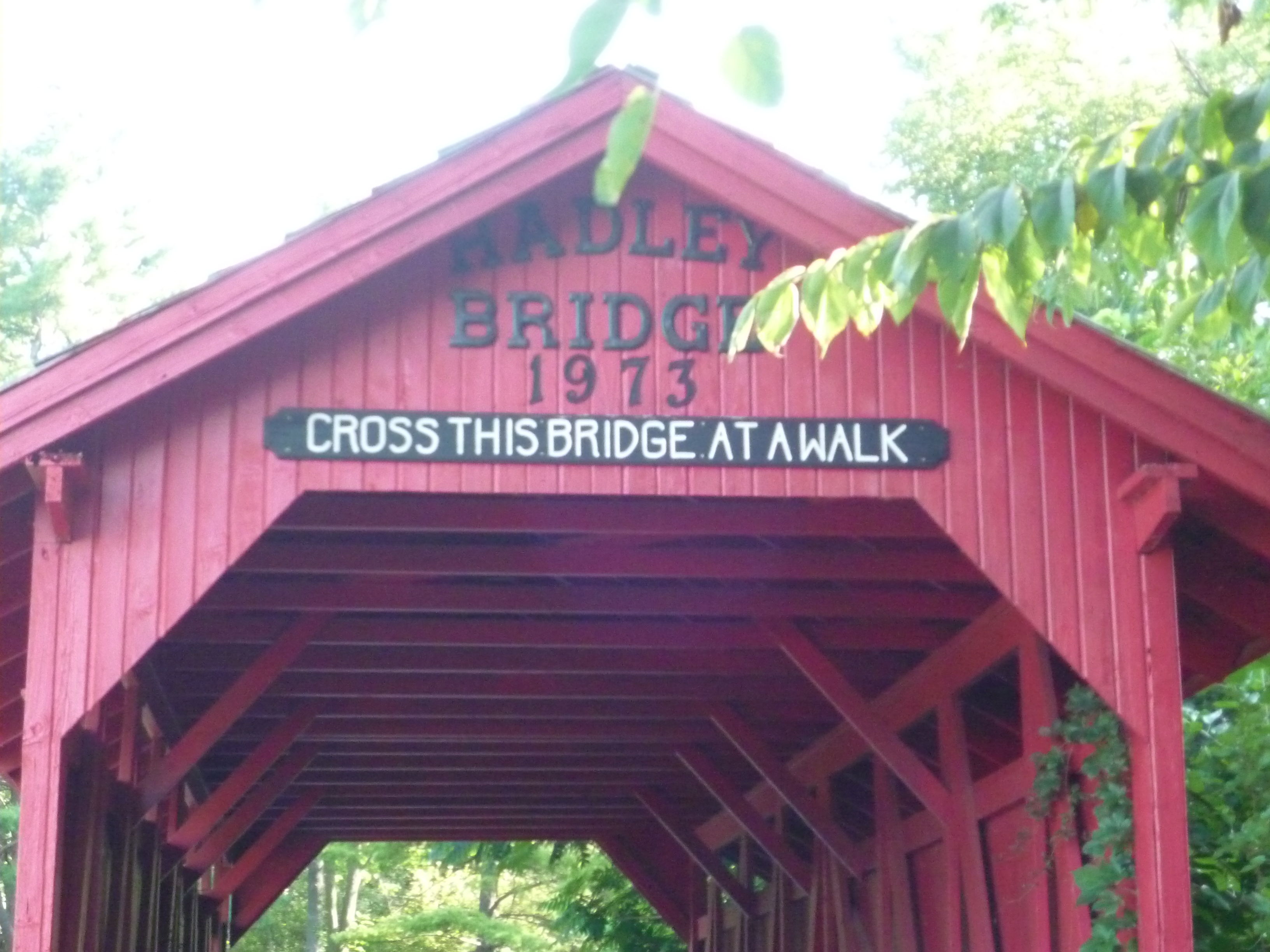
The quotation to sum up Crooked Stick. We didn’t see anyone else after we teed off.
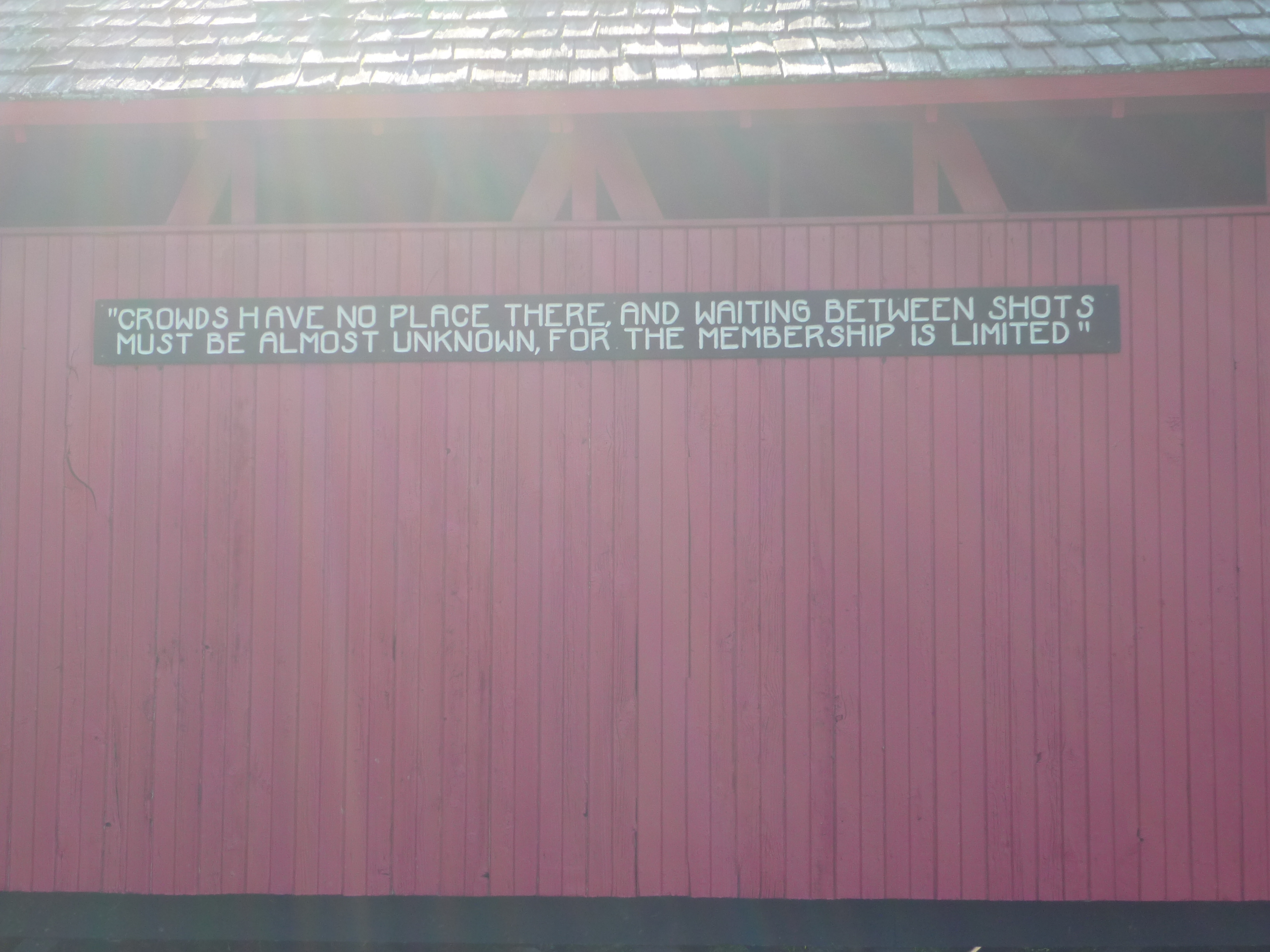
Hole 7 – 372 yards – Par 4
You have a straightaway hole here that doesn’t always necessitate hitting the driver. There are trees up both sides, but if you miss to the right you will have a better angle.
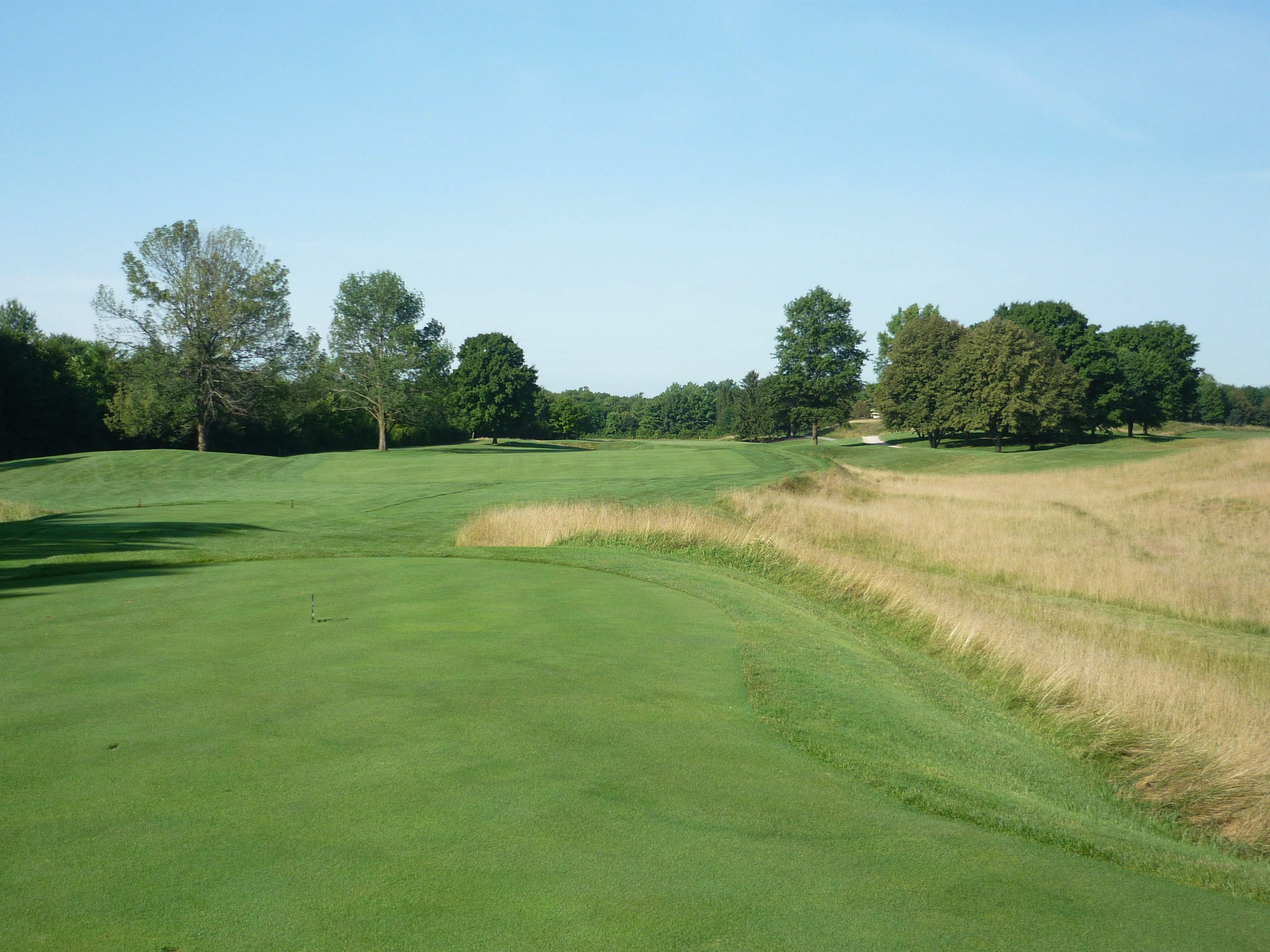
The approach shot plays to a slightly raised green that is open in front.
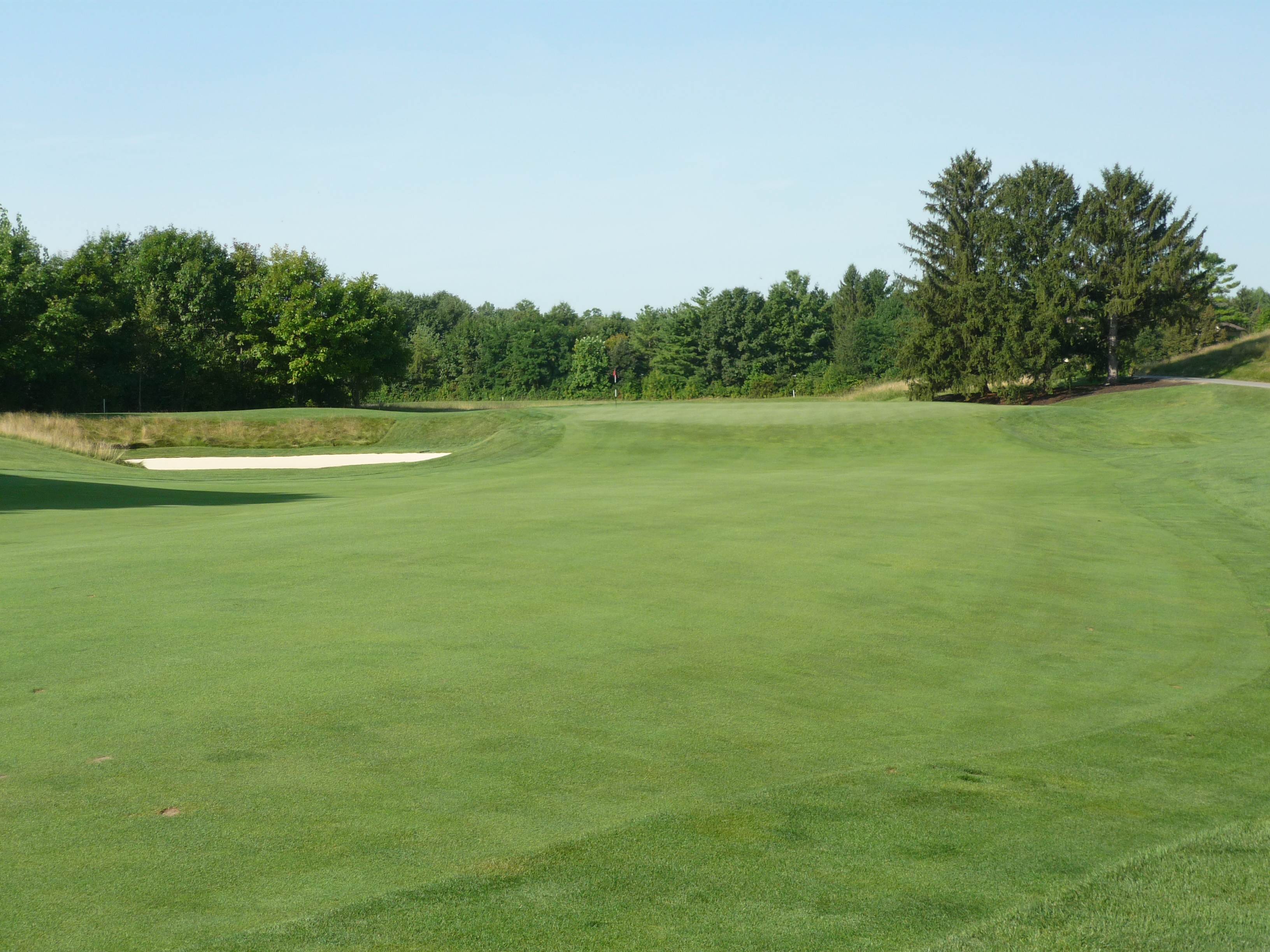
Here is a shot of the green from the back, left side. It is not as sloped as some of the other ones.
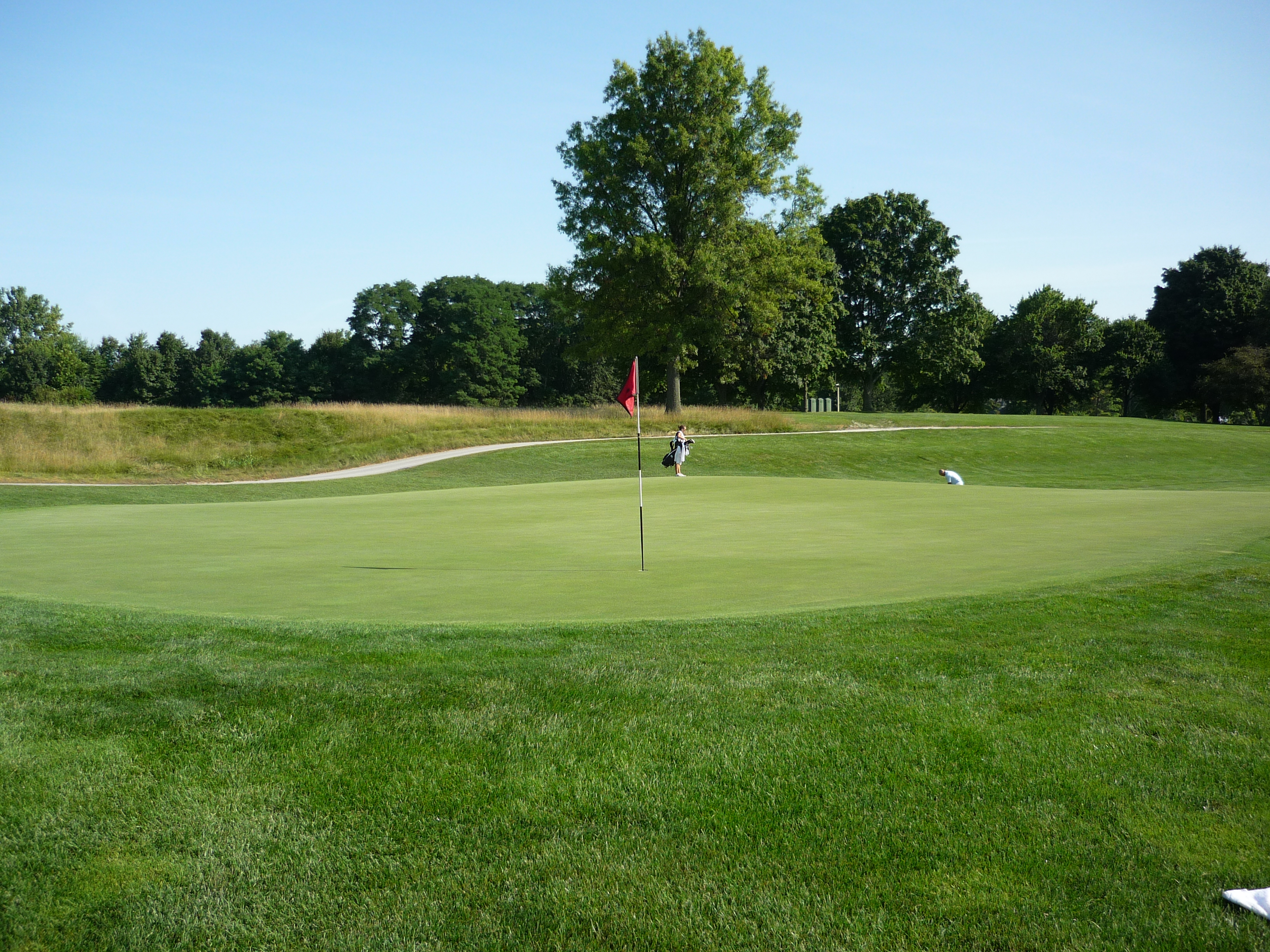
Hole 8 – 395 yards – Par 4
This tee shot is fraught with danger. Anything left will be wet. That is my miss so I was a little nervous on this tee. Luckily, I hit my best drive of the day here. The actual carry gets longer the further left you aim.
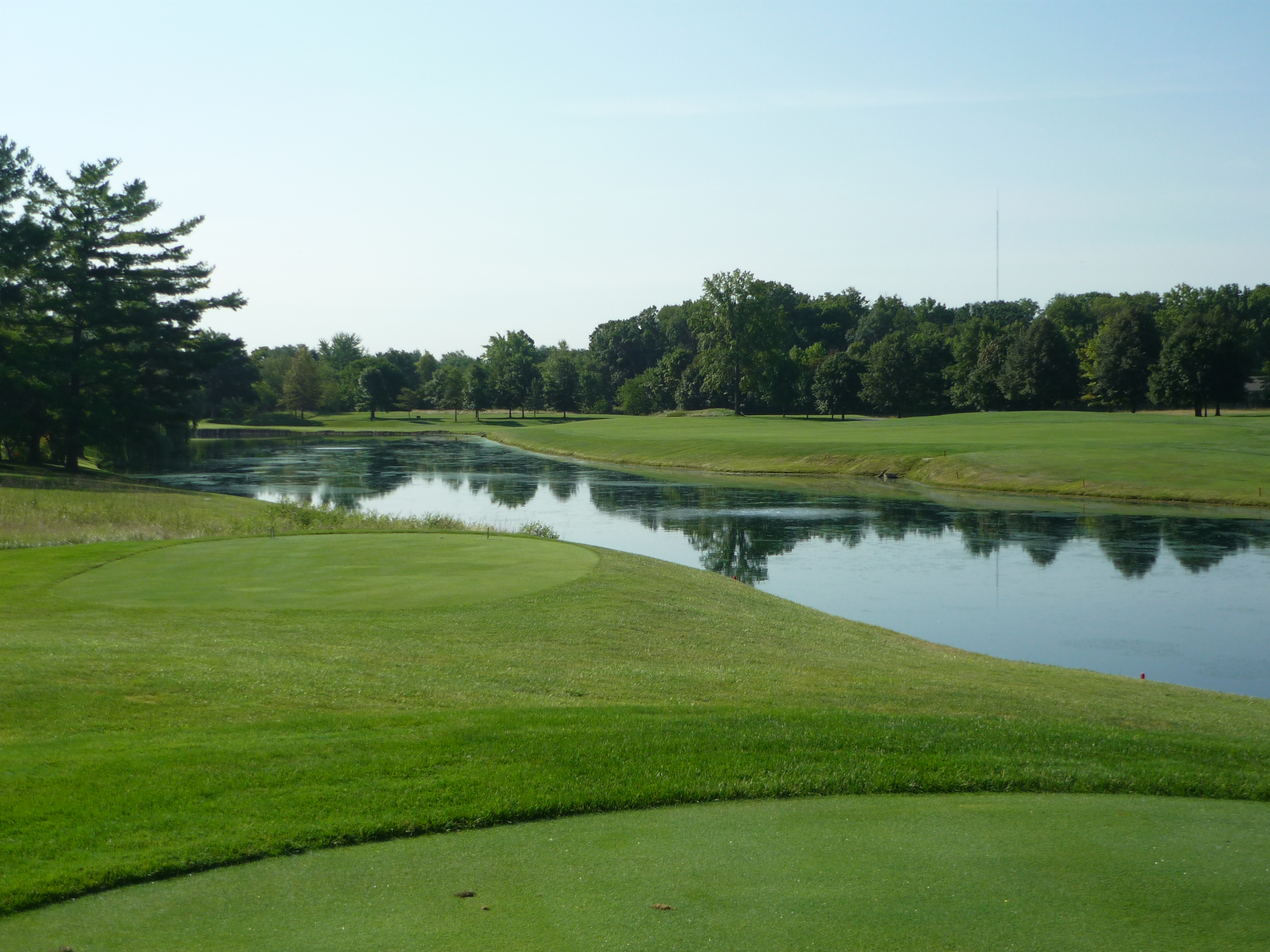
The fairway goes about 90 degrees to the left on its way to the green. The green is also guarded by the water on both the left and behind.
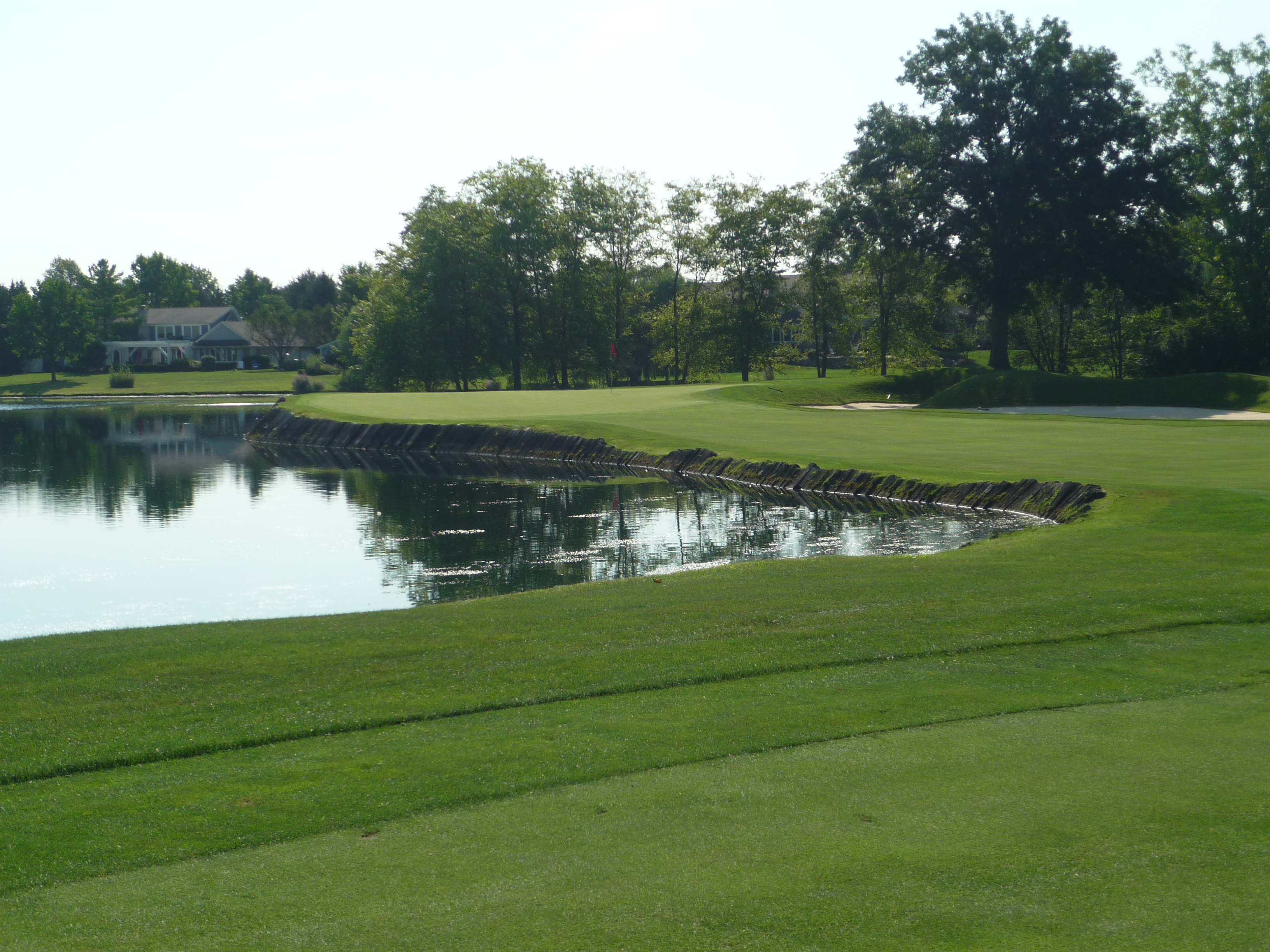
Here is a closer look at the green.
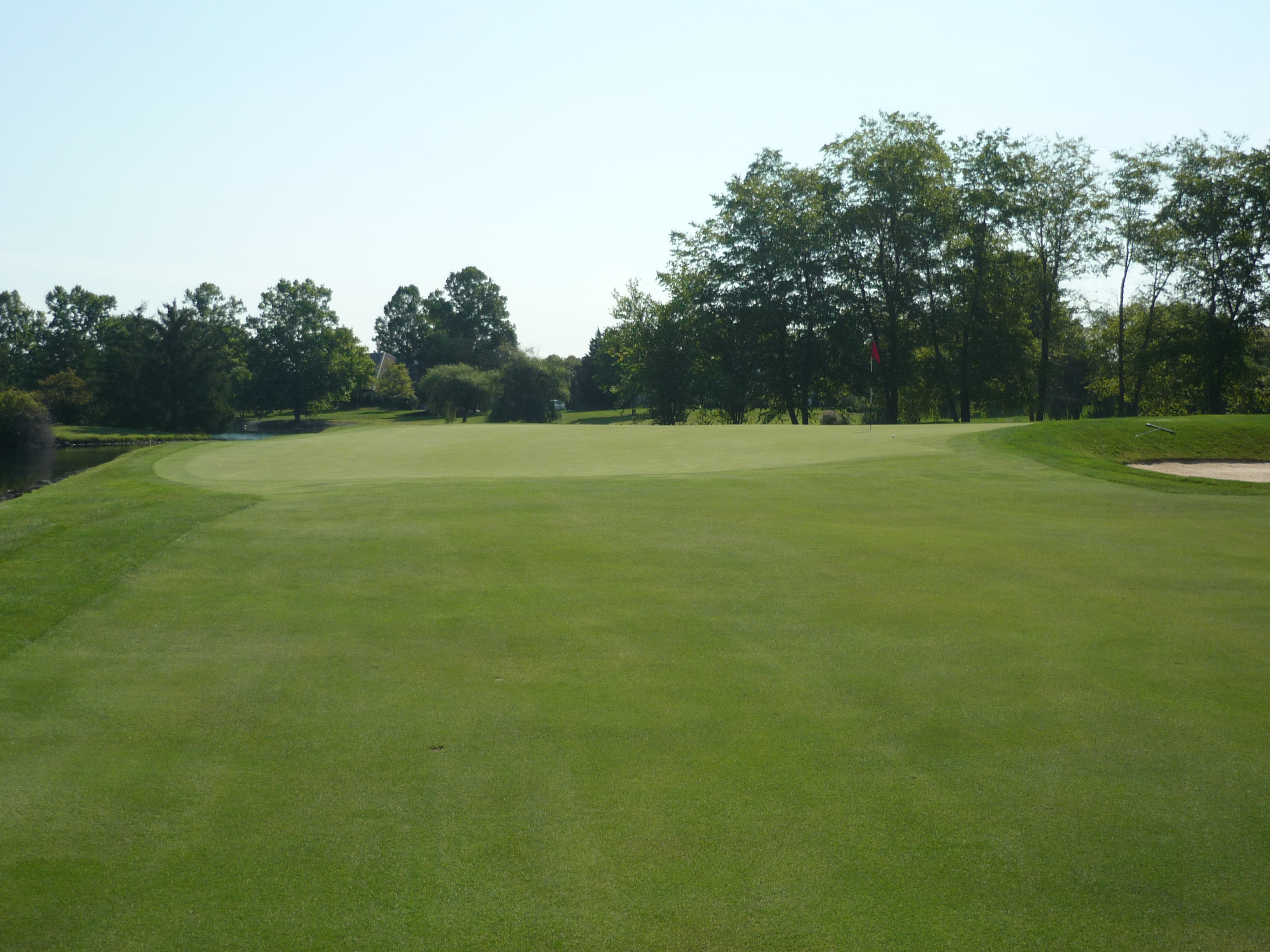
Hole 9 – 491 yards – Par 5
The tee markers at Crooked Stick are really cool. It helps when you have a great logo.
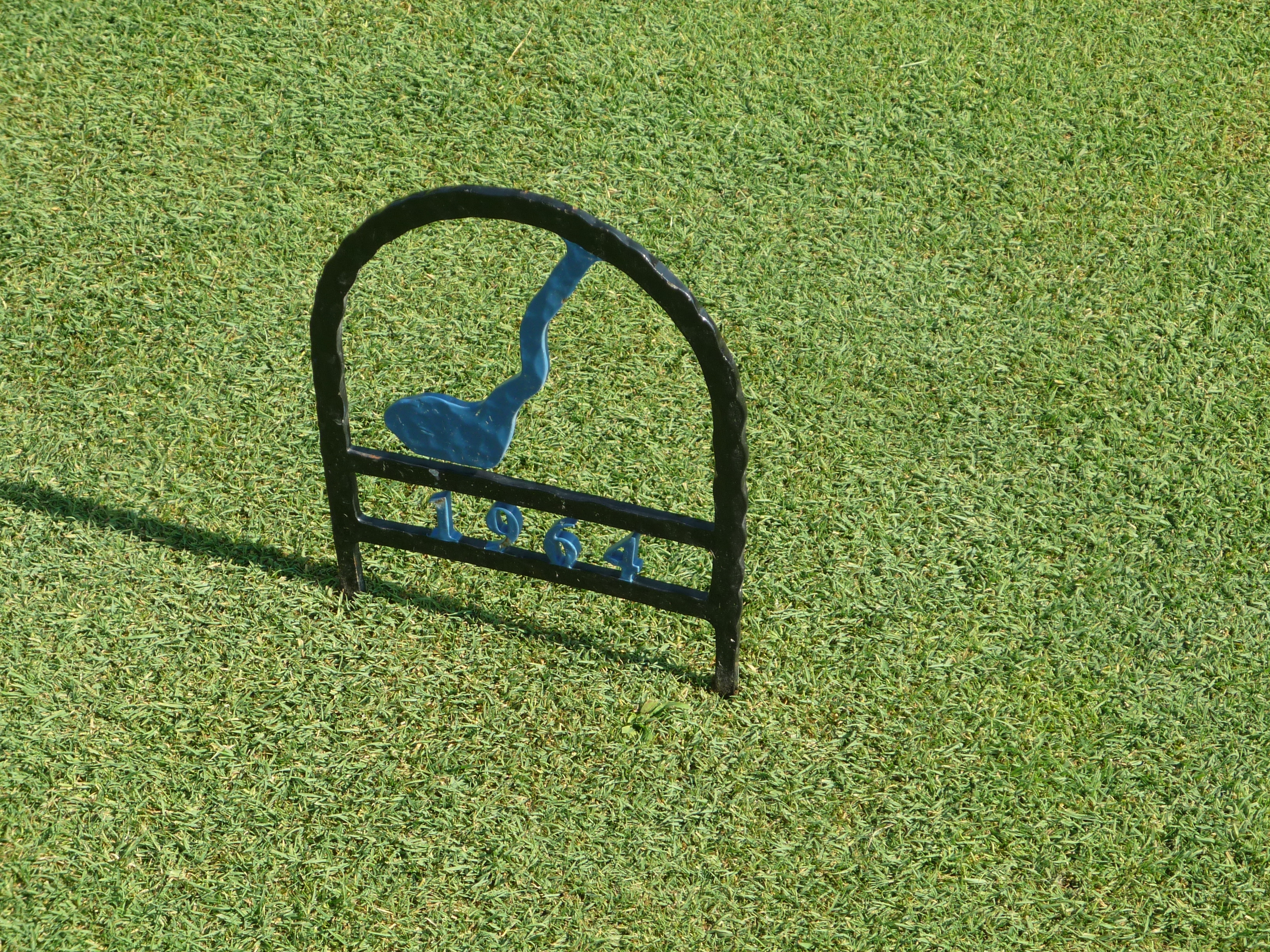
The tee shot here is another good one. The creek runs all up the left side and must be accounted for. A good line is a draw down the mowed walking path you can see on the tee.
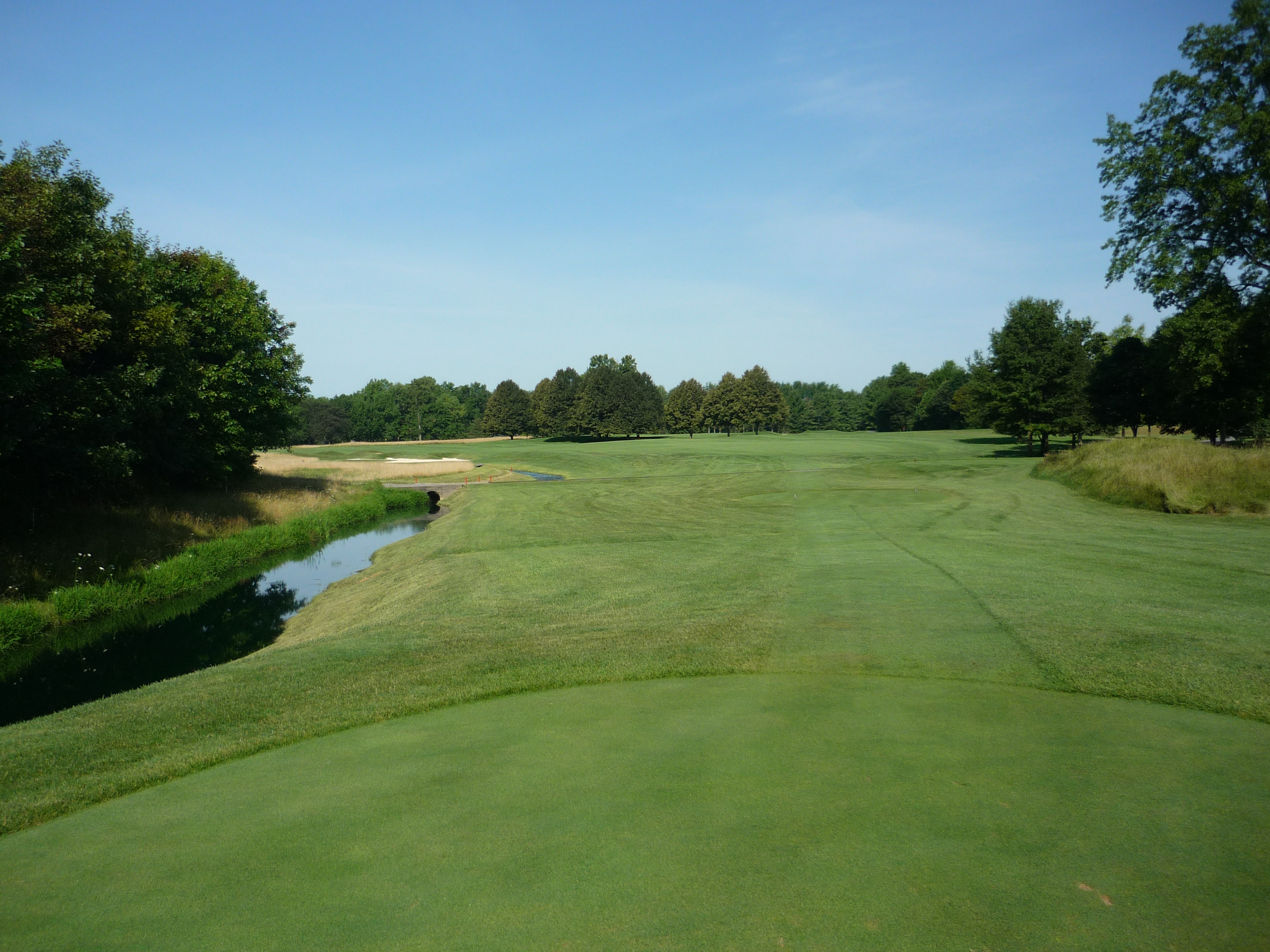
This is the second shot. The creek crosses the fairway which you can see in the railroad ties in the distance. You need to know the distance you want to hit so you can avoid the creek.
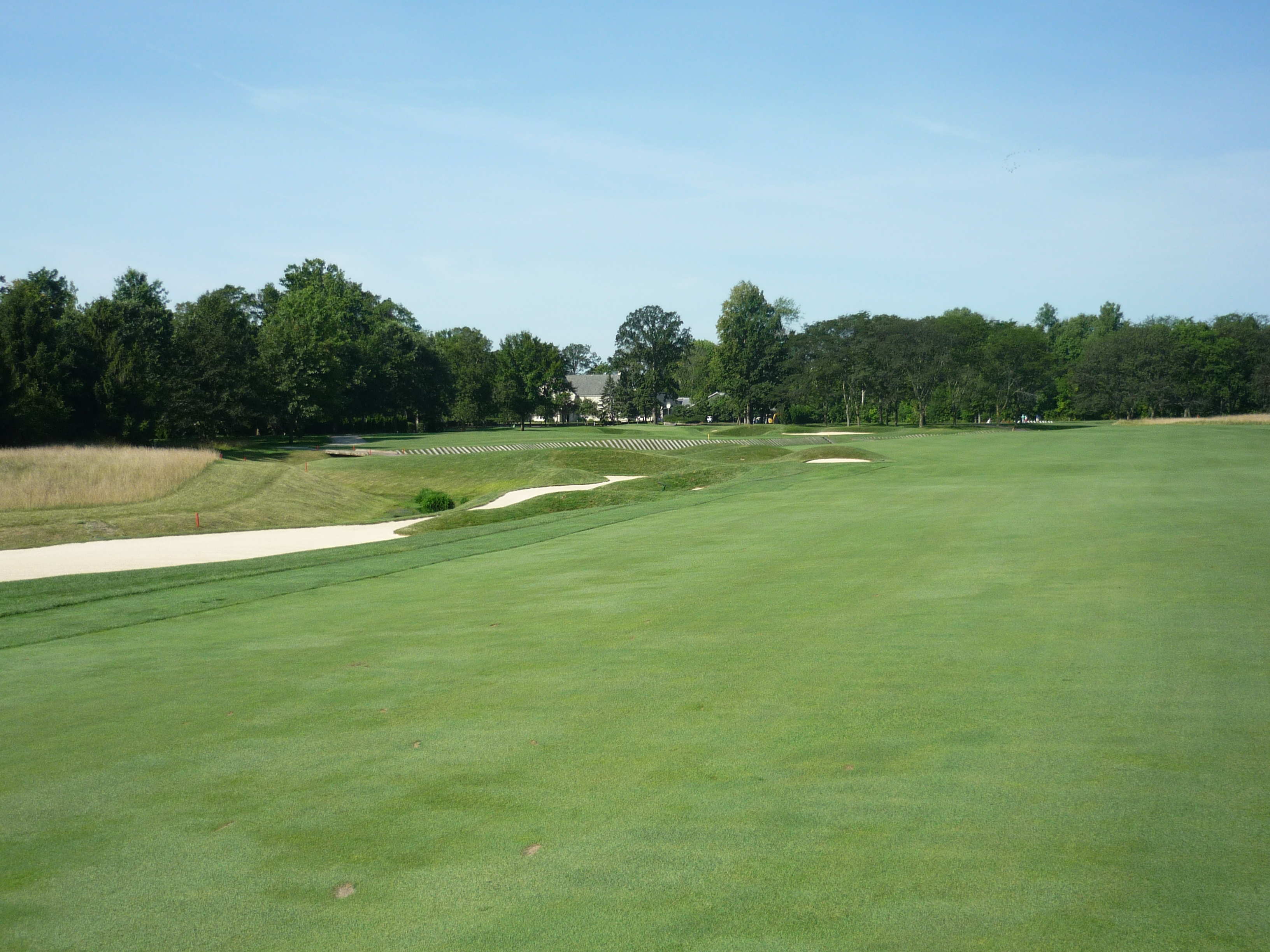
Here is a closer look at the shot.
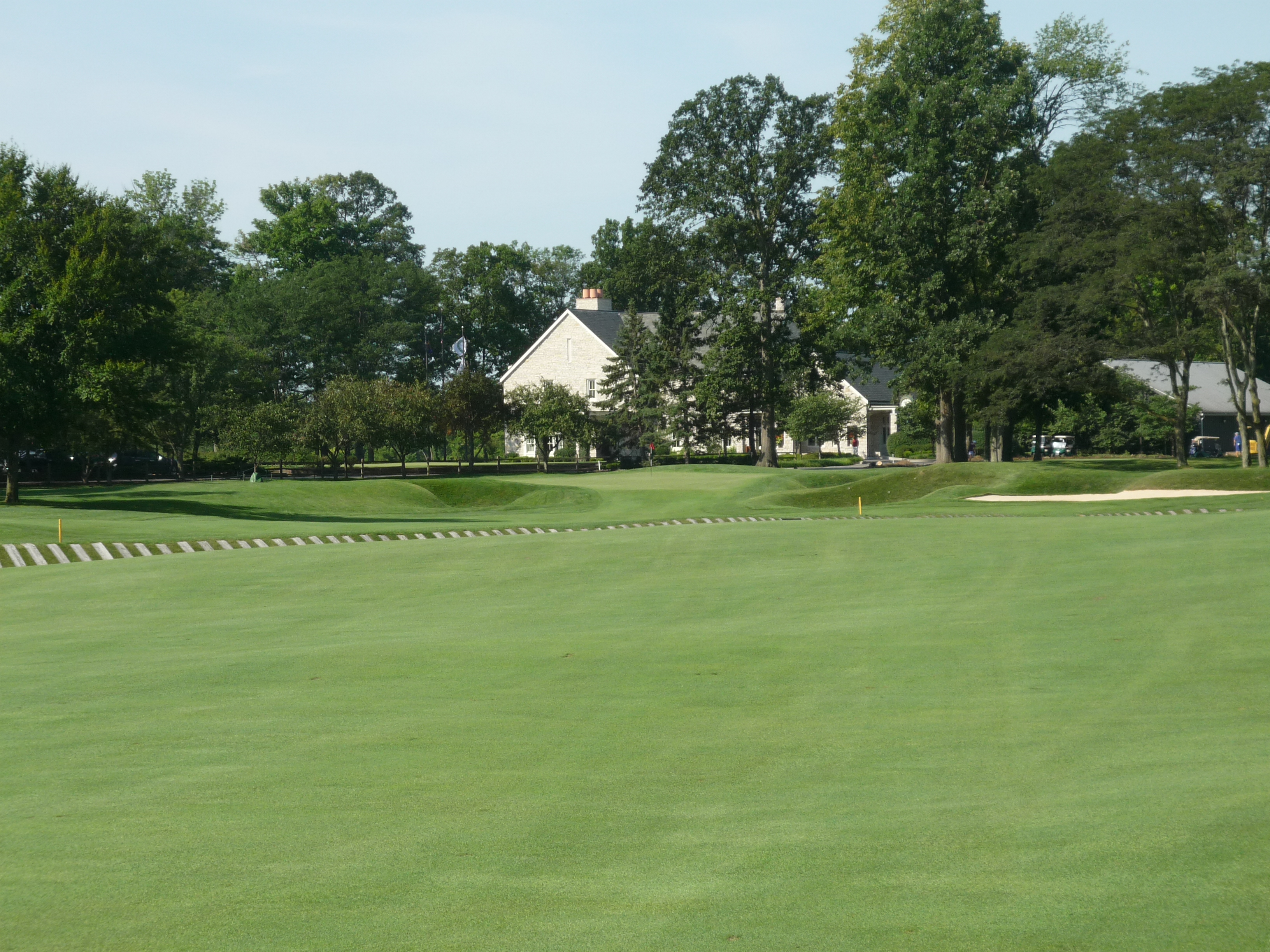
I liked the way the creek looked with the railroad ties and rocks throughout.
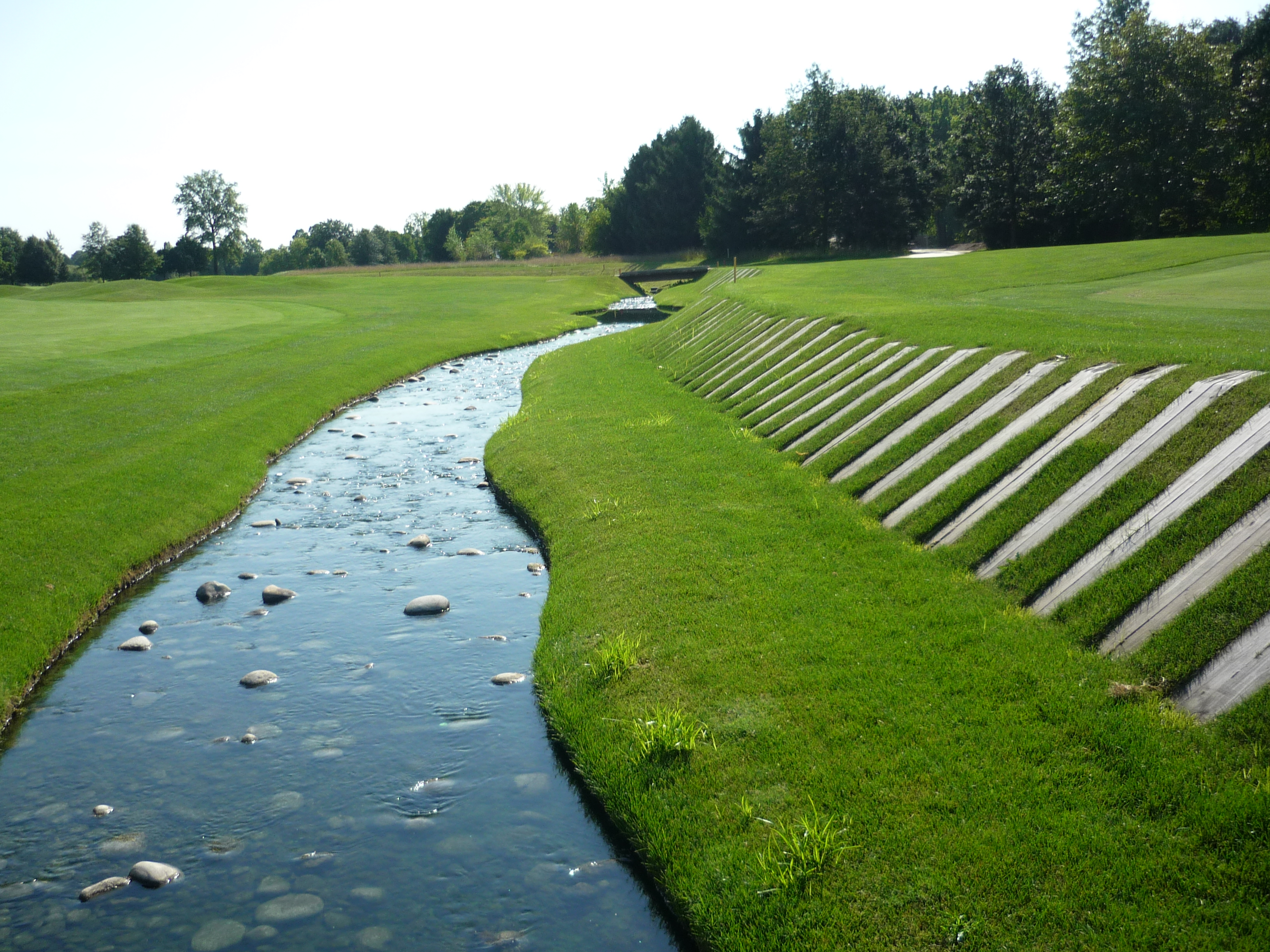
Here is a close look at what the third shot presents. There are deep bunkers around the green along with thick rough. It is open in front, but not by much.

Here is the putting surface from behind. Make that putt!
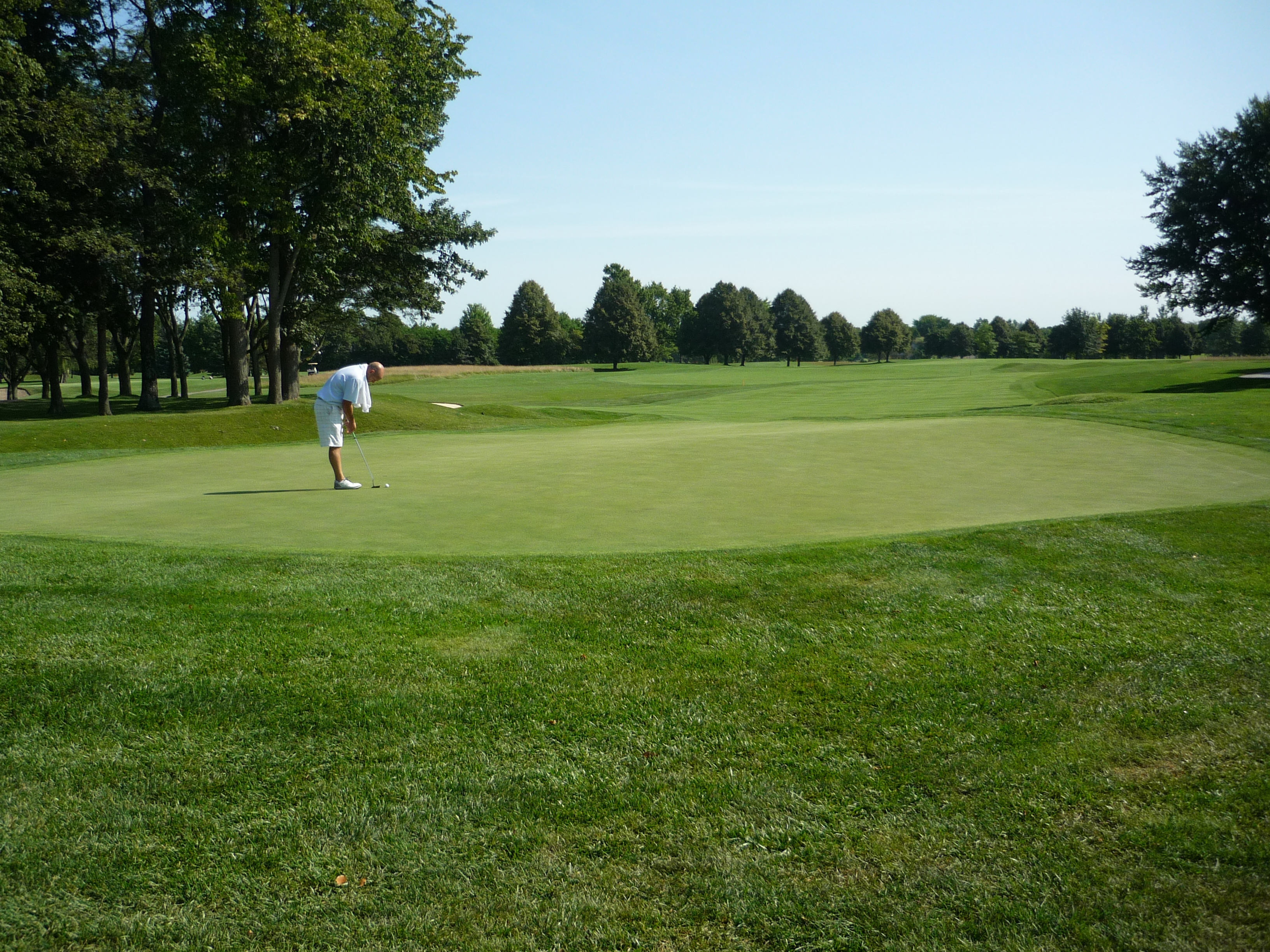
Hole 10 – 370 yards – Par 4
The last couple holes have had trouble on the left. The tenth hole flips that. The tee shot needs to be kept up the left side.
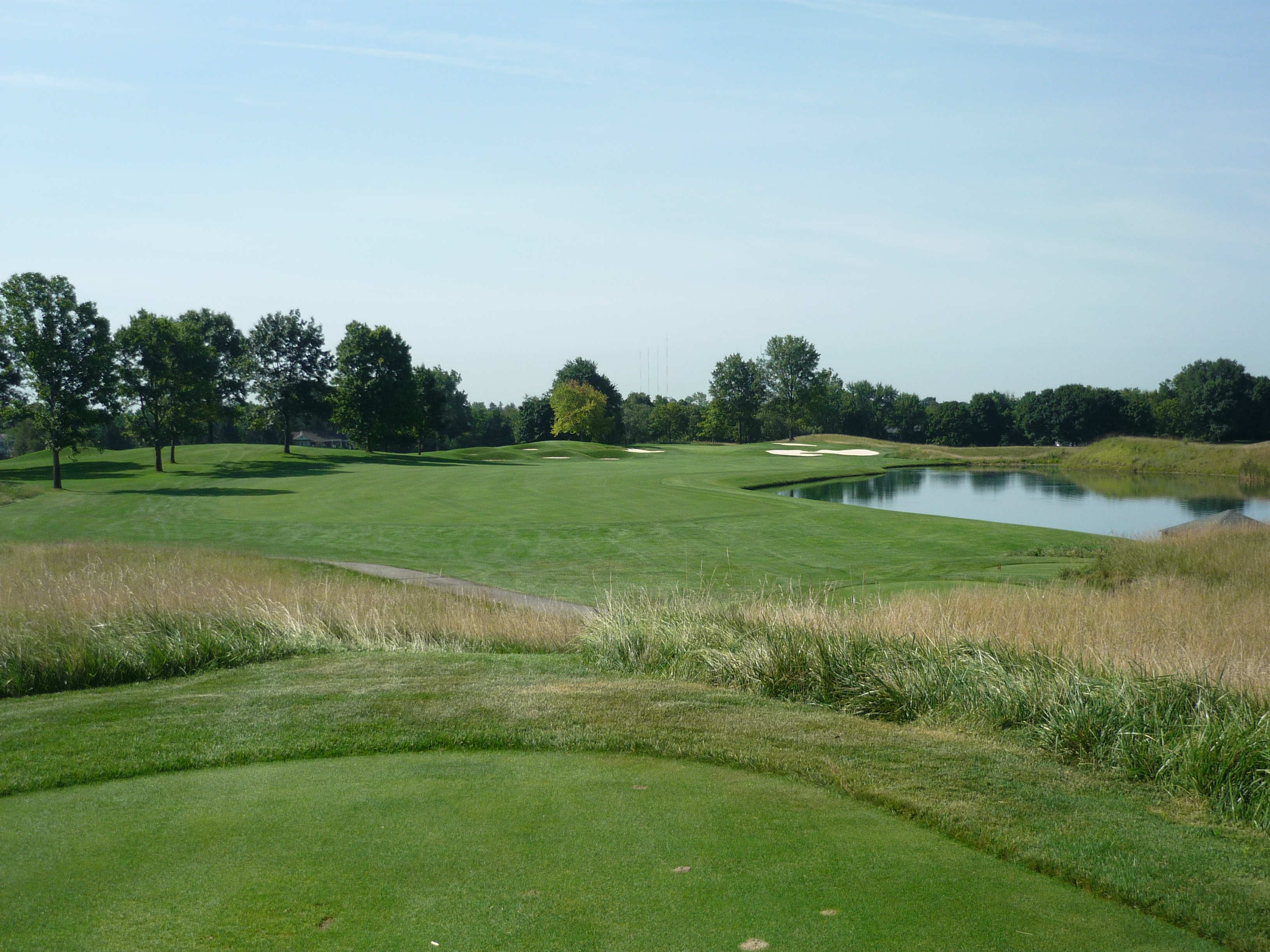
According to our caddies, the house below belongs to the Dyes. It is right near the eighteenth green.
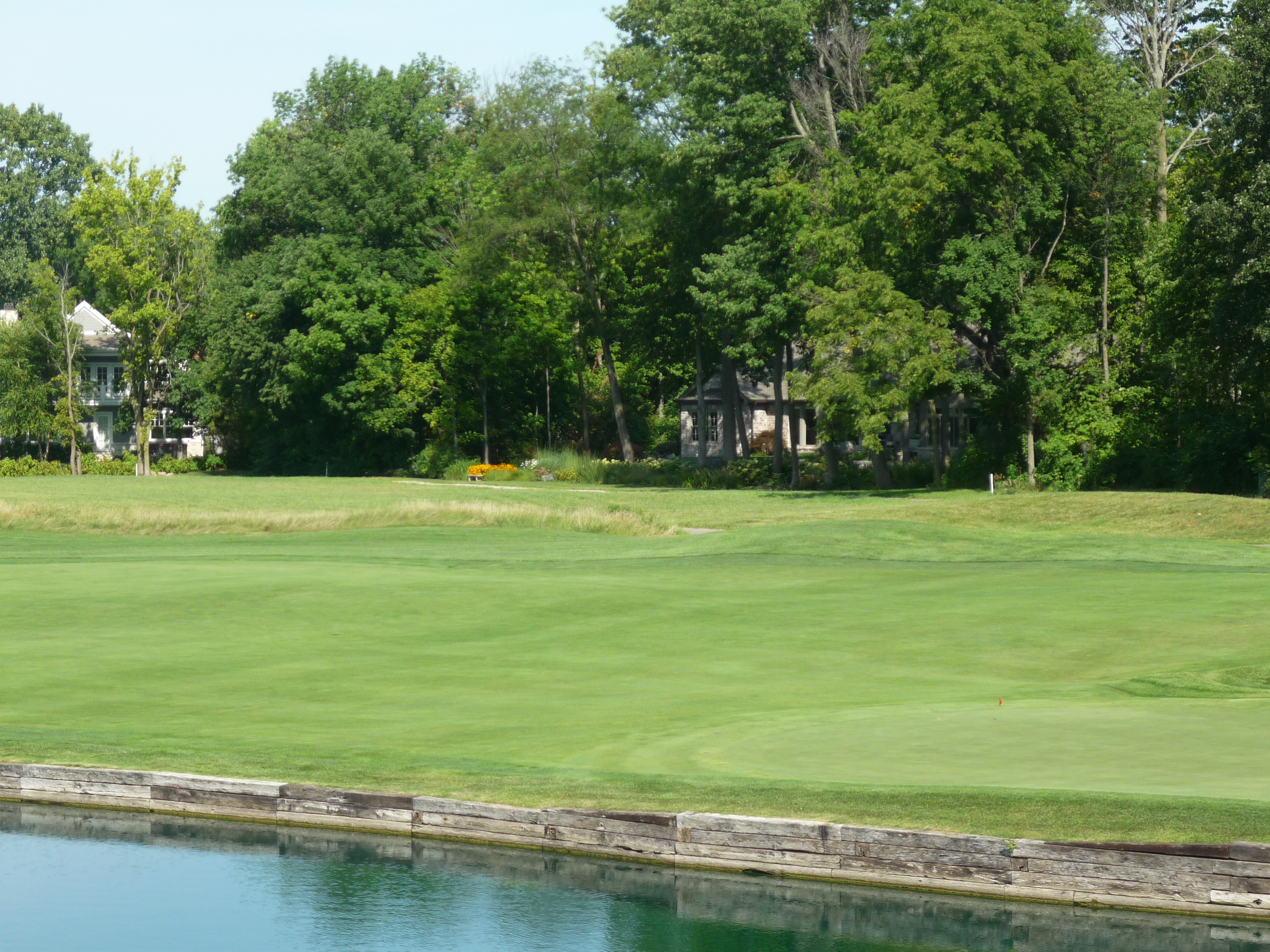
The approach shot is not overly tricky. The green is slightly raised.
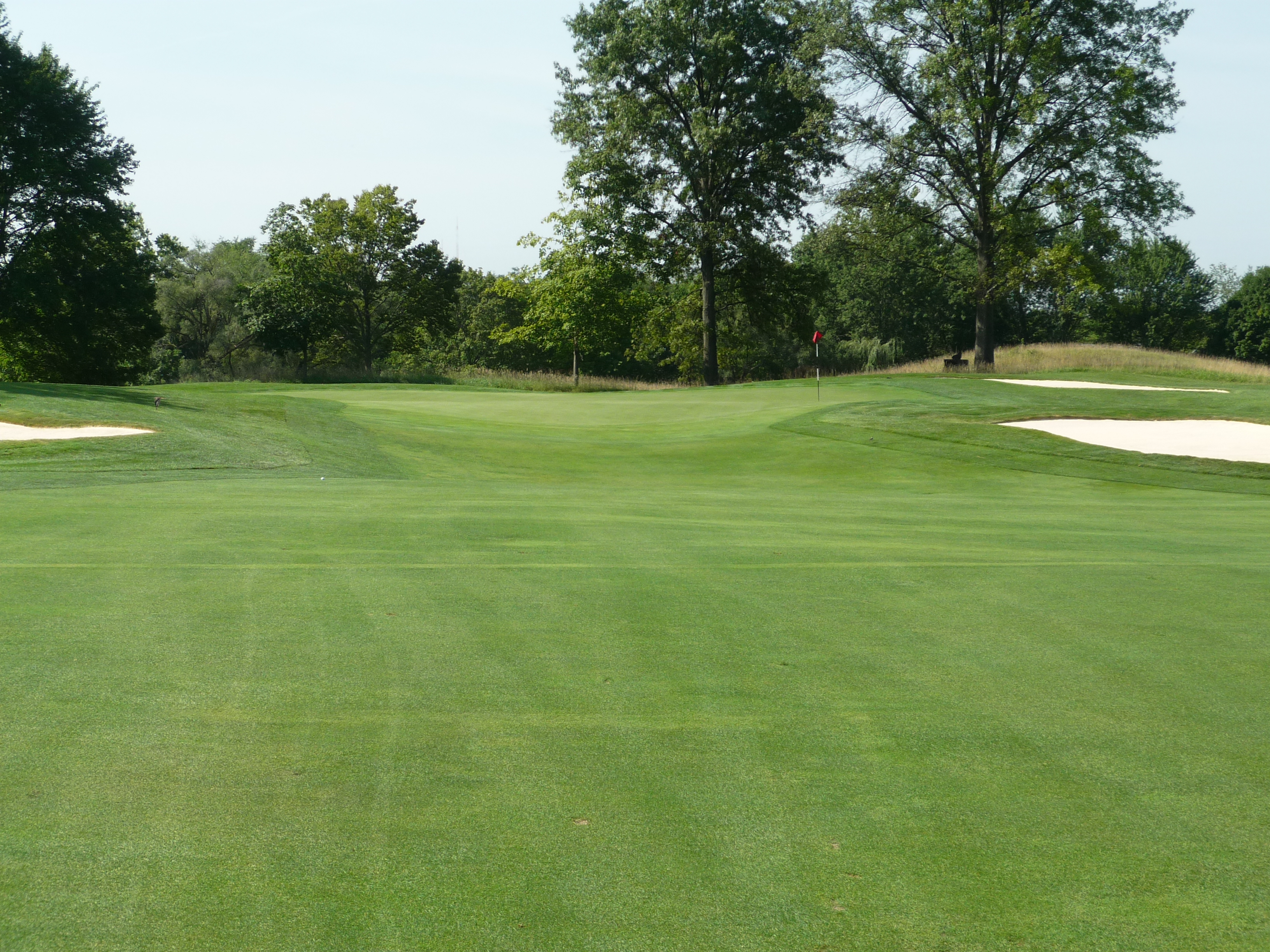
The green is pretty large as you can see below.
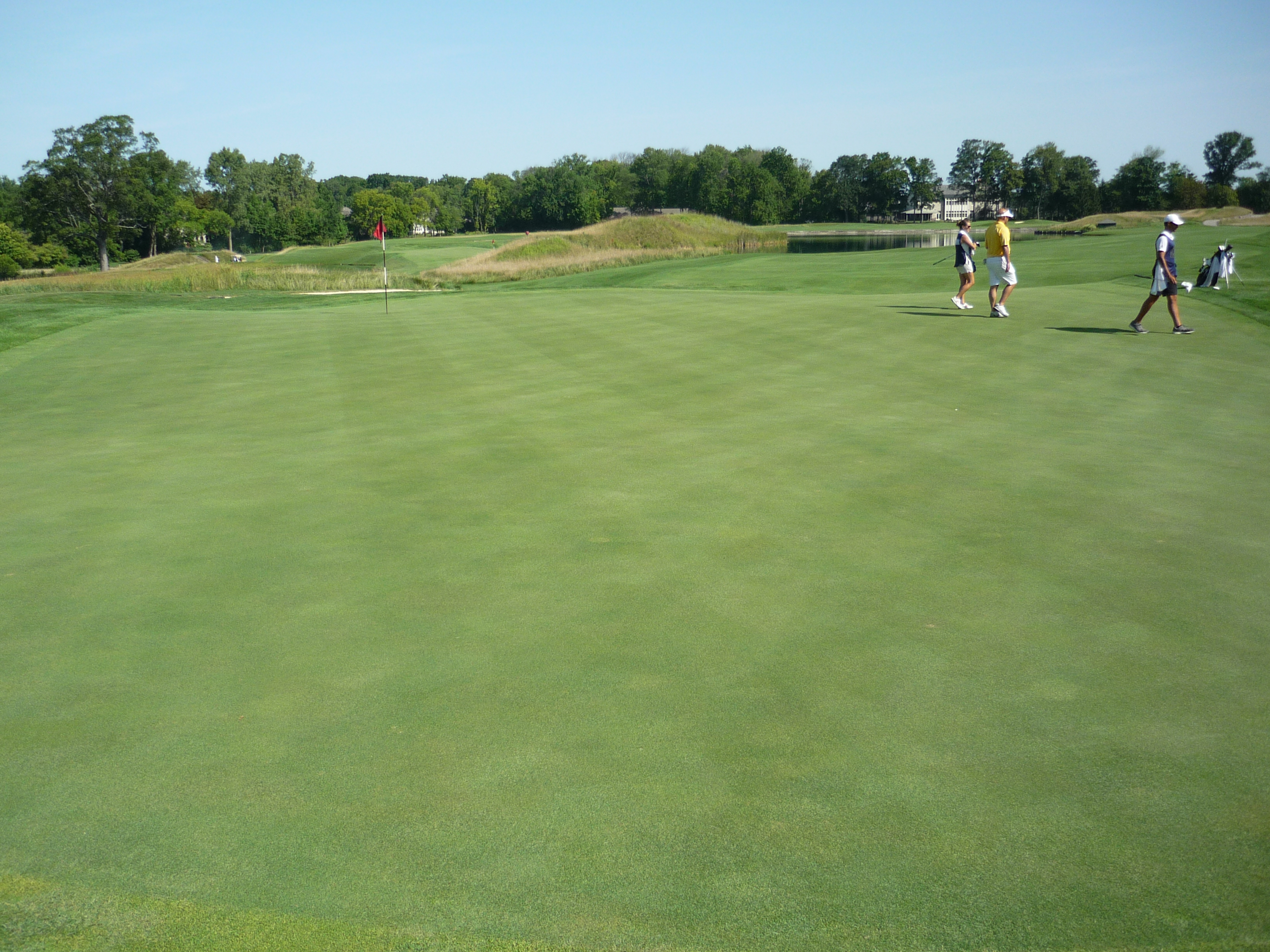
Behind the green is a large stump with the club logo. It has founding club members and some other information. For their privacy I kept it zoomed out.
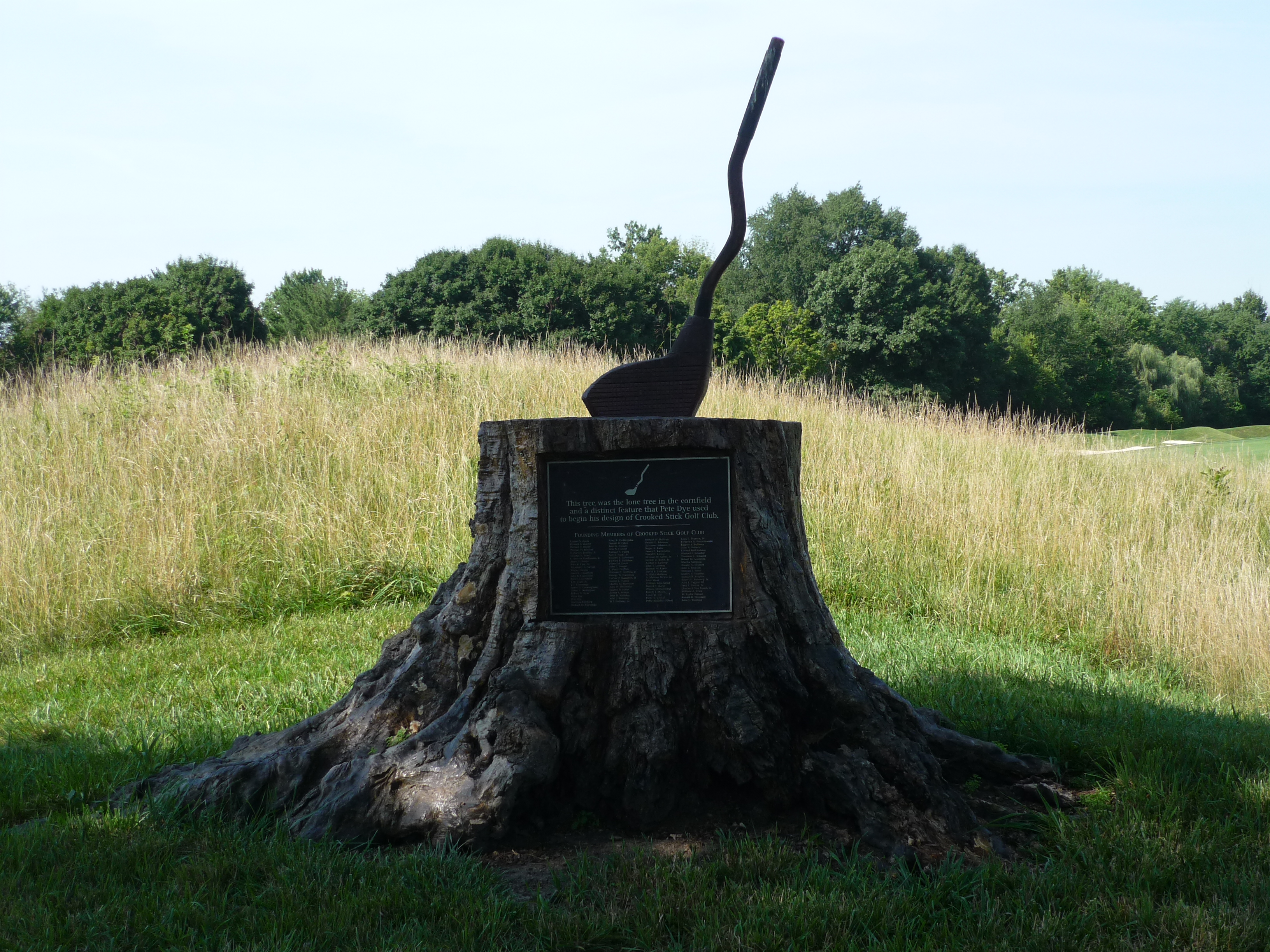
Hole 11 – 502 yards – Par 5
This tee shot is pretty open. There is high grass way right and some bunkers up the left. A slight draw plays really well here.
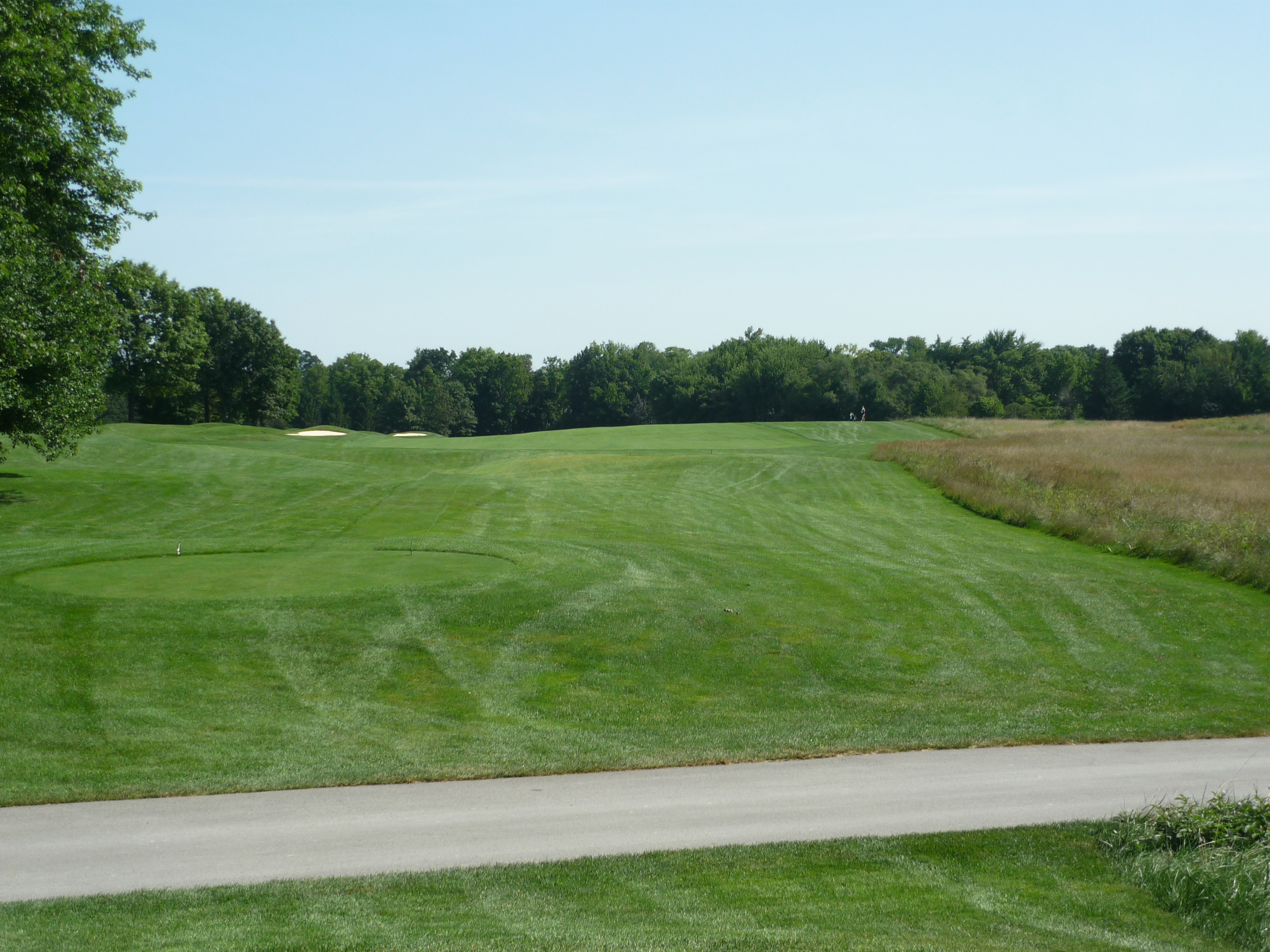
The second shot plays over a lot of sand closer to the green. You want to keep it more to the left.
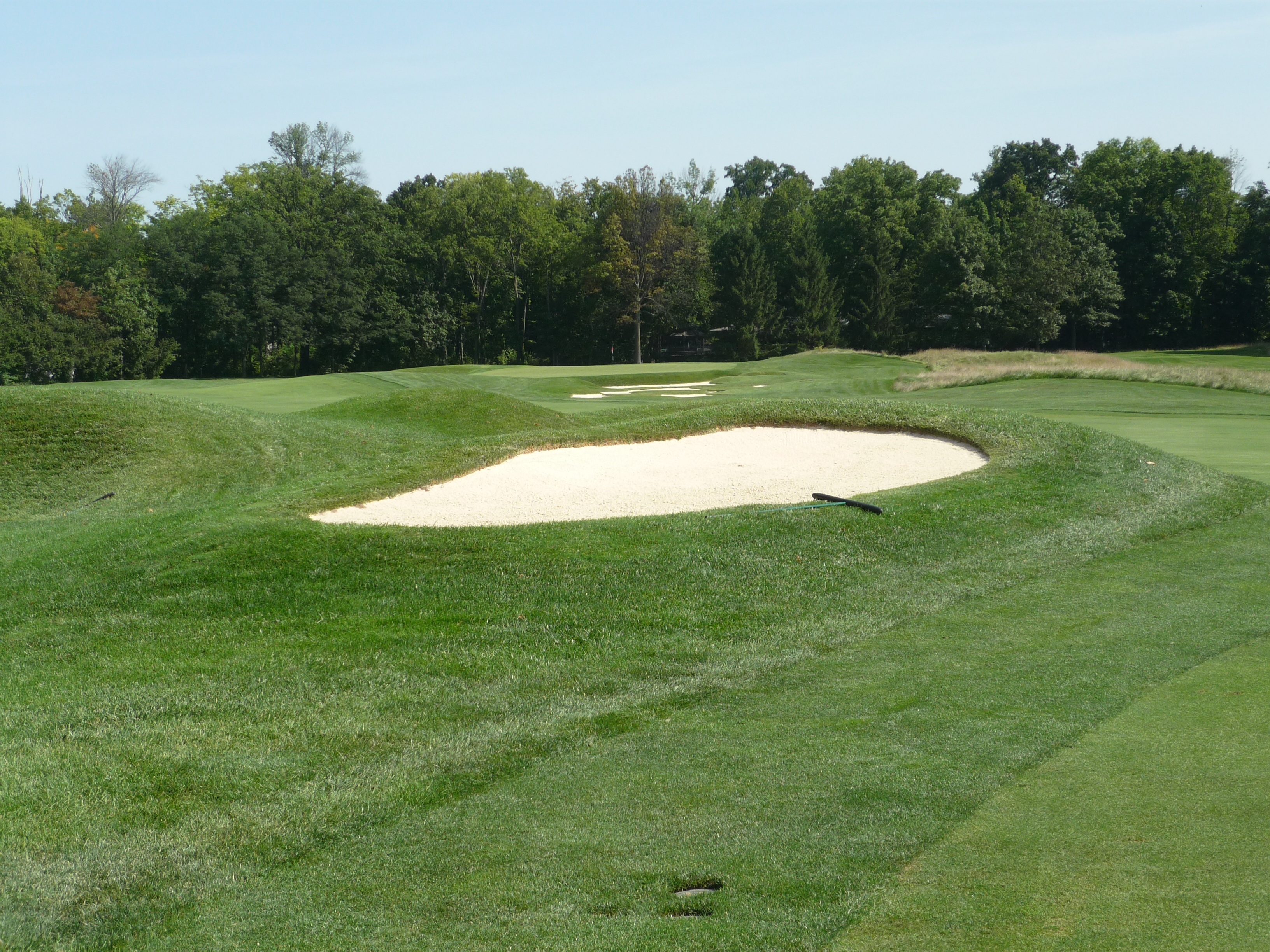
The approach shot is seen below. I think the picture tells the story.
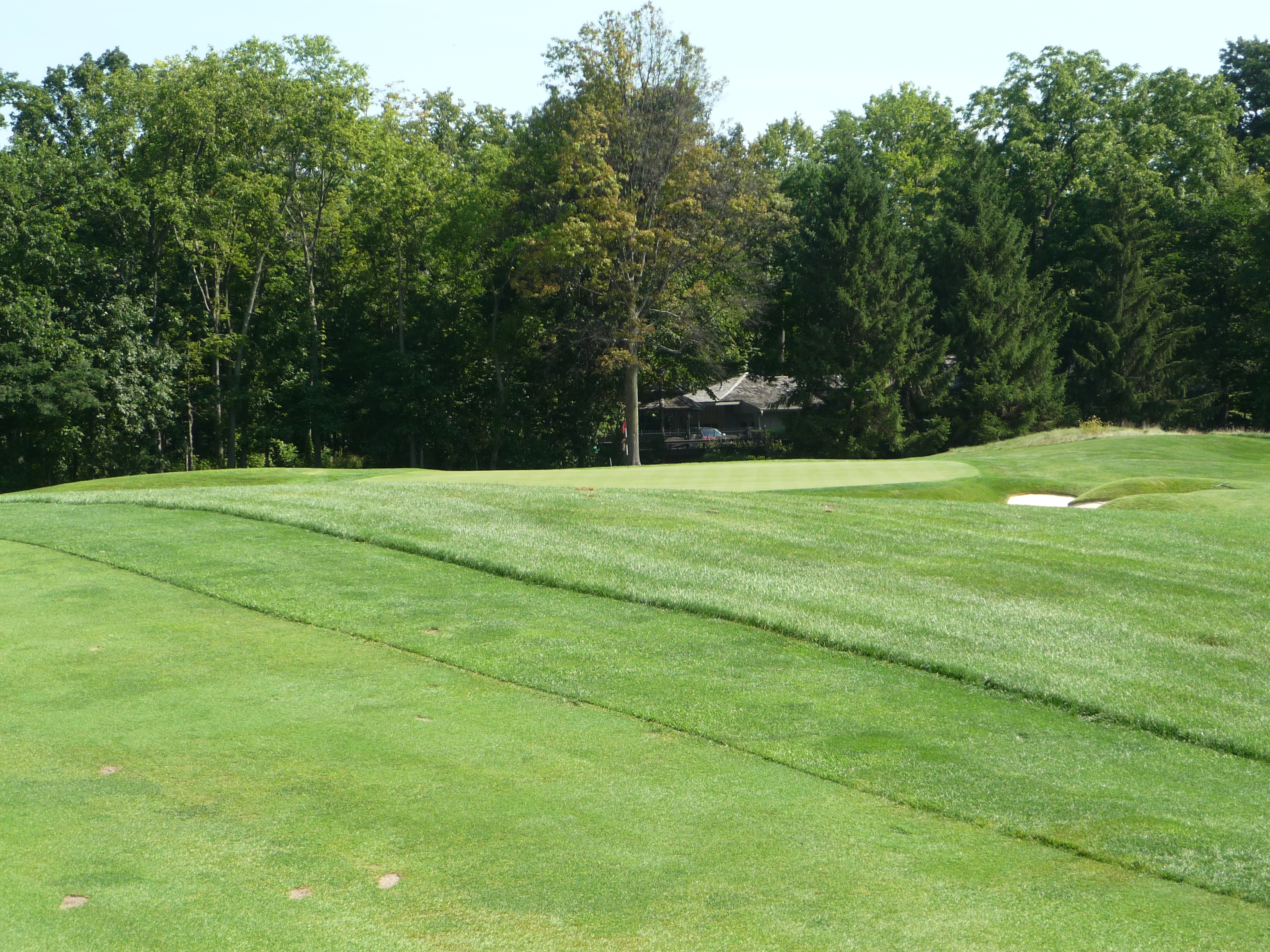
Here is a wide shot of the green. It is quite large and slopes back to front.
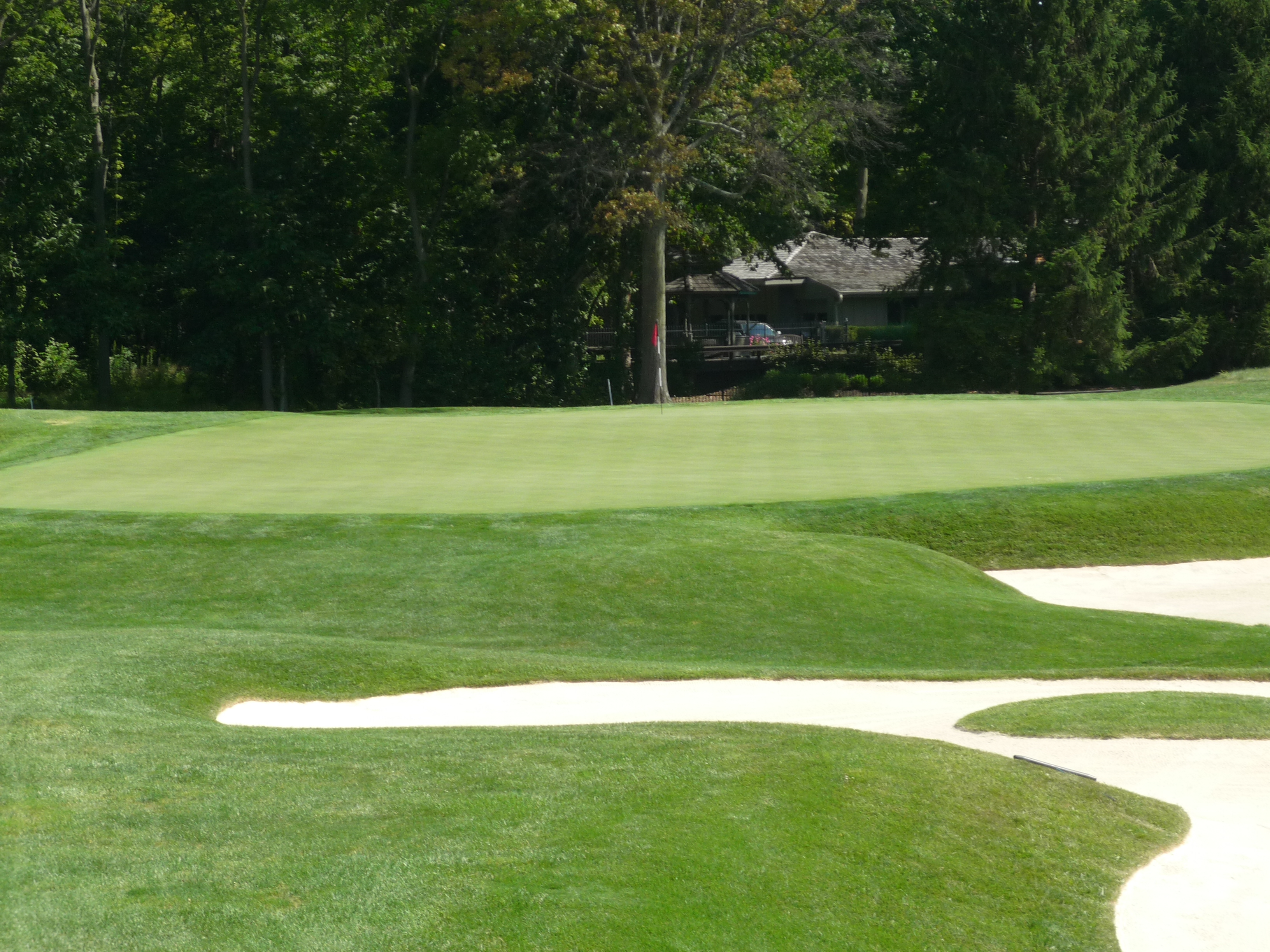
Below is the bunker guarding the green. It is massive as you can see with grass islands sprinkled throughout.
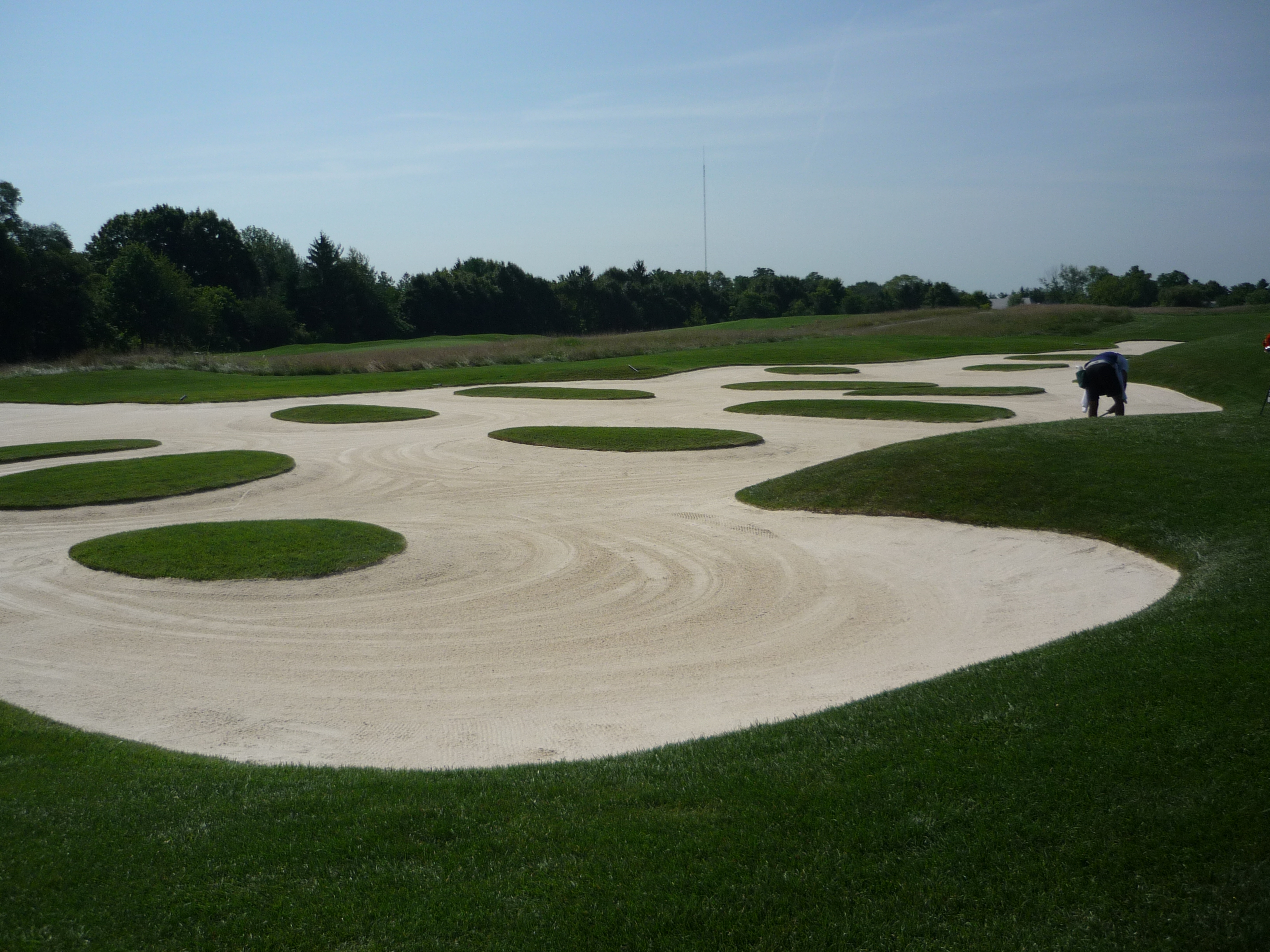
You don’t want to go over the green. There is a bunker behind as well.
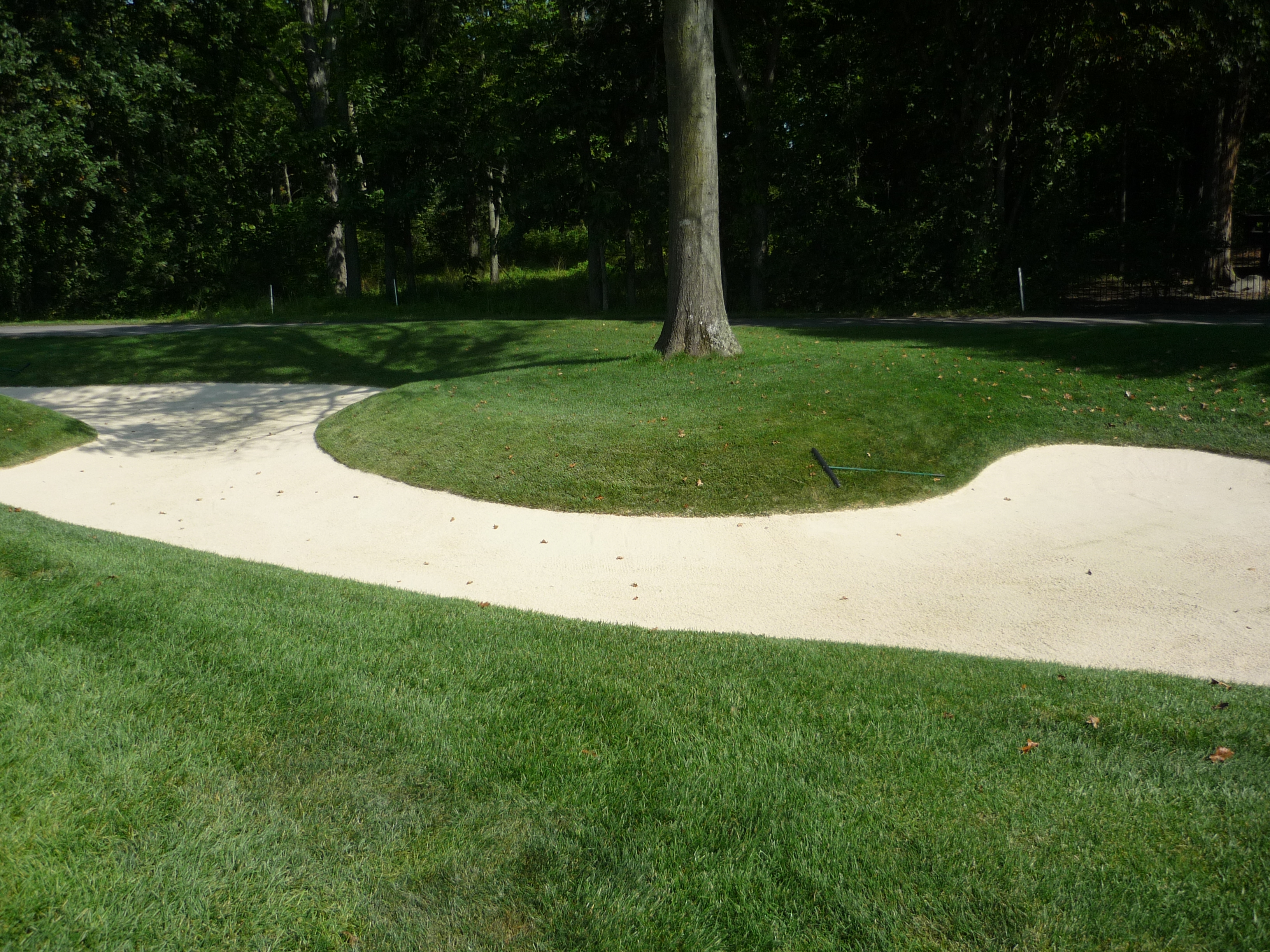
Hole 12 – 407 yards – Par 4
This is a tough hole especially if you flare it right as I did. The tee ball should be kept to the left-center of the fairway for the best angle.
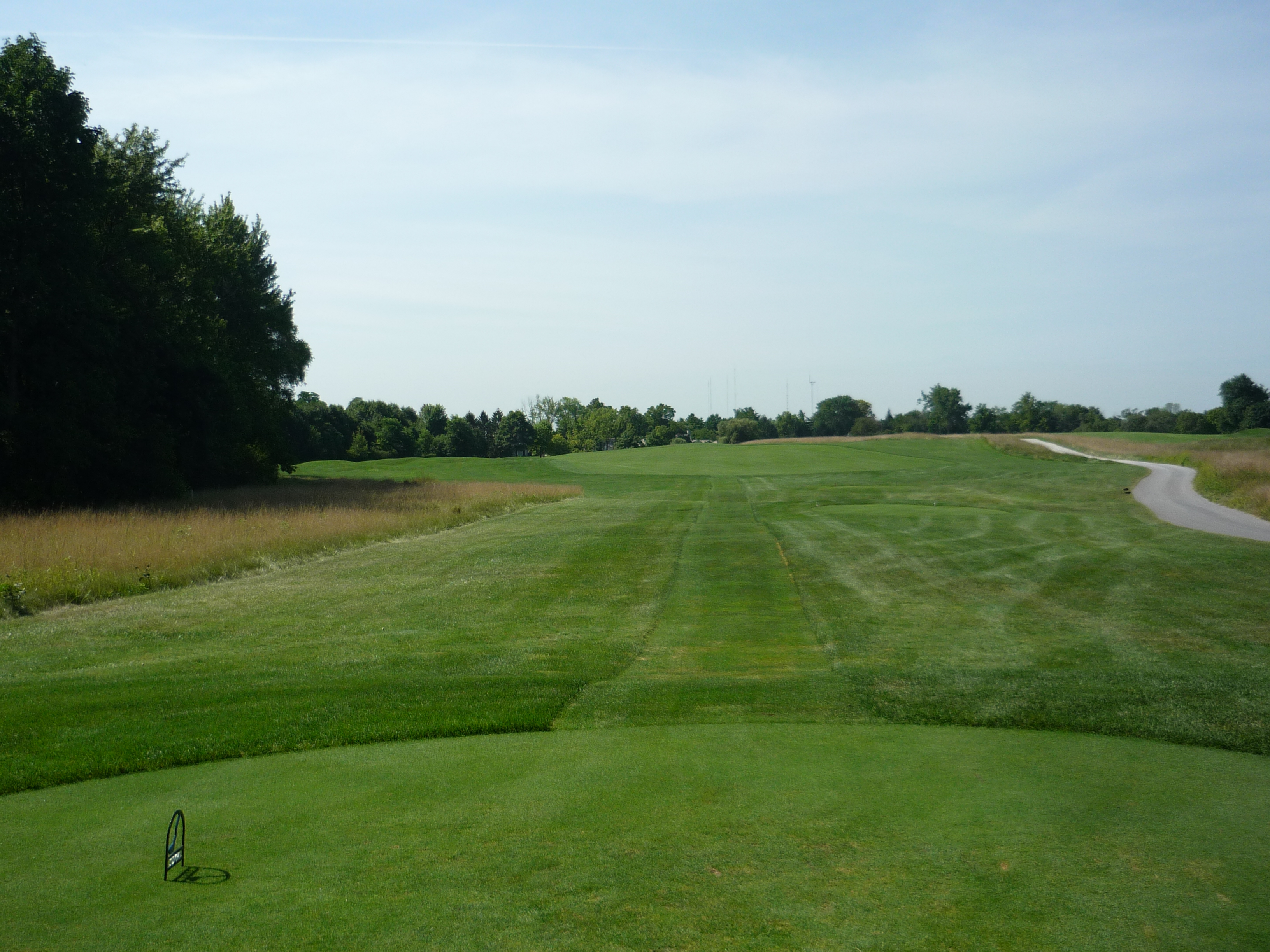
The approach is demanding due to the narrowness of the green. Balls also can roll off the right side of the green if they are moving too much that way.
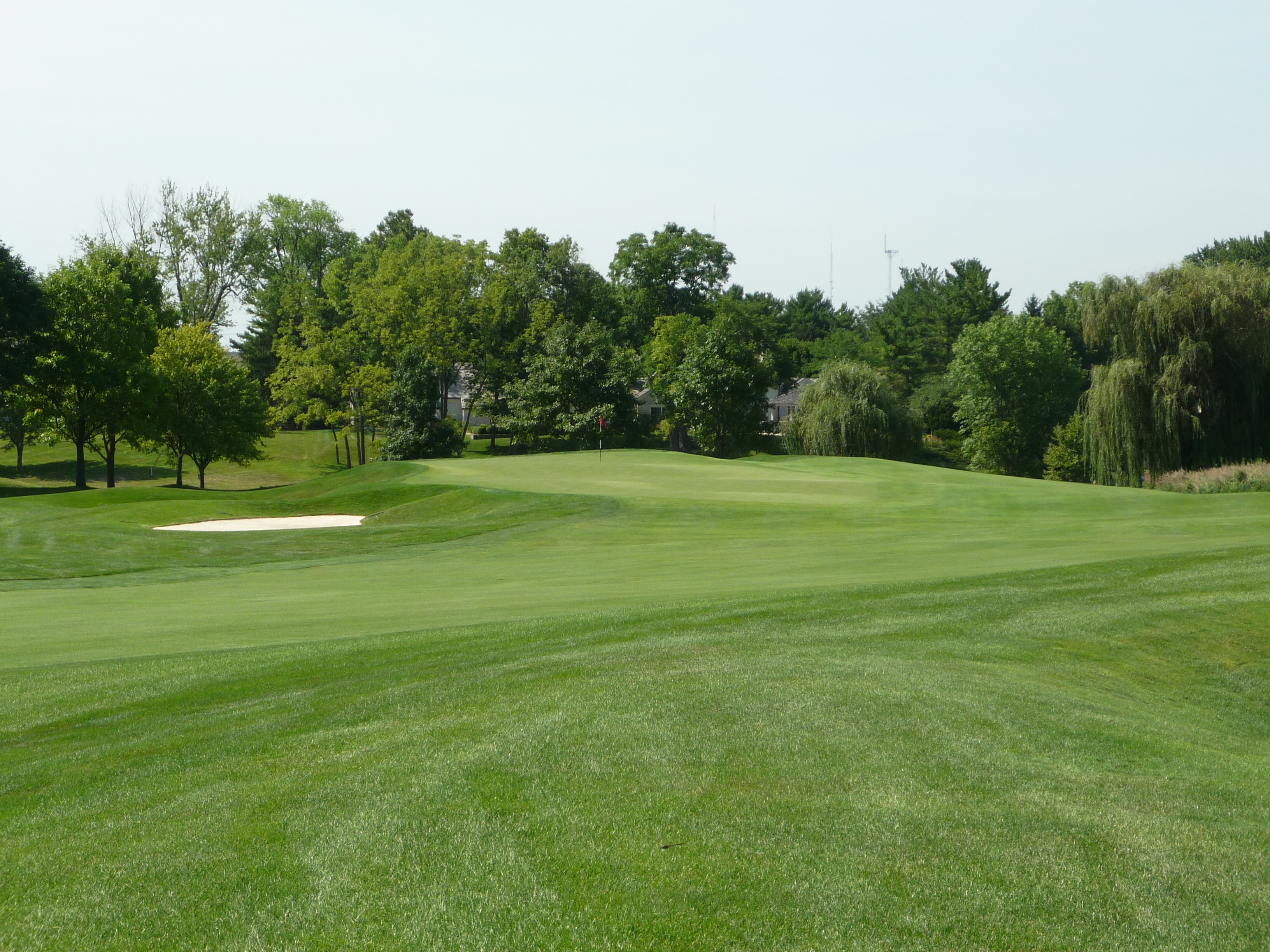
This closer shot of the green really shows the undulation of the putting surface. You see how it tilts to the right.
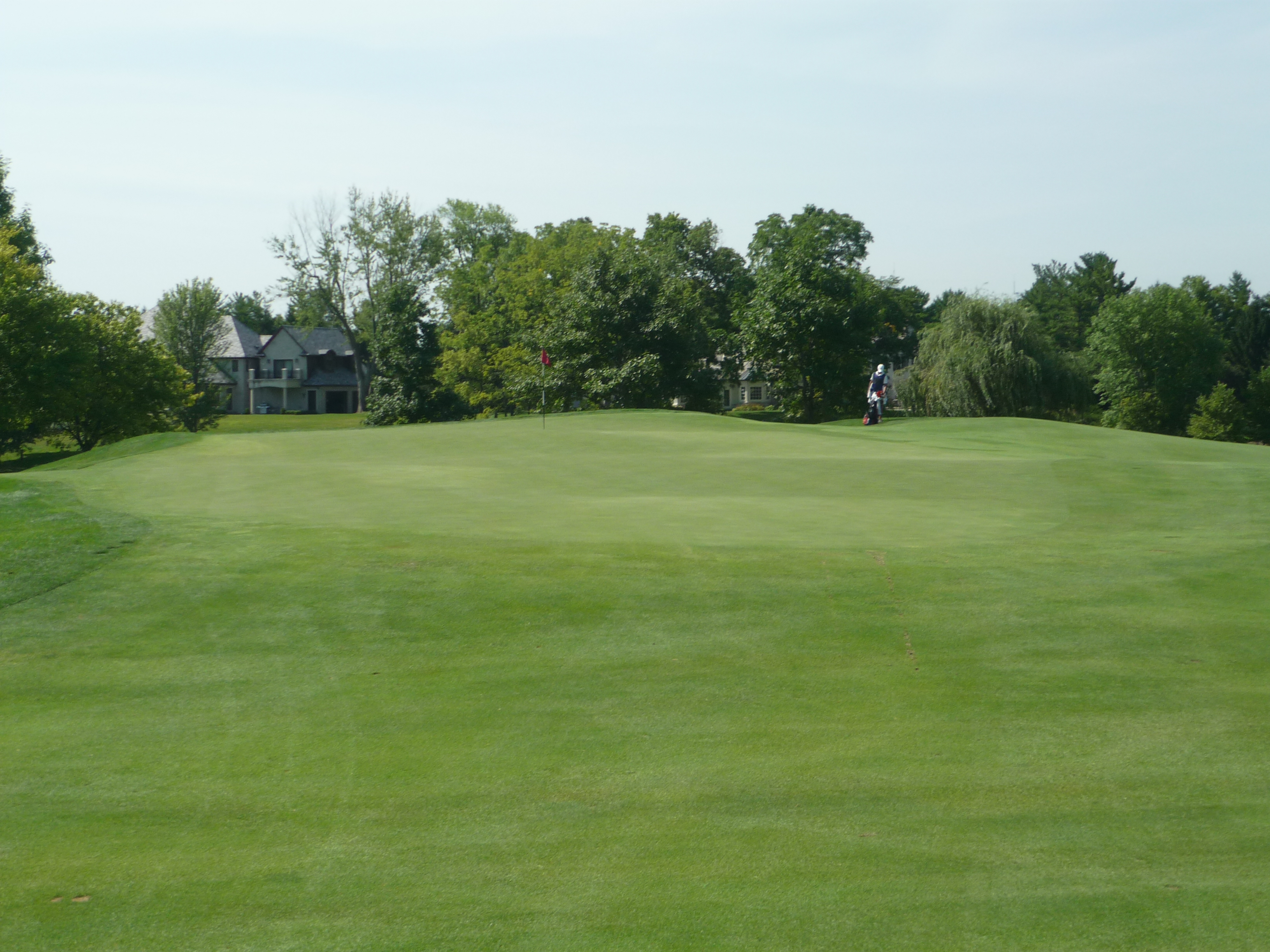
Here is the green from behind.
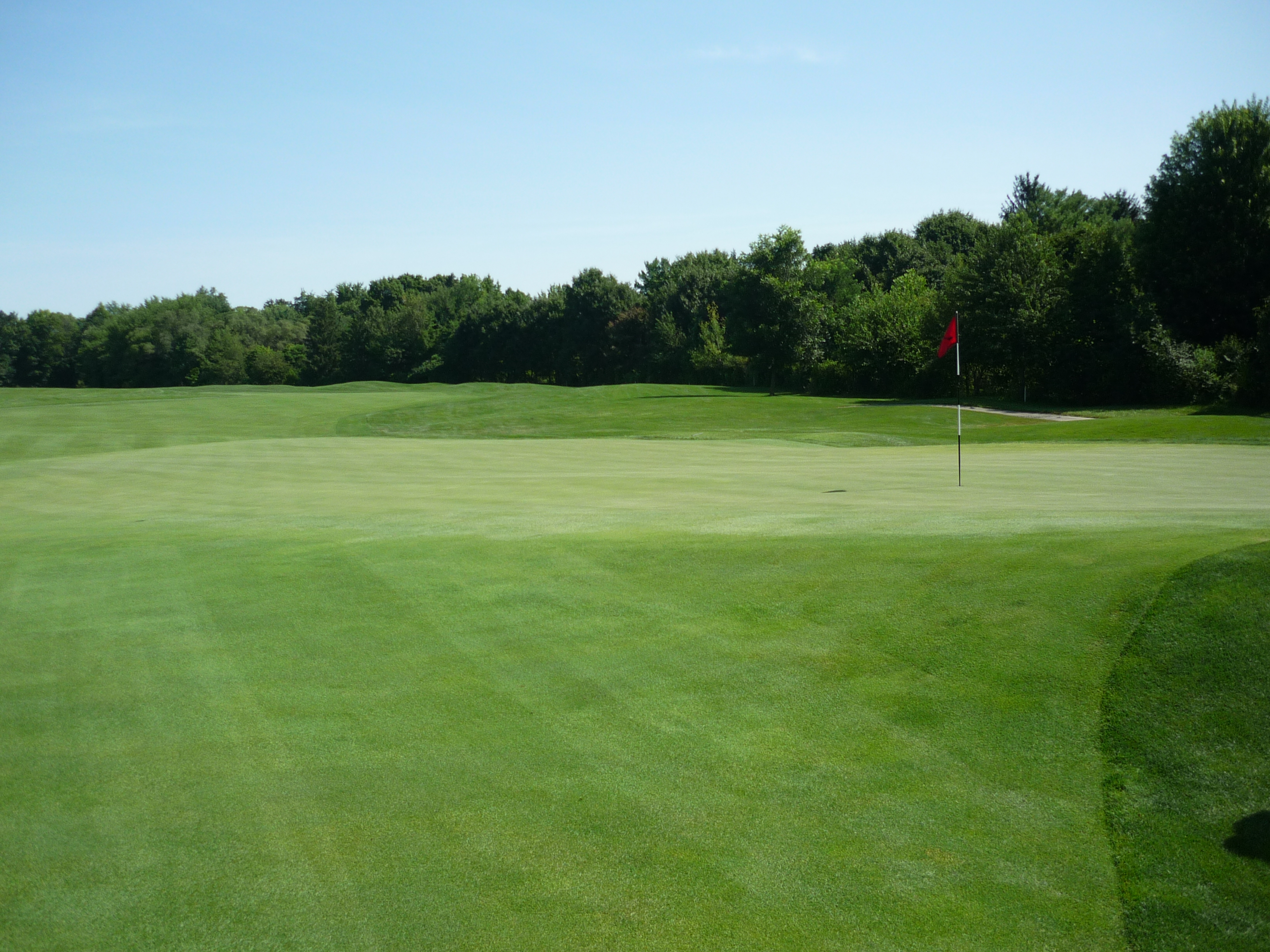
Hole 13 – 152 yards – Par 3
This is a great par three. It plays over a rock-lined creek. I just liked the look of the hole.
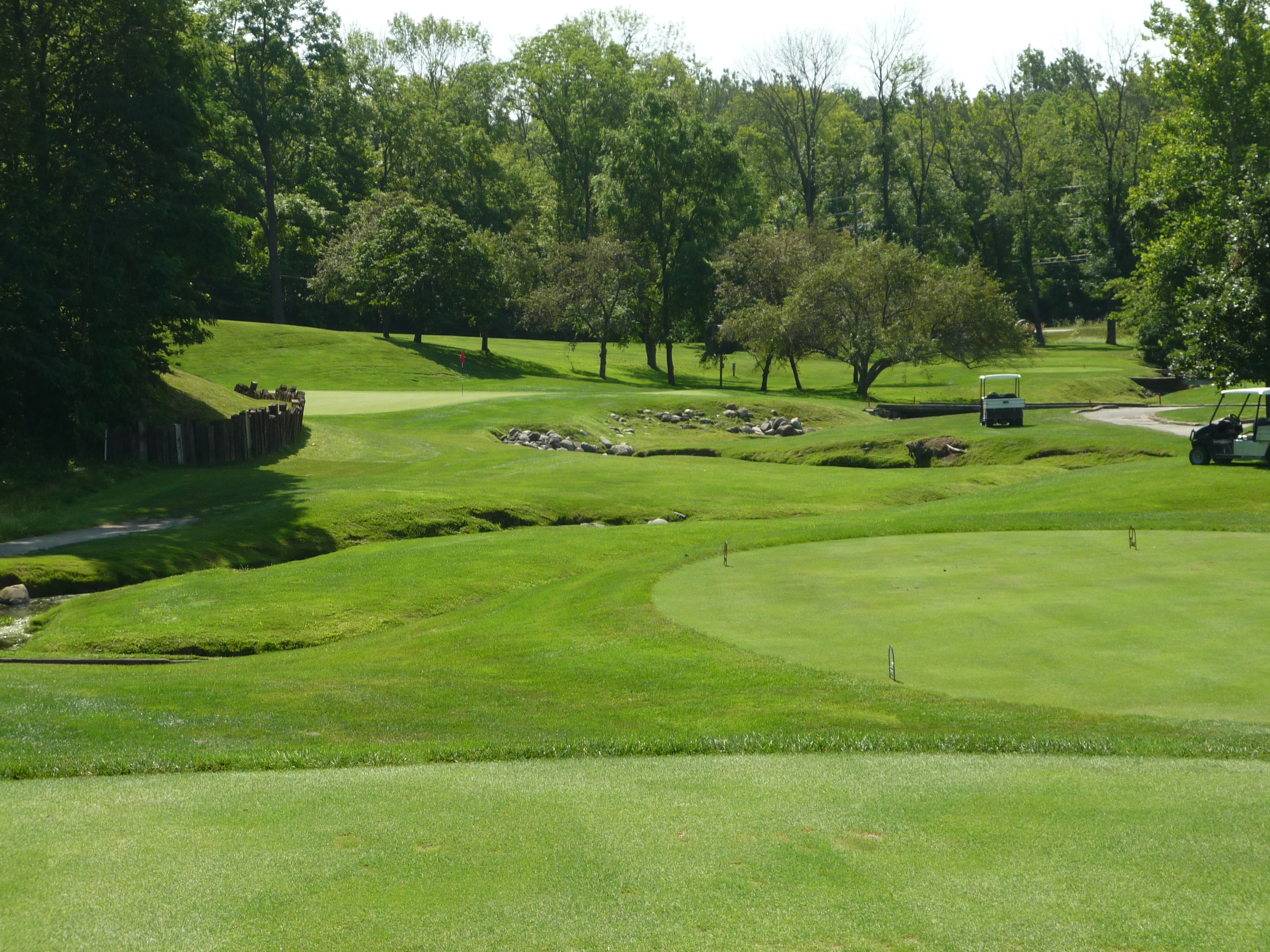
Here is the large green that angles to the right from the tee.
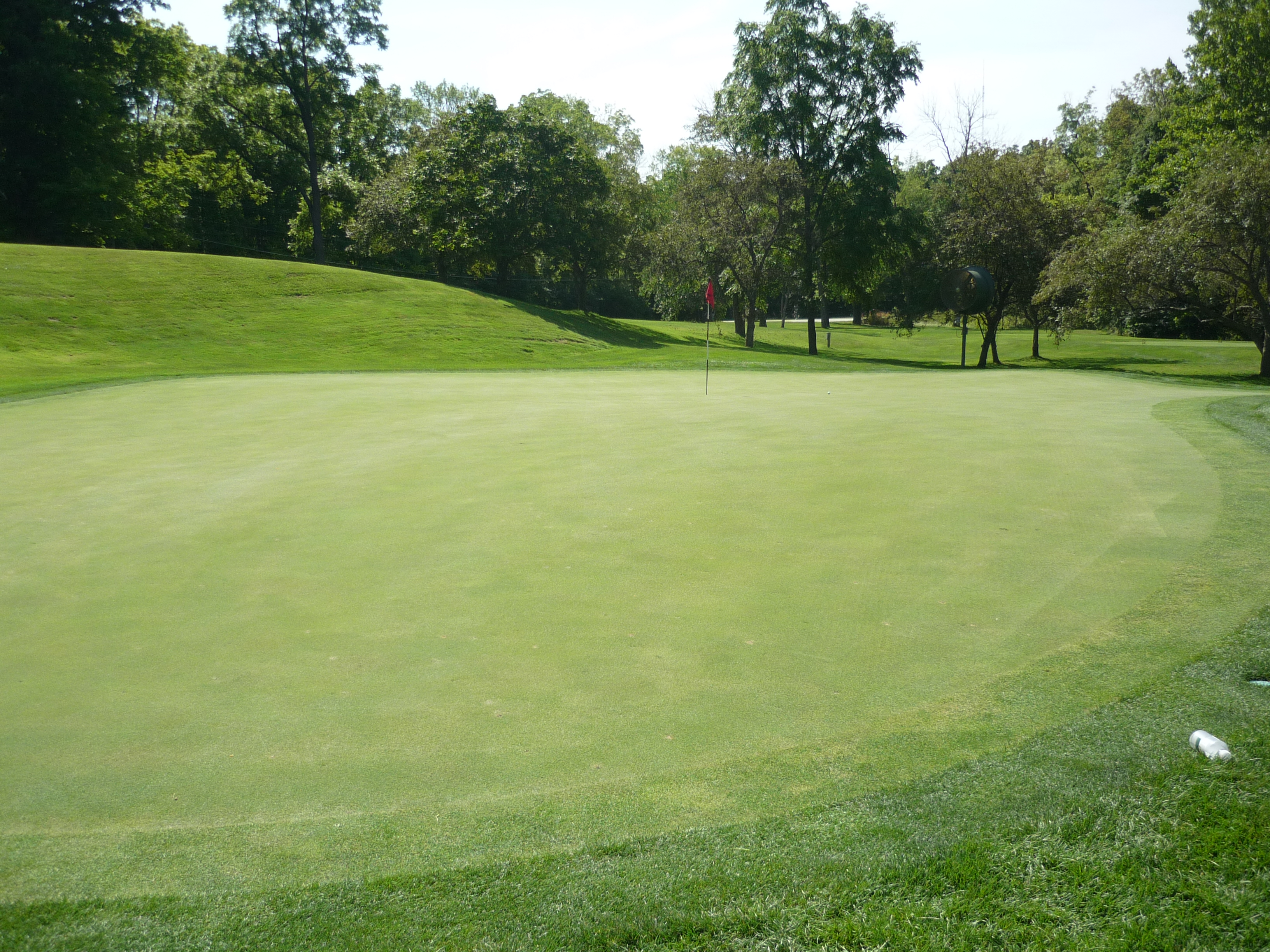
And another angle. You can see that the green tilts from left to right as this picture is from the right side.

Hole 14 – 421 yards – Par 4
This hole doglegs to the left and can play quite long. If you hit it up the left side you will have a much shorter approach, but that will involve dealing with the creek. Our caddies told us that the pros take it up over the trees on the left. That is a different game than what I play.
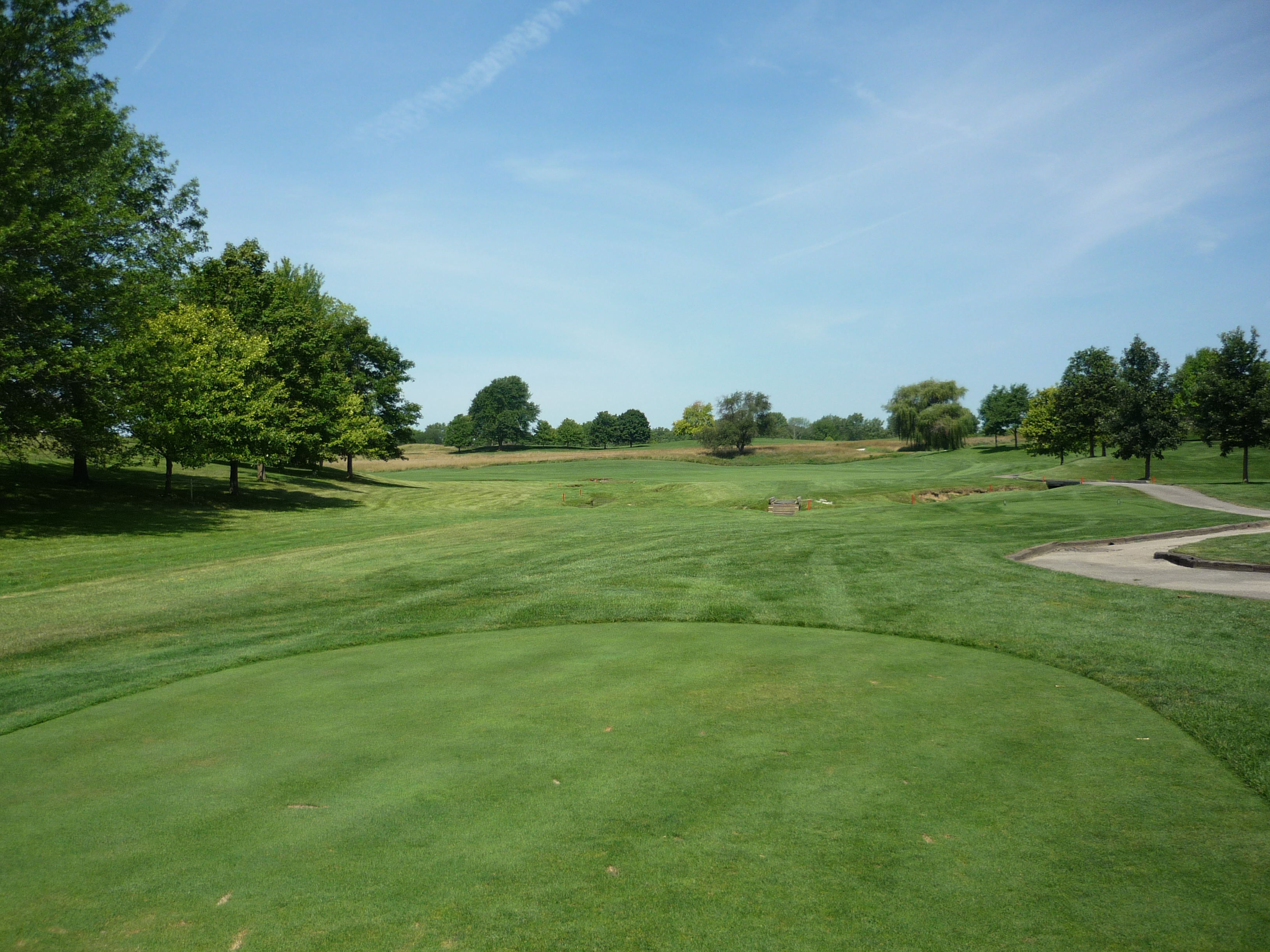
As I said the approach can play long. The green is elevated and guarded by bunkers. The creek also extends most of the way up the left side.
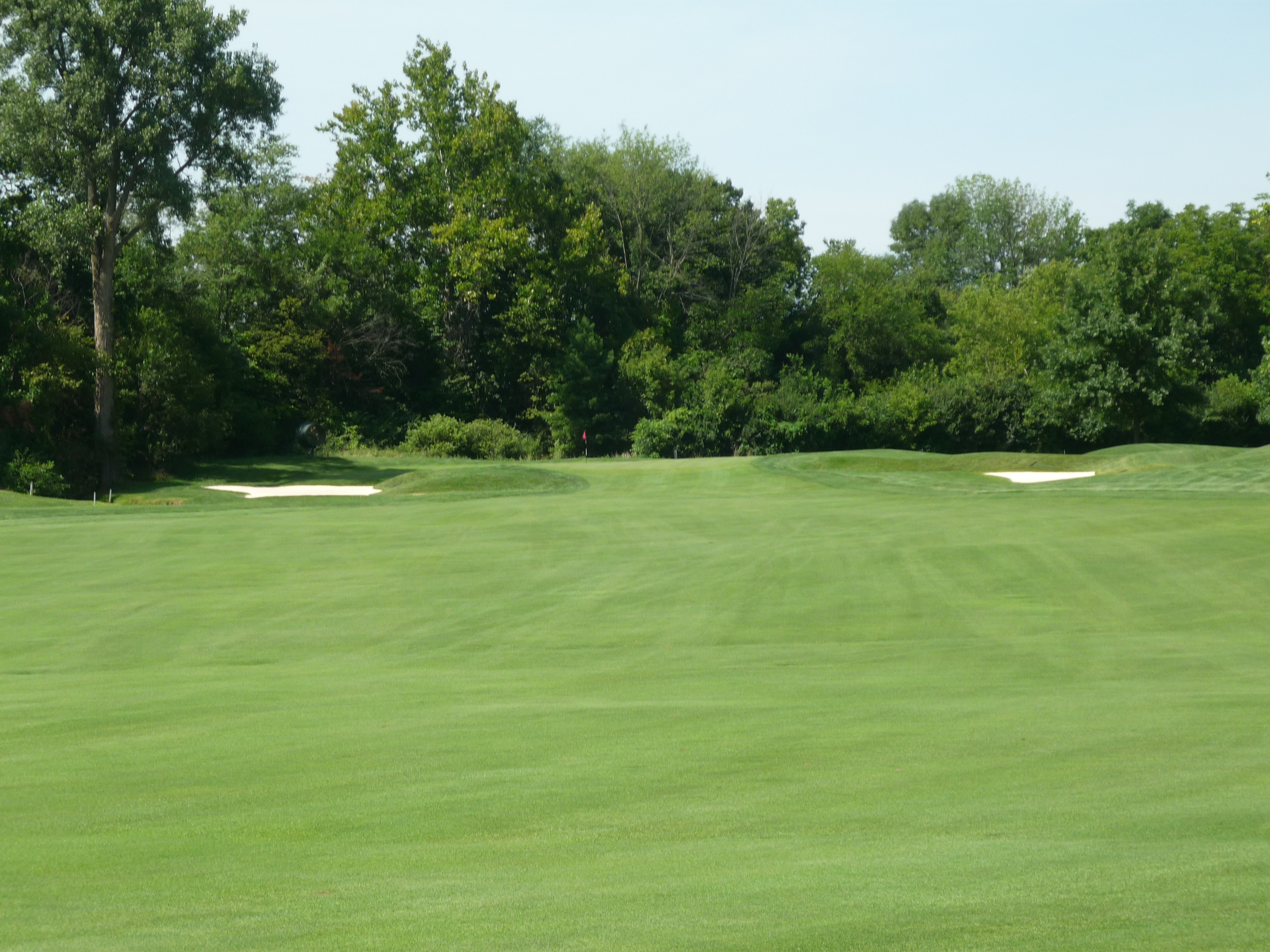
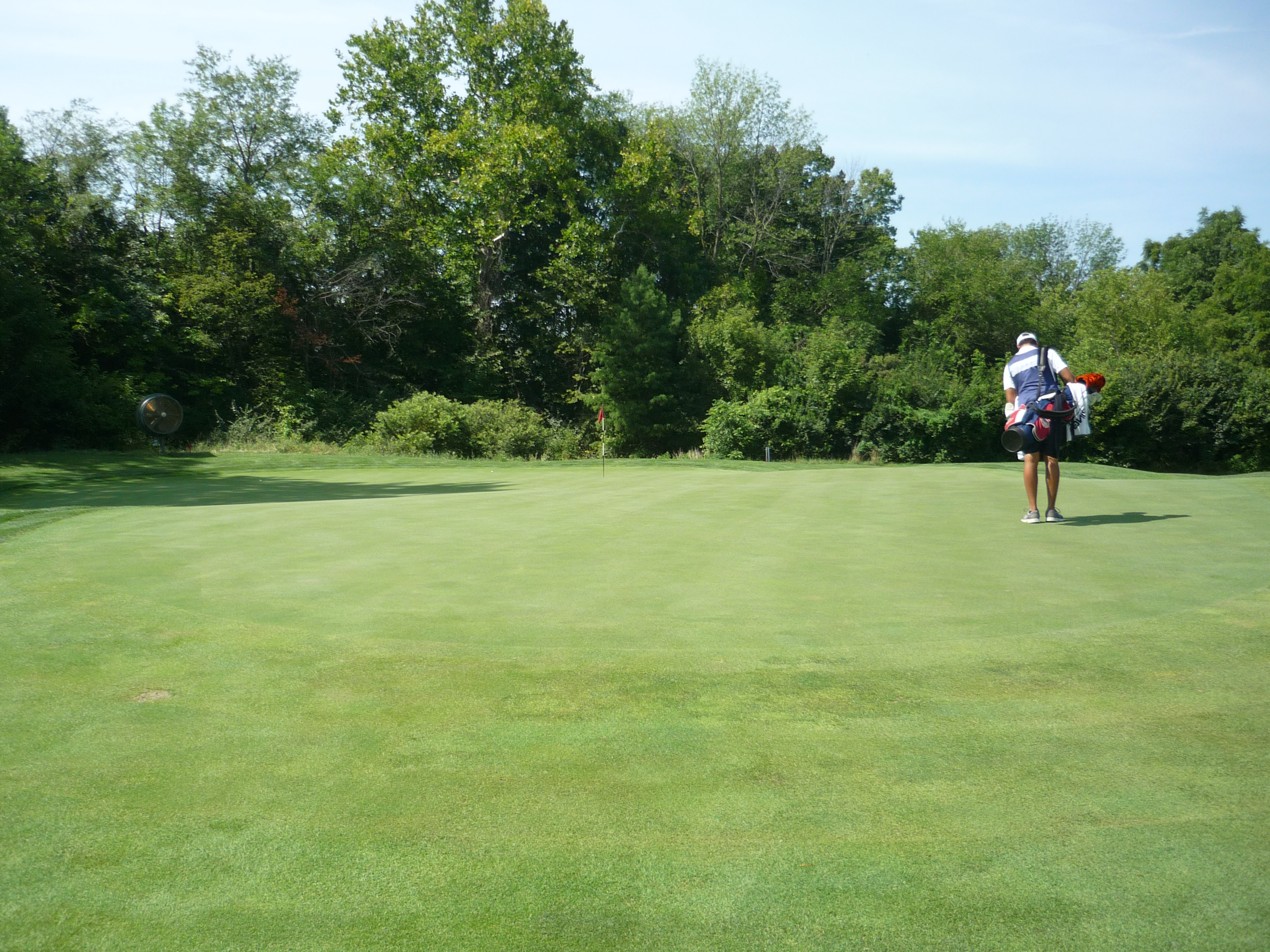
In the shot below you can see the grade of the slope with the people standing there to give perspective.
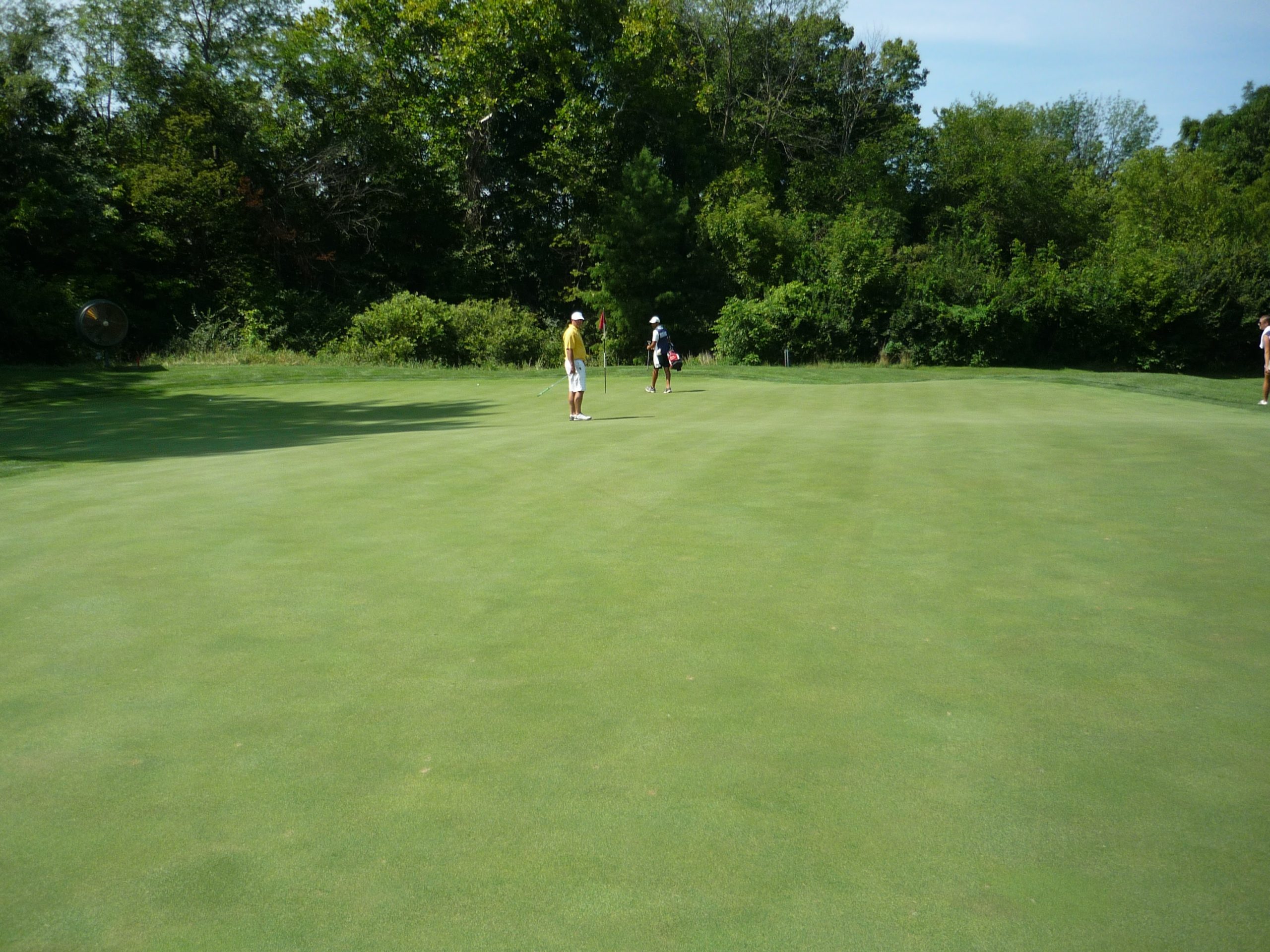
Hole 15 – 484 yards – Par 5
This is the first par five that has been reachable in two. The best line is at the tree in the middle of the picture just right of the bunker.
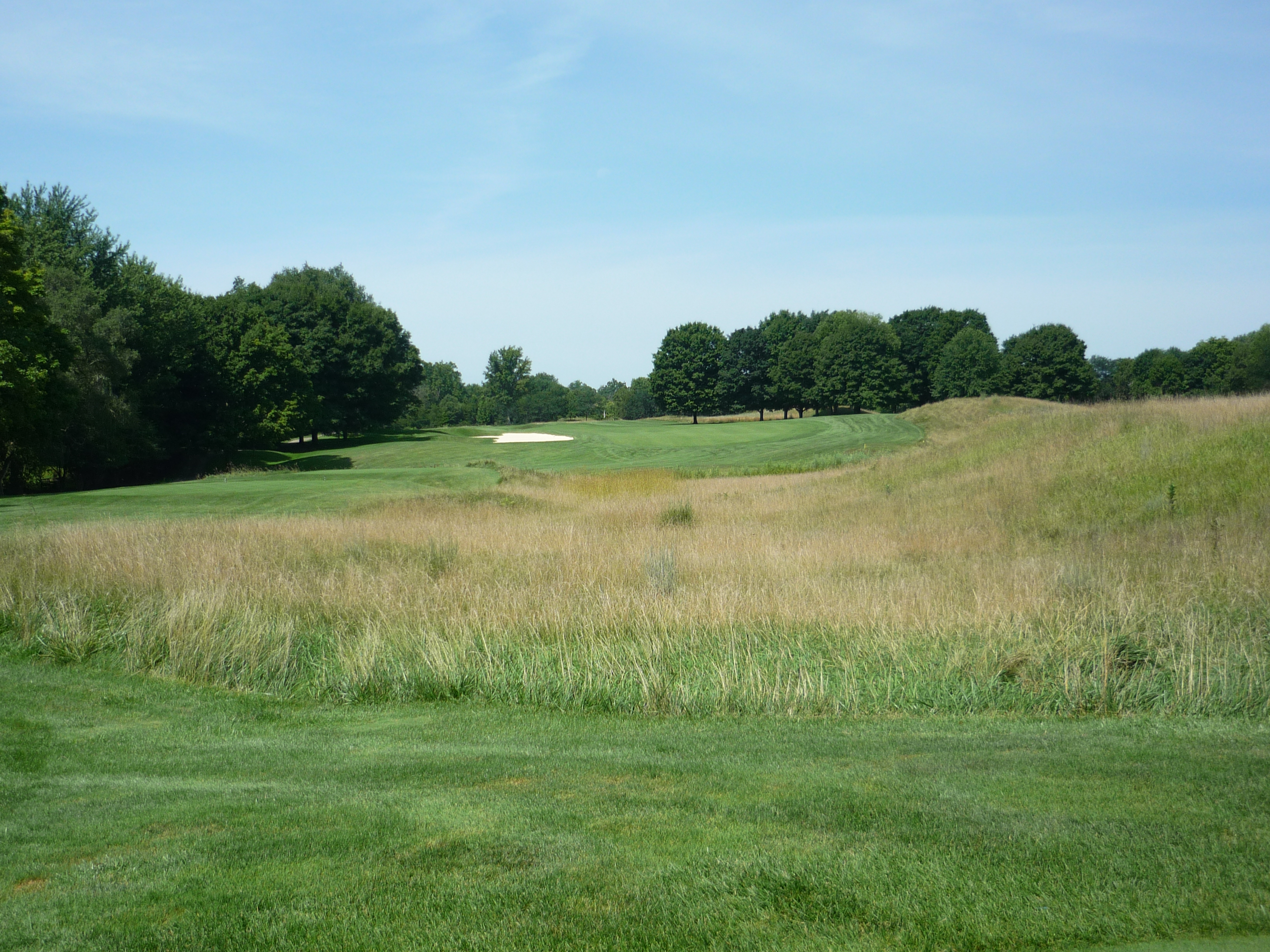
The second shot is below.
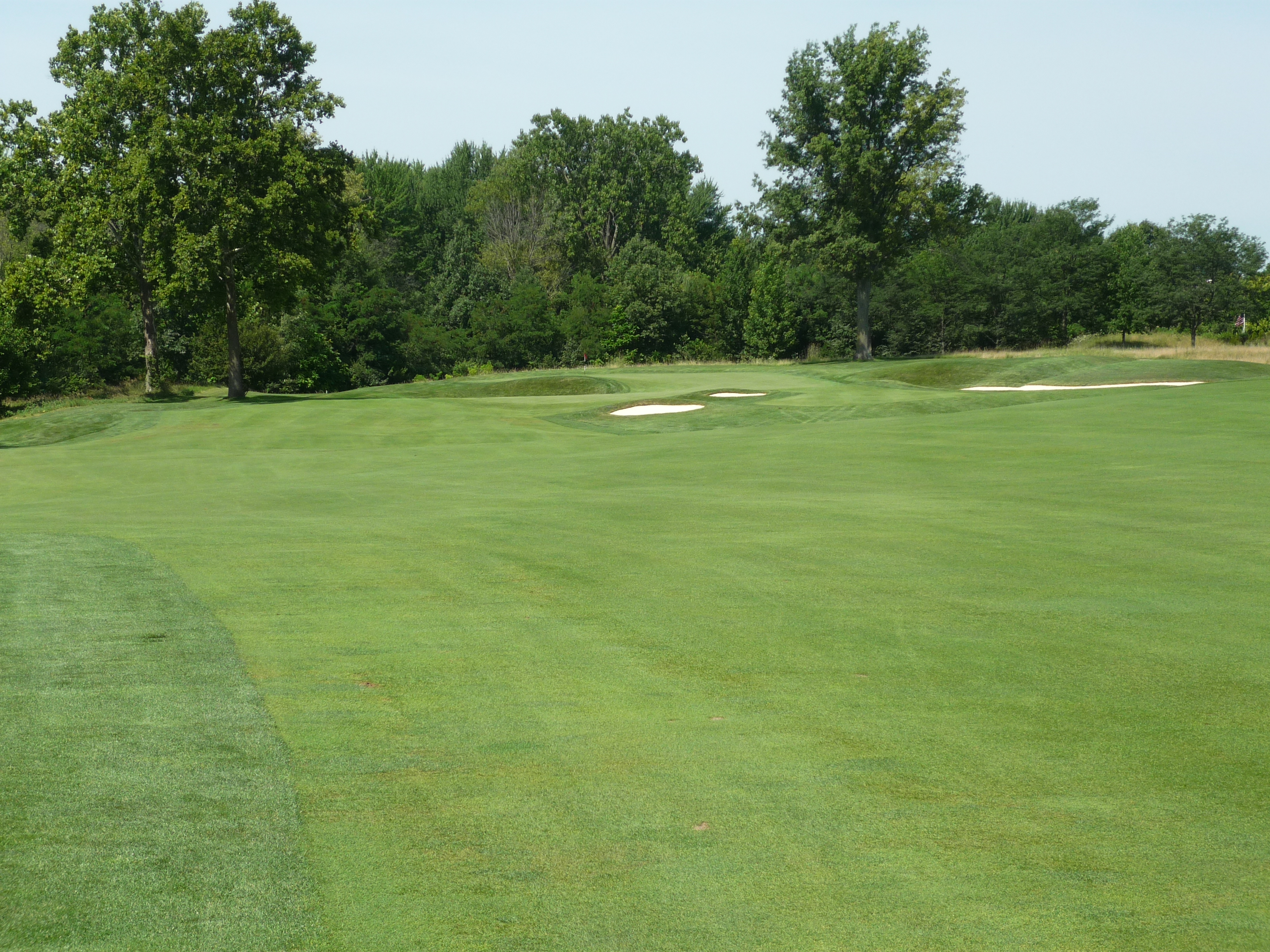
The bunker below guards much of the left side. I thought it was very interesting.
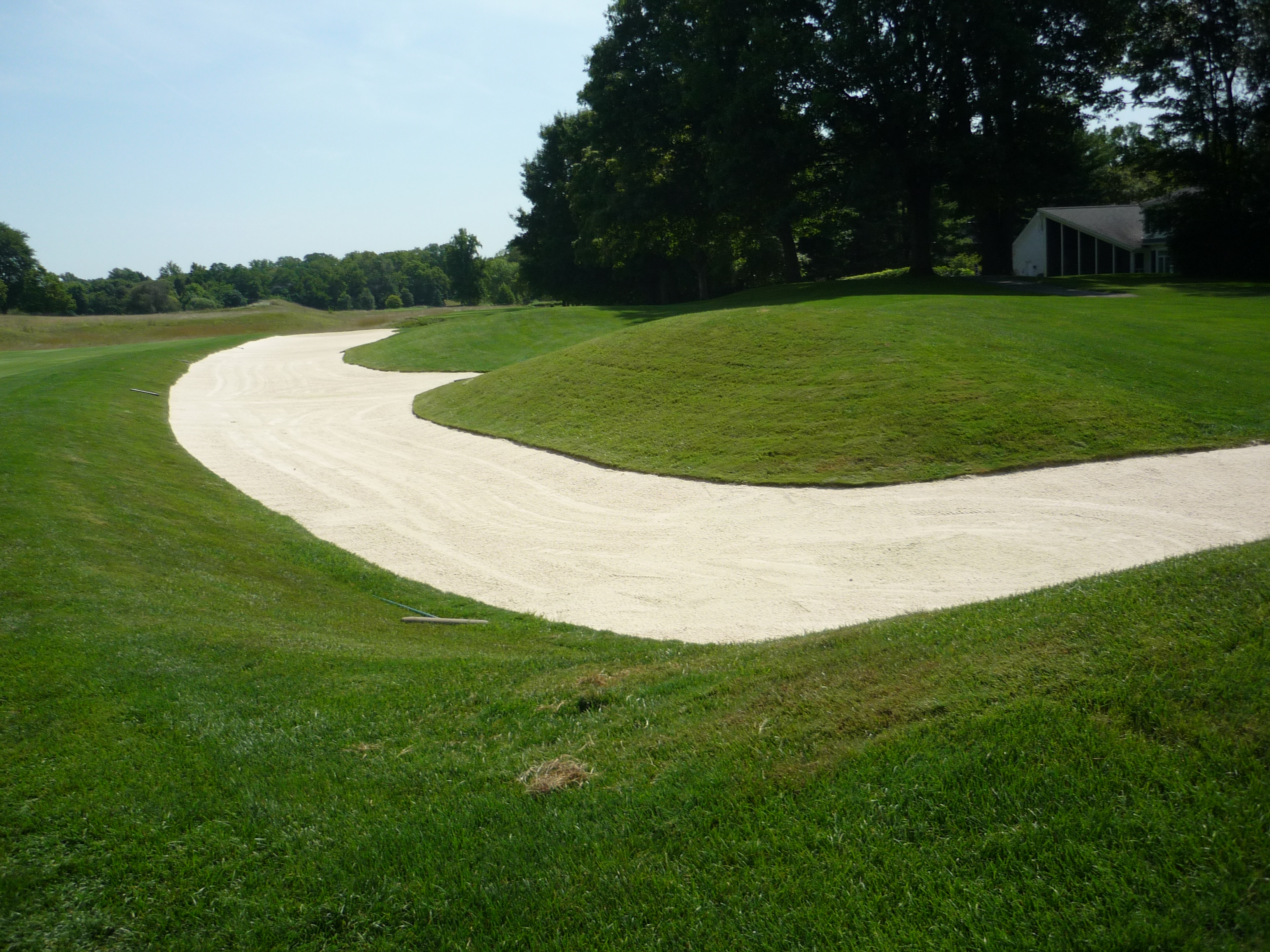
The approach can be seen below. Due to the contours of the land, you can’t see the whole green shape or what is around it.
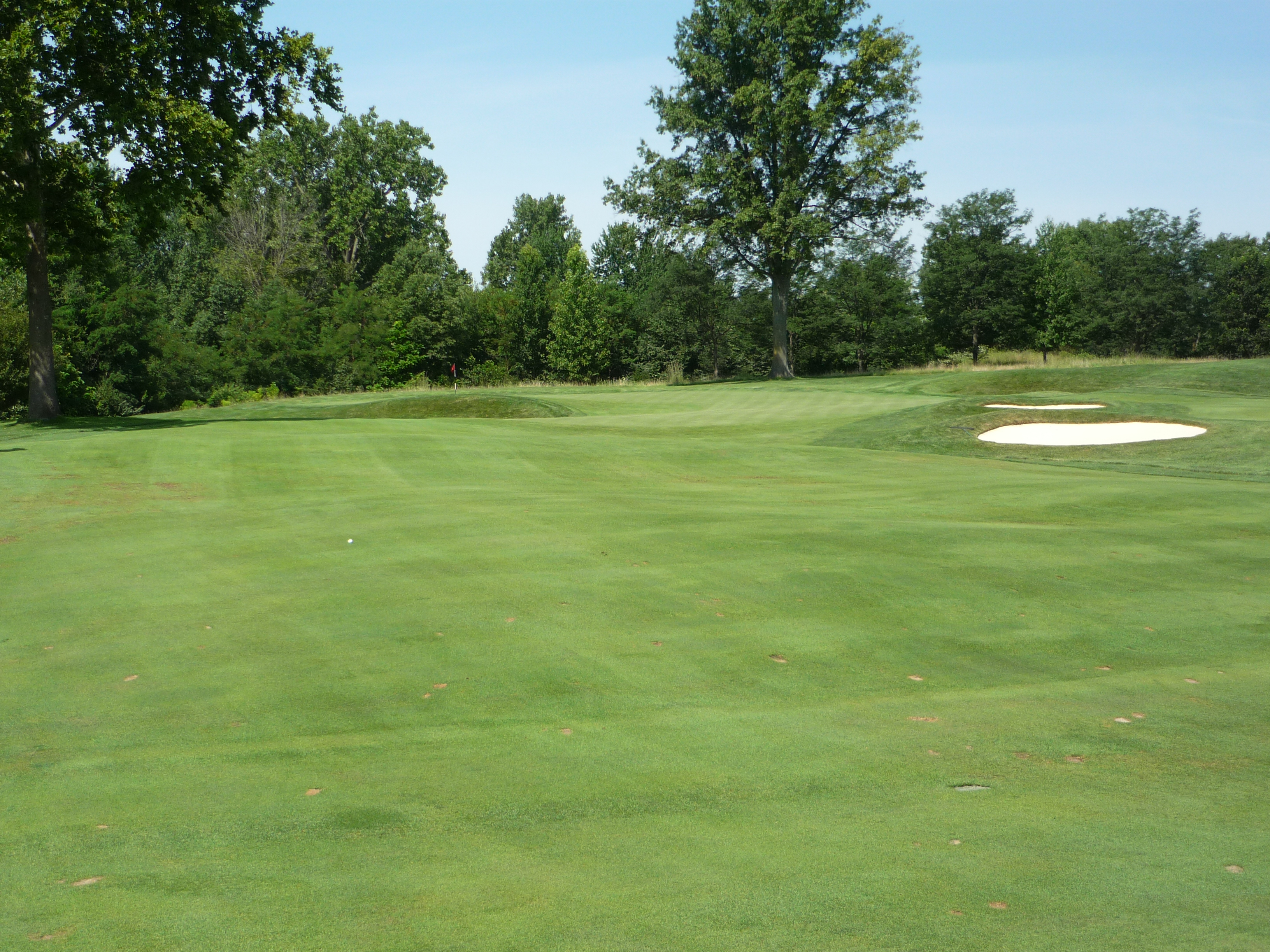
This closer version lets you know that there is probably something on the left. You can also start to make out the unusual green shape.
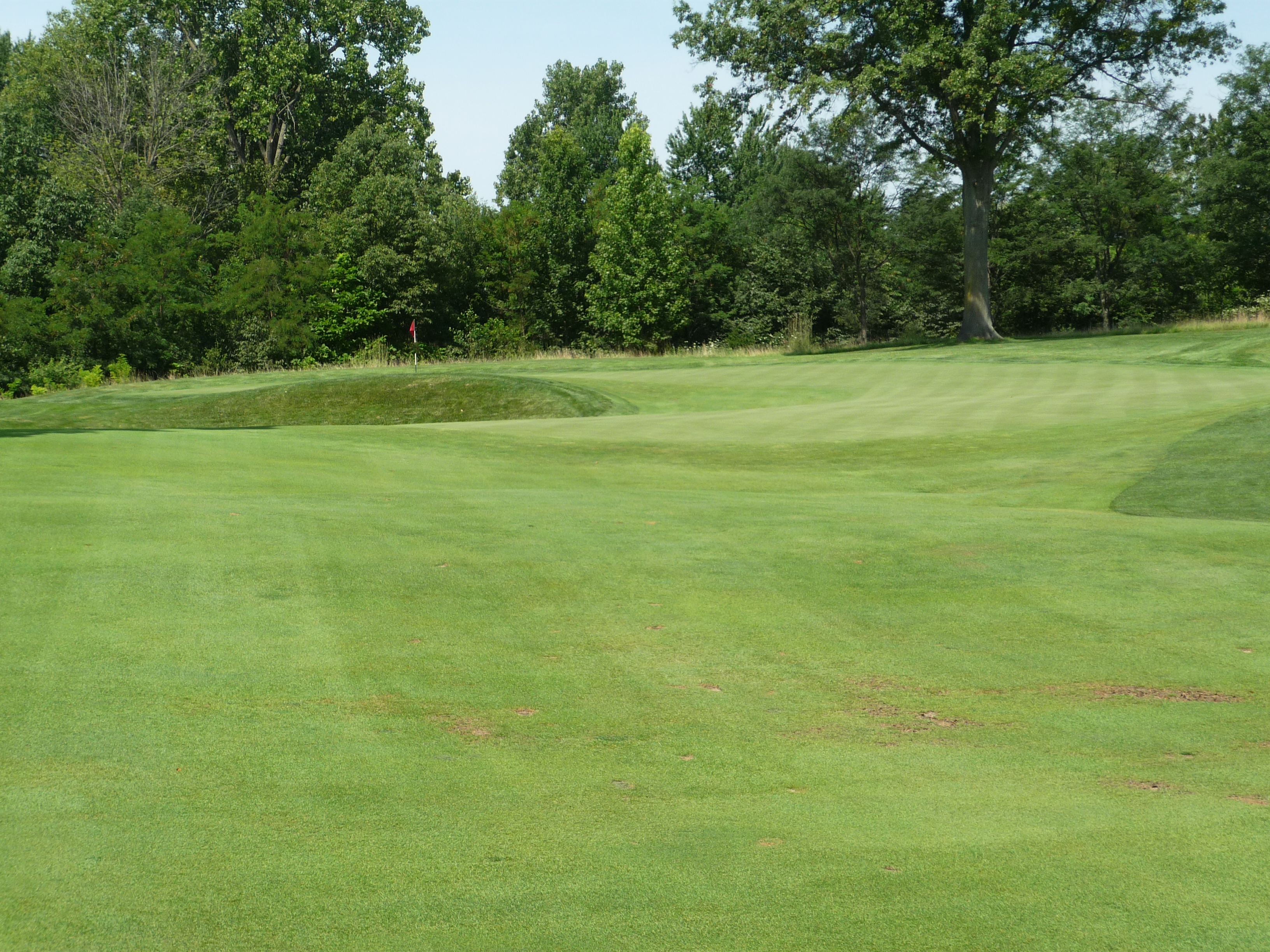
The green almost looks like a big comma. It starts left and bends around a bunker to another section behind the bunker.
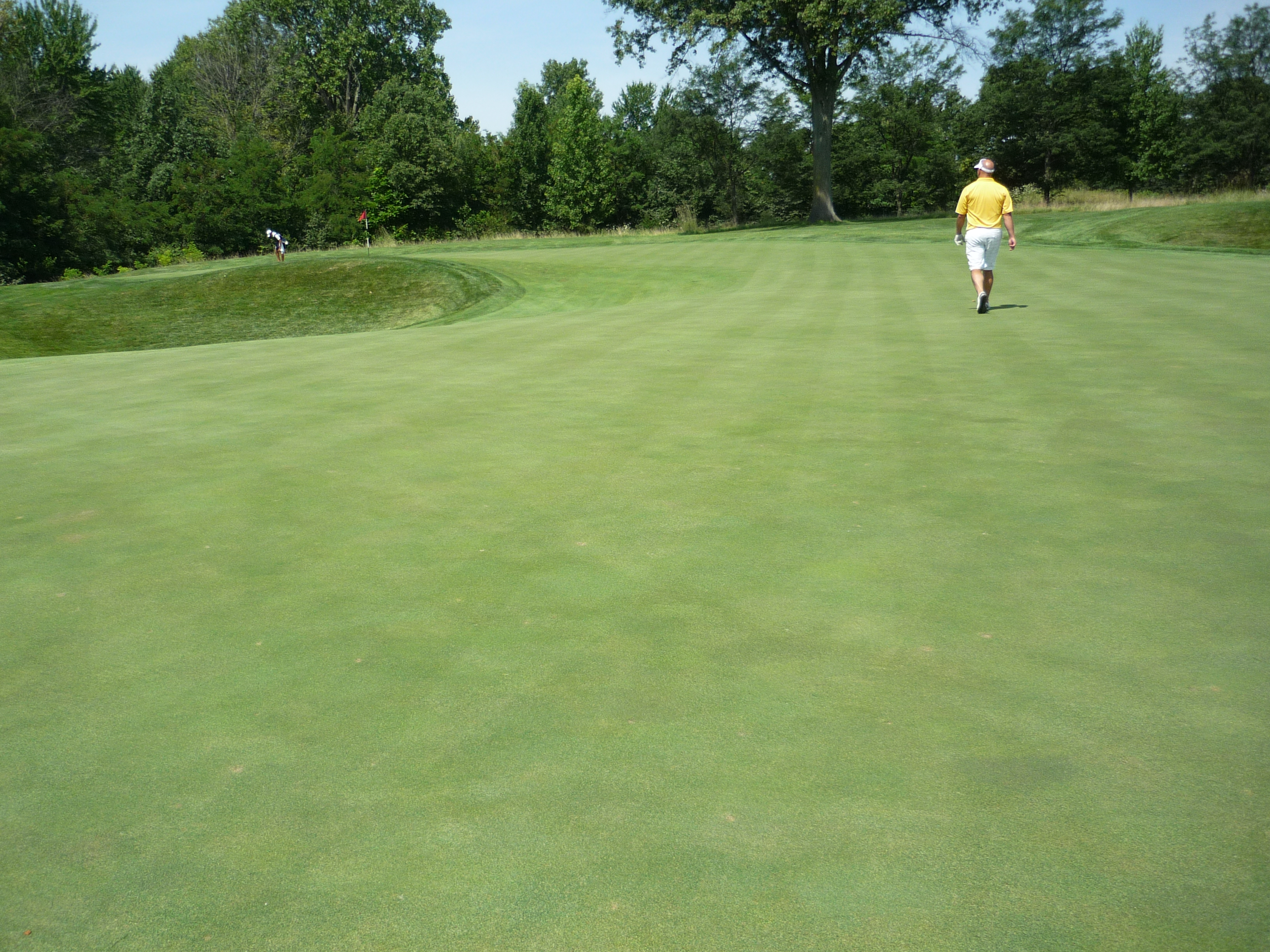
Below you can see the bunker fronting the back portion of the green.
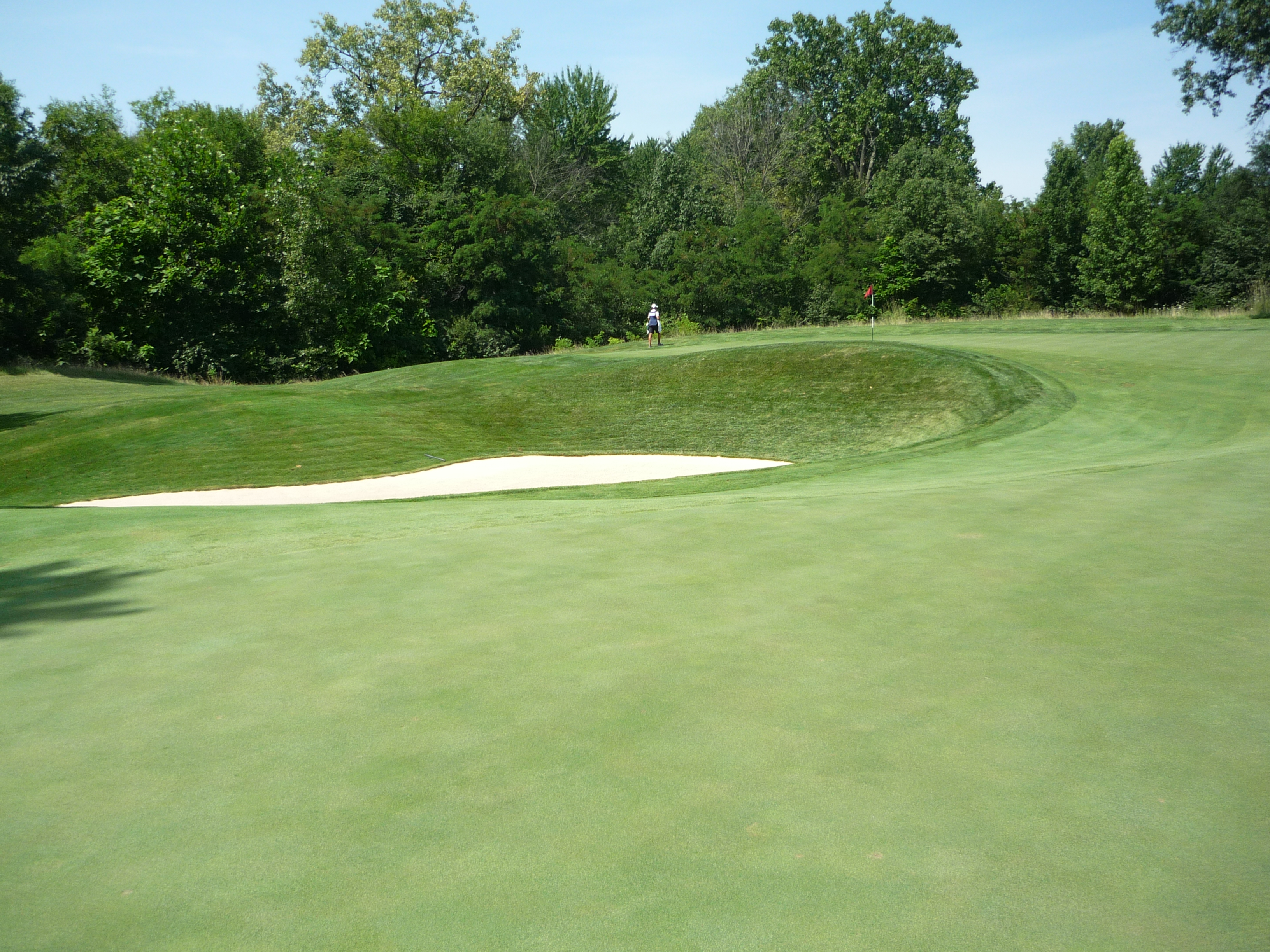
Hole 16 – 407 yards – Par 4
This tee shot is right in front of you. A long drive down the middle is all you need to think about.
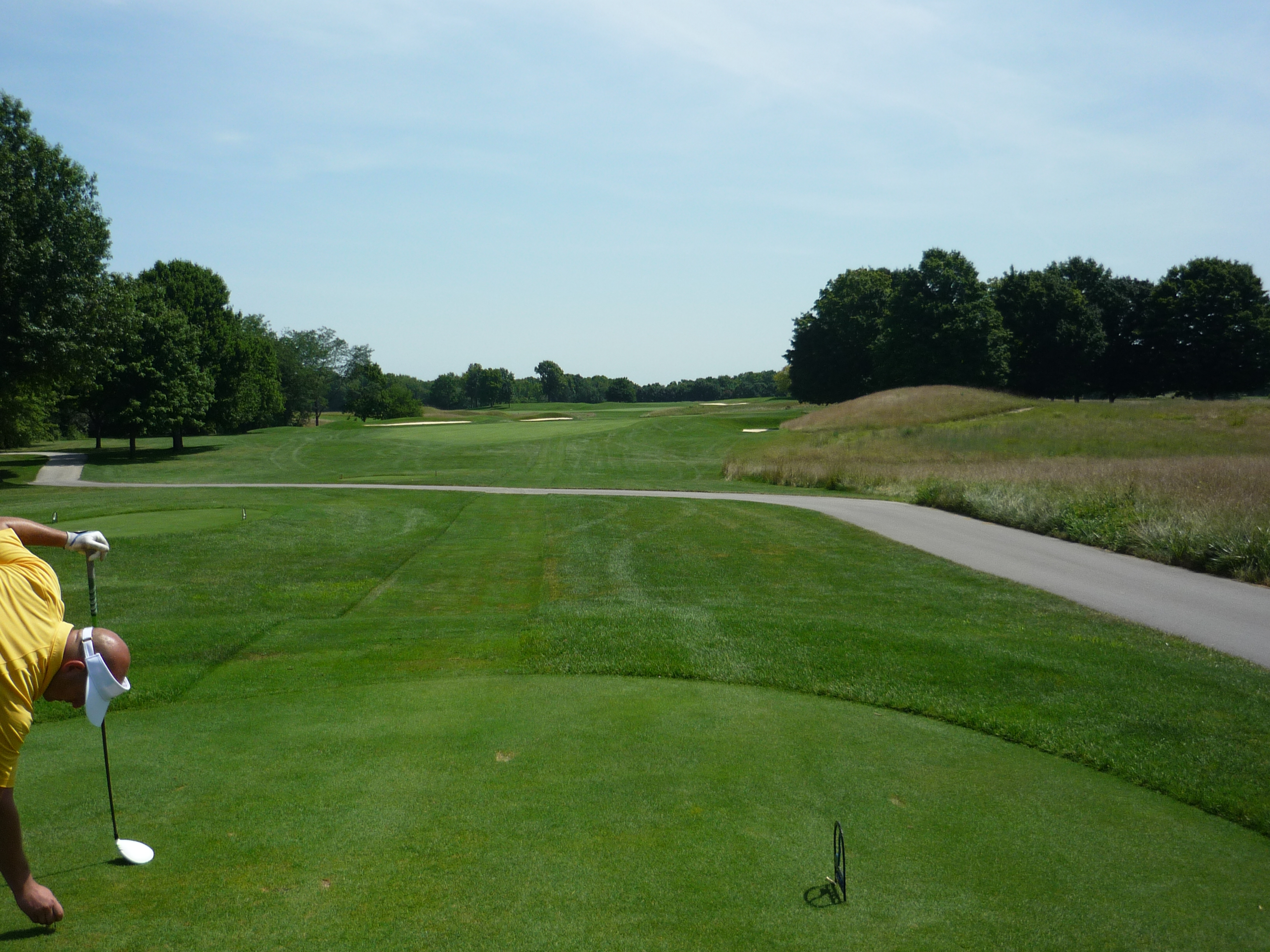
The approach shot must avoid the pond on the right. You will see the green in a couple of photos, but you need to know where the flag is because of the contours.
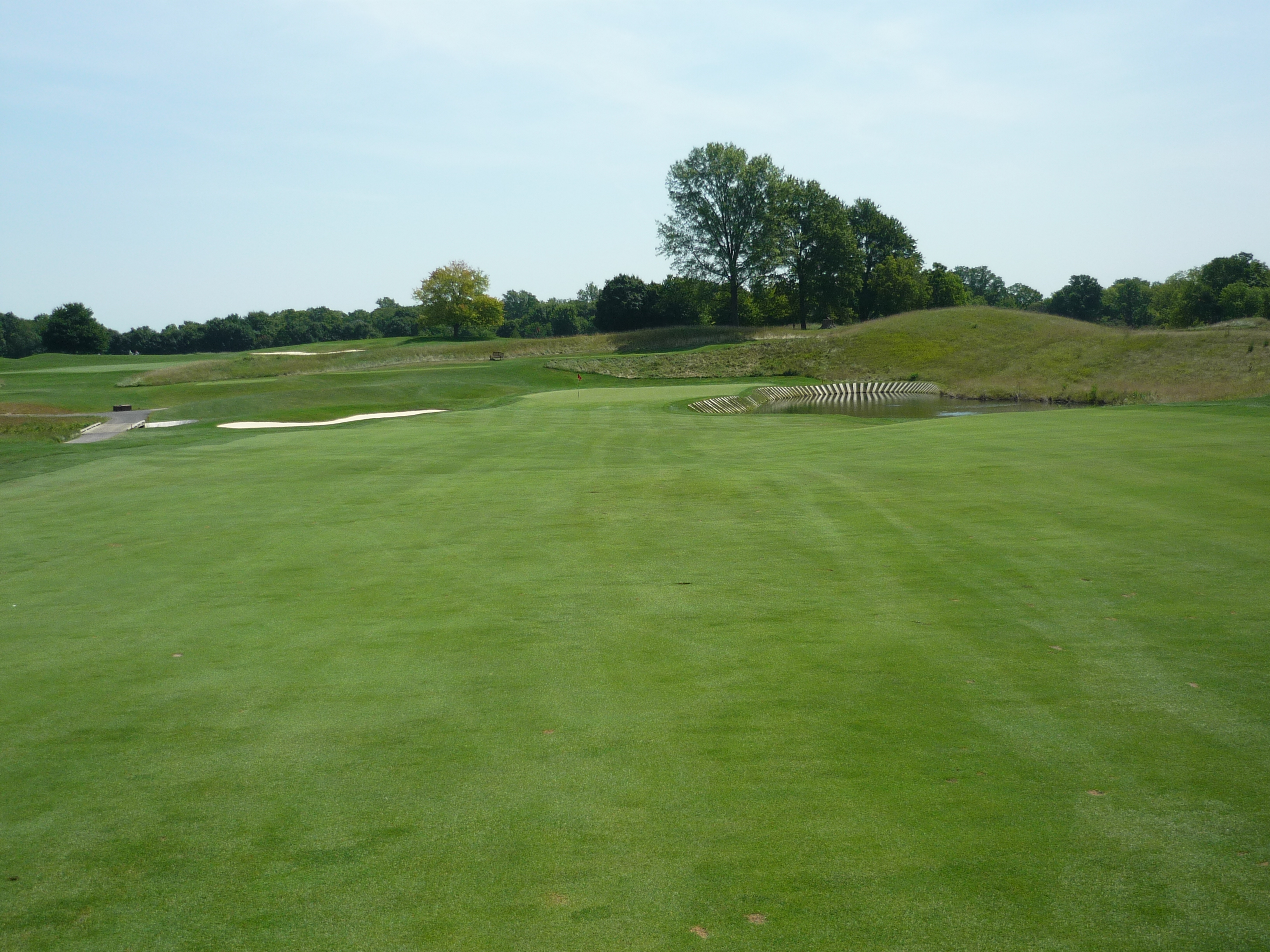
Here is a closer look at the second shot.
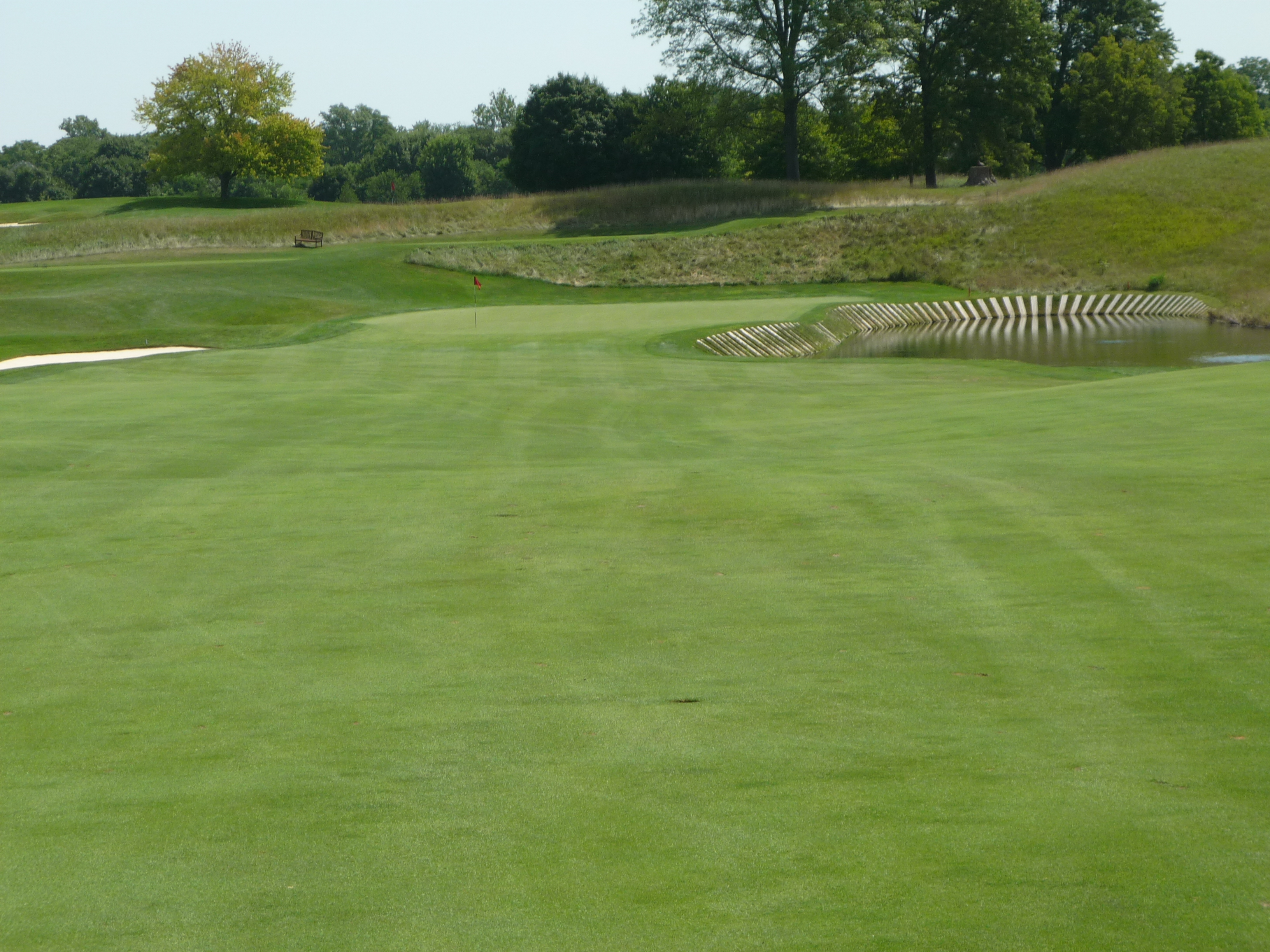
The green has two tiers that you can see below. There is a big swale in the middle that bisects the green.
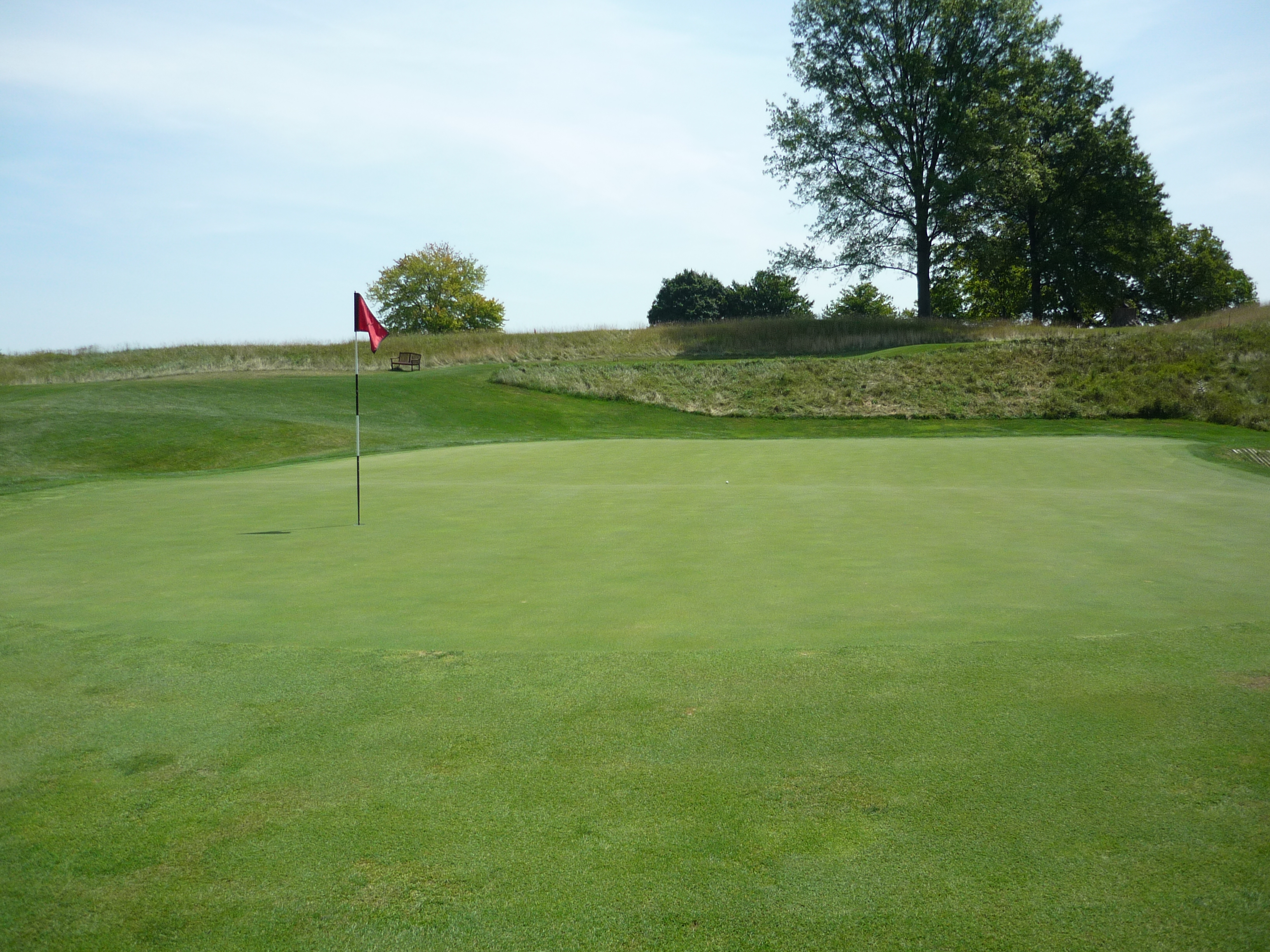
The backside of the green is seen below.
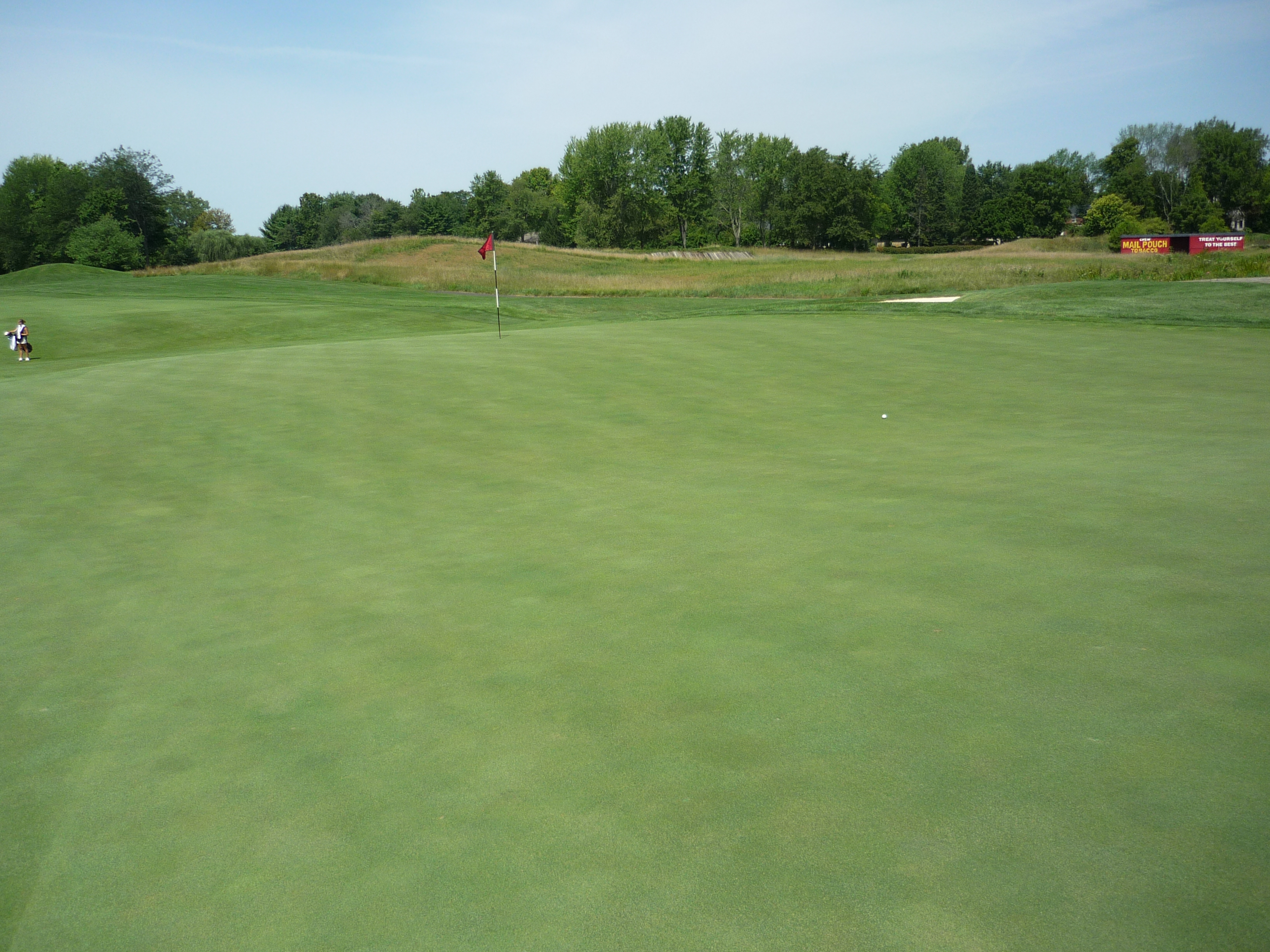
This photo below of the left side of the green illustrates the extreme slope in the middle of the green.
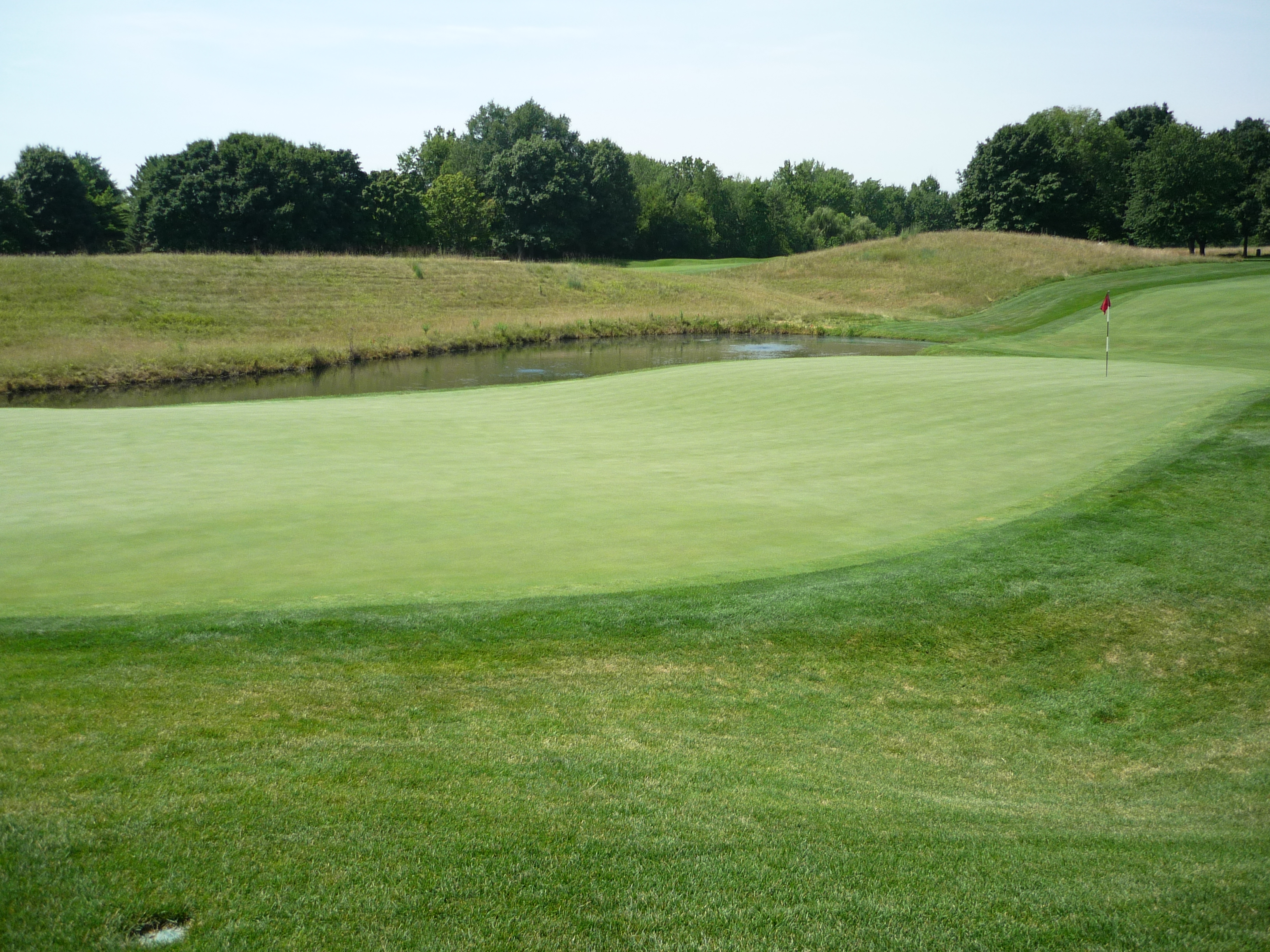
Hole 17 – 180 yards – Par 3
This hole is dangerous. There is water all along the left side waiting to swallow any ball hit that way.
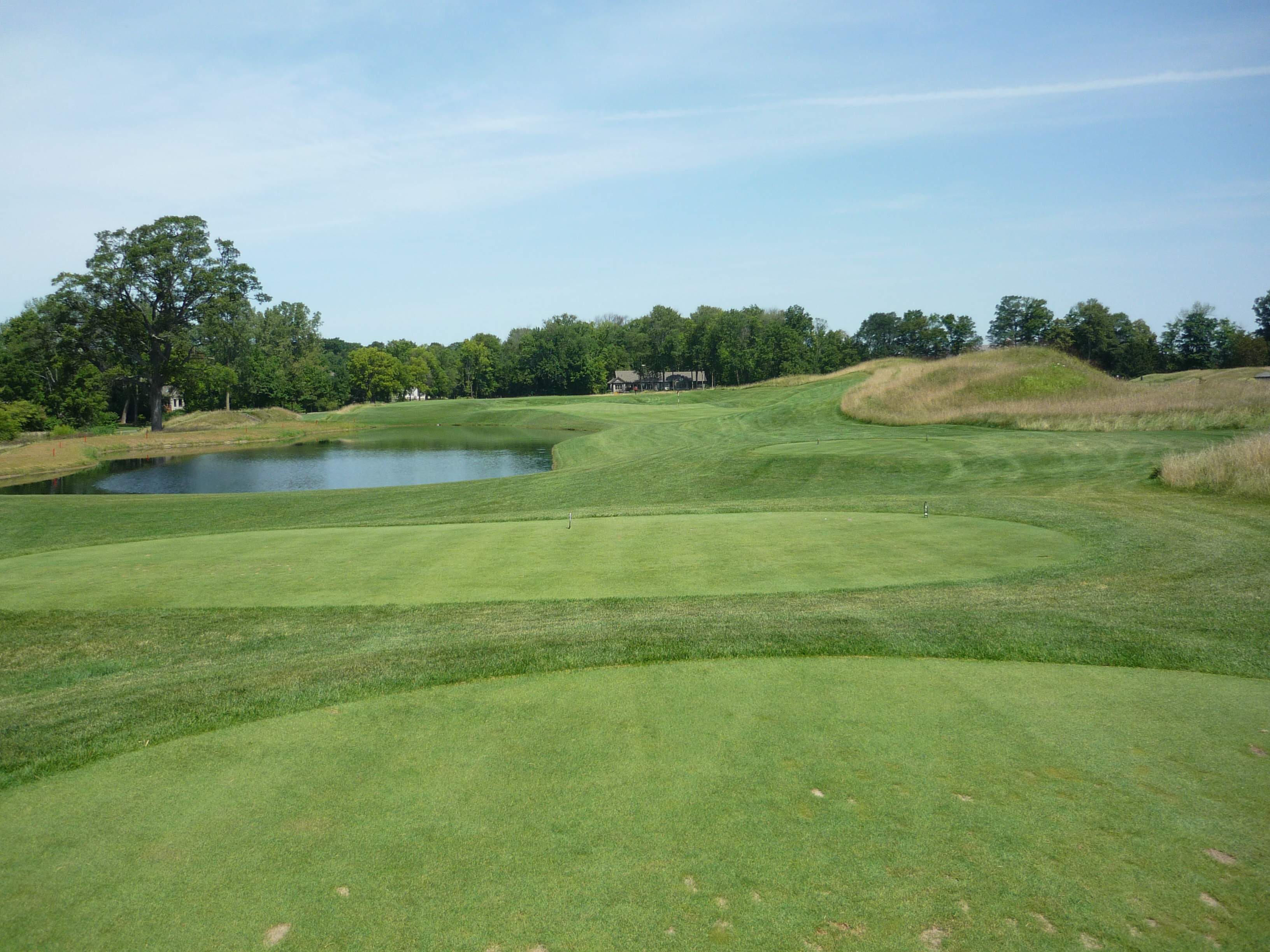
This closer look shows the orientation of the green to the water. Don’t miss left!
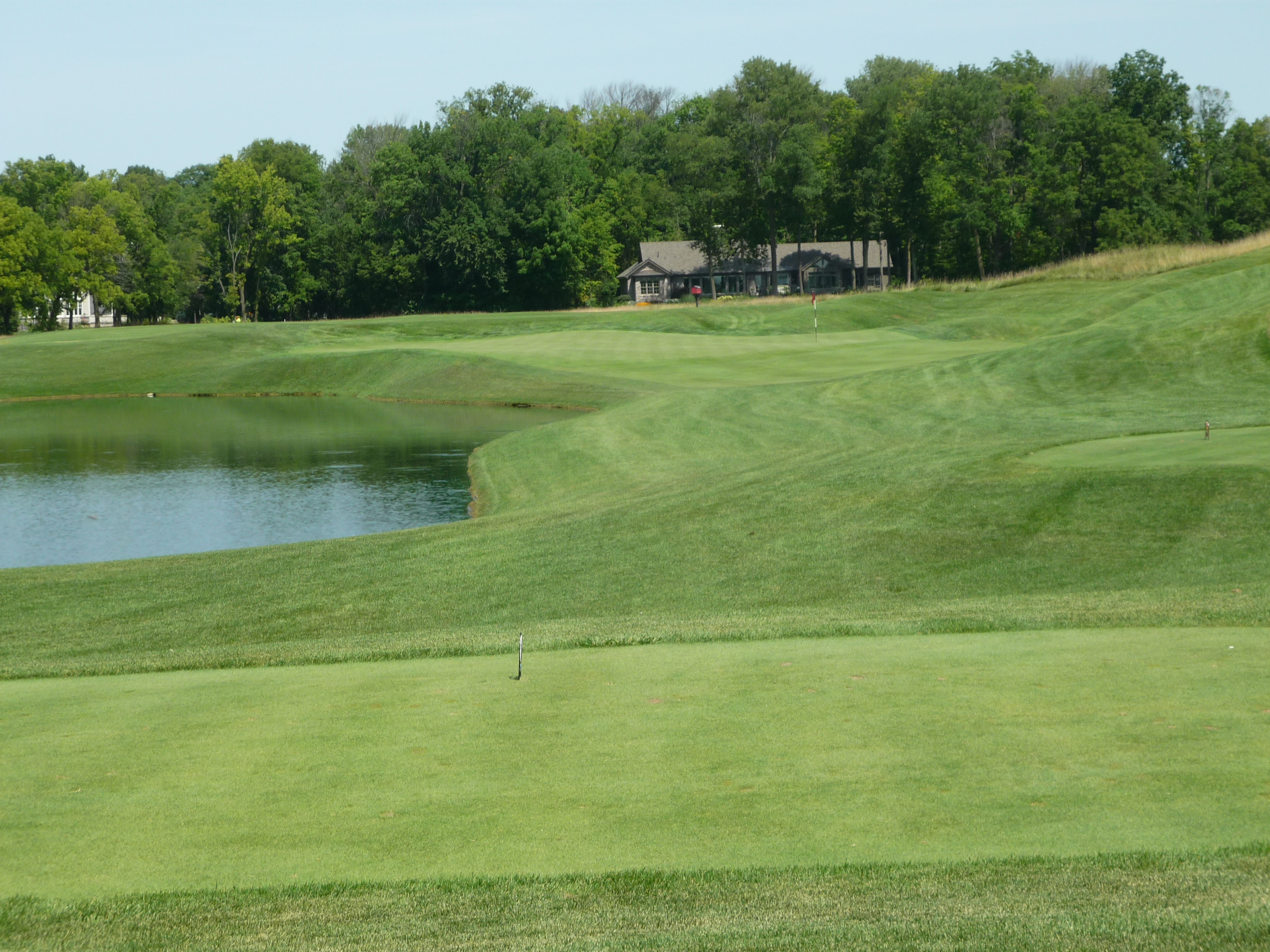
Below is the railroad car near the hole. I thought this was a unique aspect of the course that you just don’t see other places.
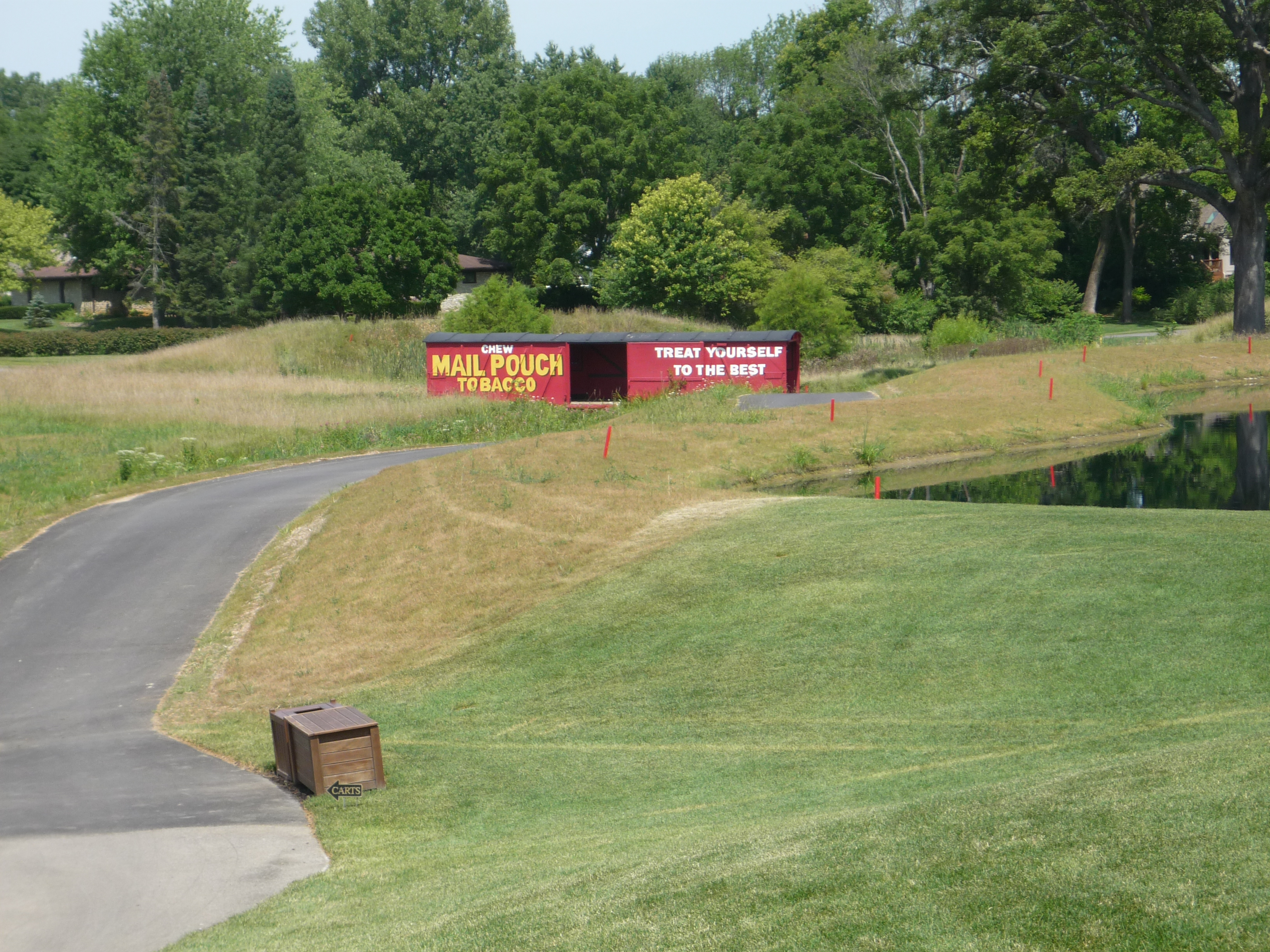
A closer shot of the green is below.
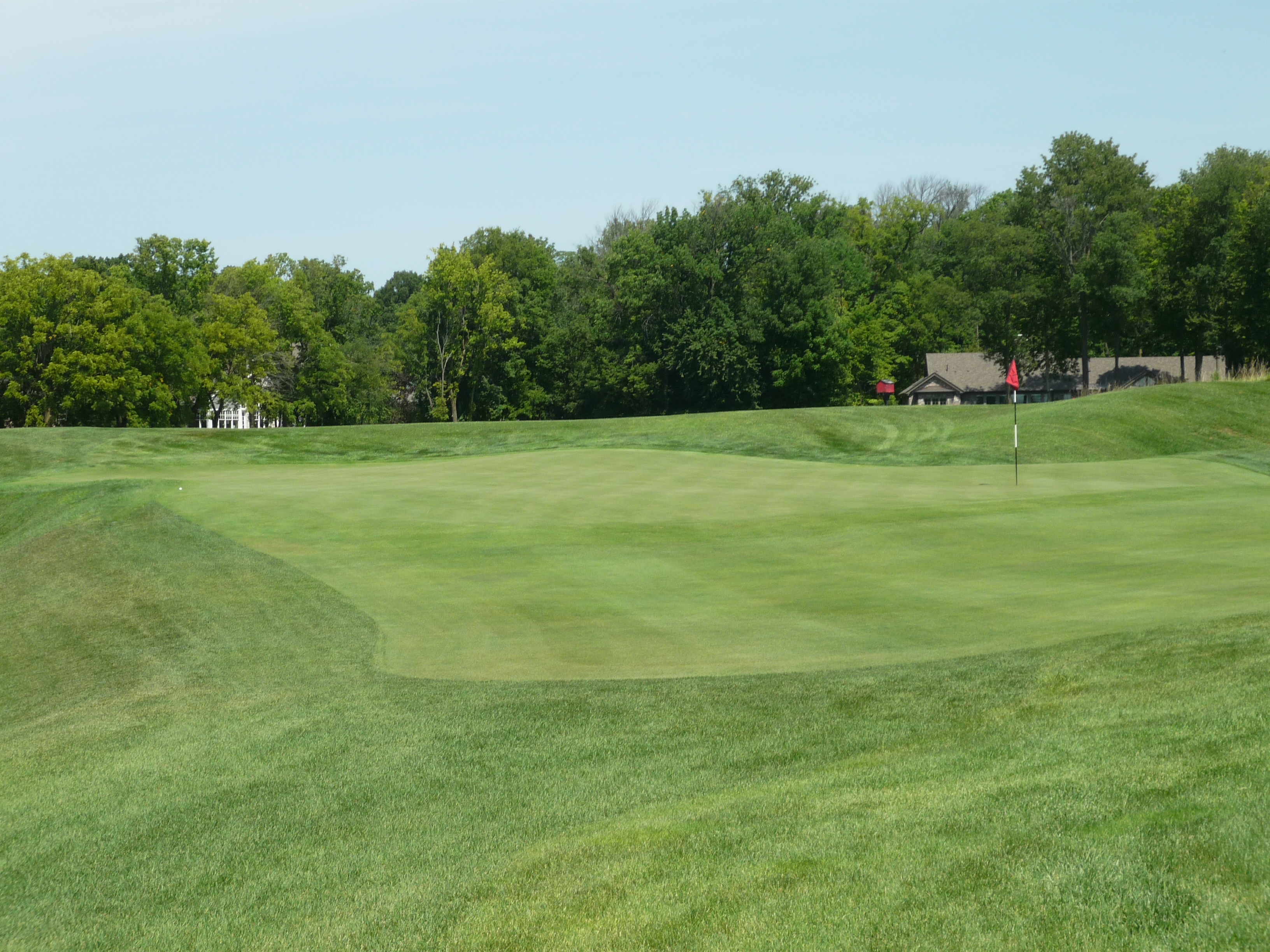
You can see the slope of the green from the front view below. There is more on the right side of the putting surface.
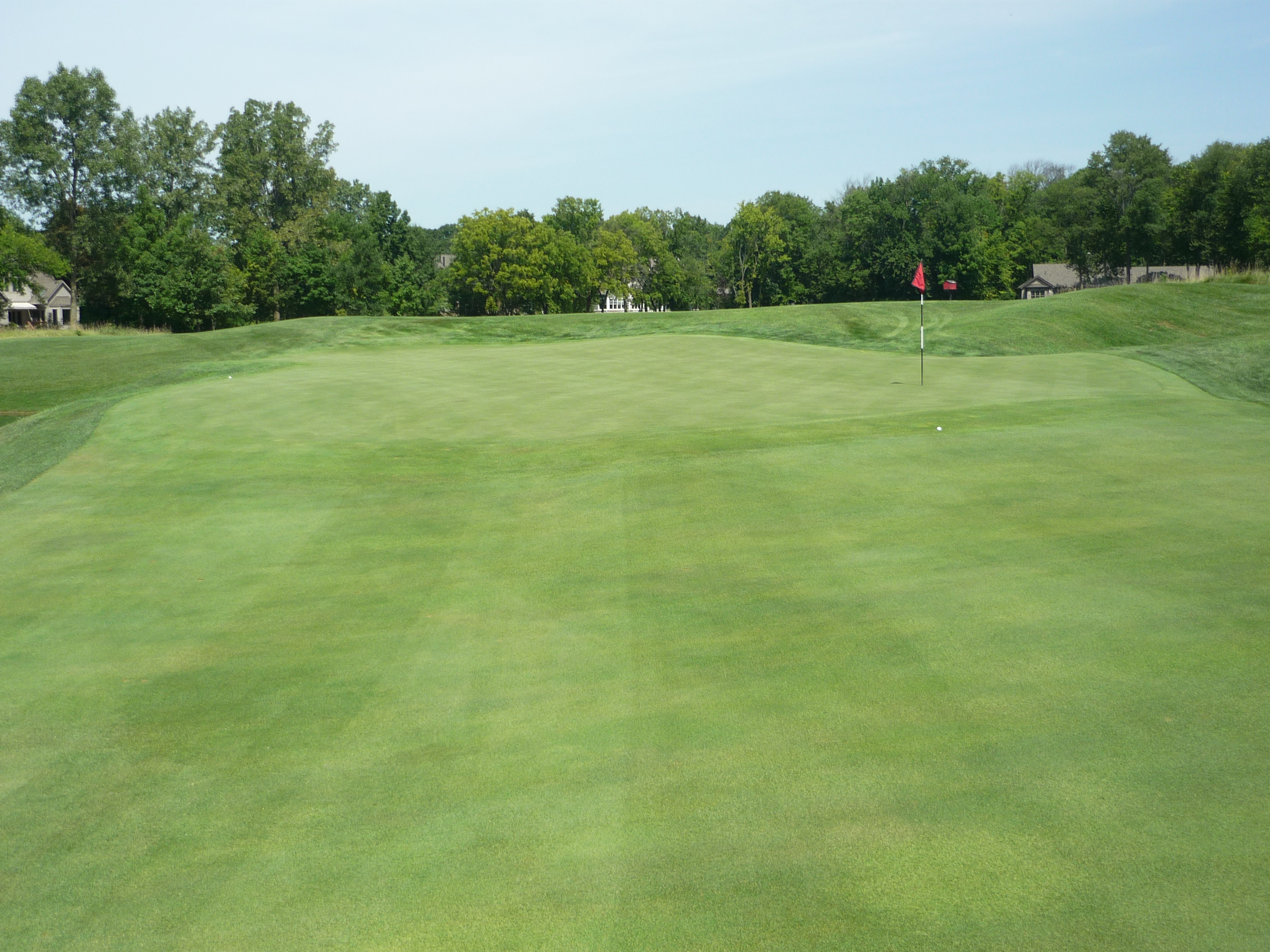
You can also see the slope from this behind the green angle.
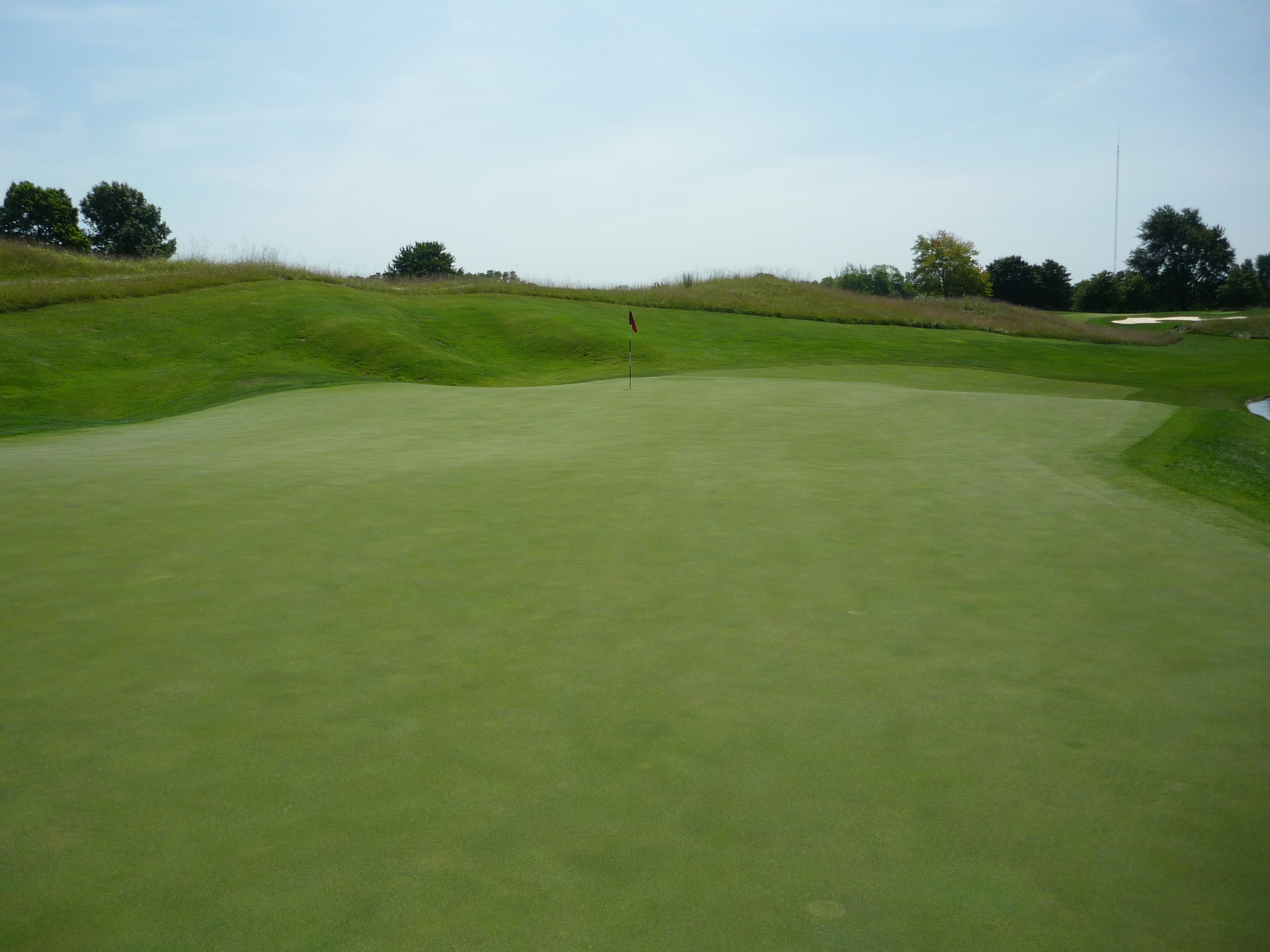
Hole 18 – 408 yards – Par 4
The finishing hole is demanding. There is a pond up the right side that must be carried slightly. It really helped to have the caddie here to assist on the line.
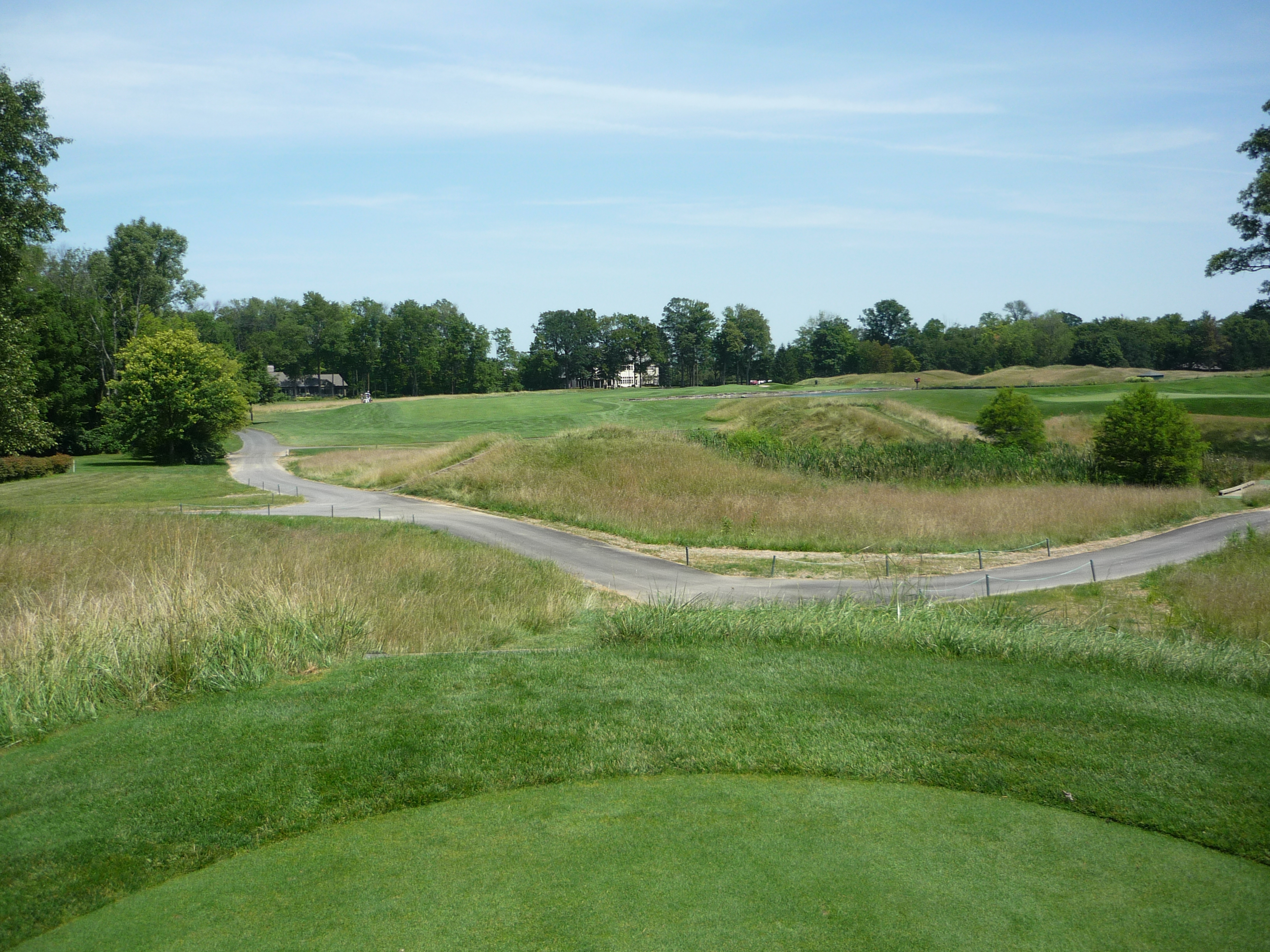
Like at the Pete Dye Golf Club in West Virginia, Crooked Stick has a suggestion box in the middle of a pond. I really like this touch.
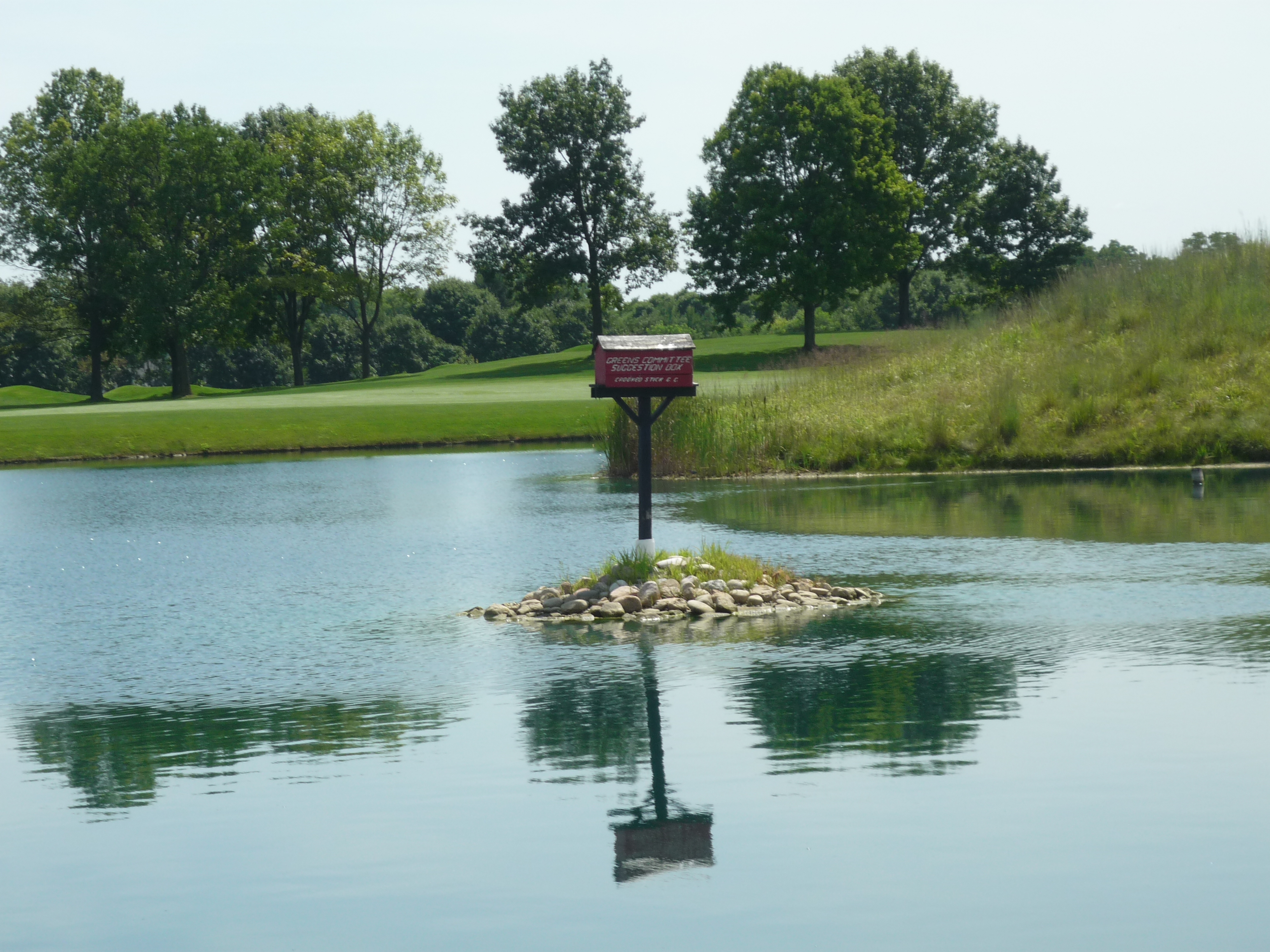
The approach shot must also deal with the pond. There are multiple bunkers on the left. Take dead aim.
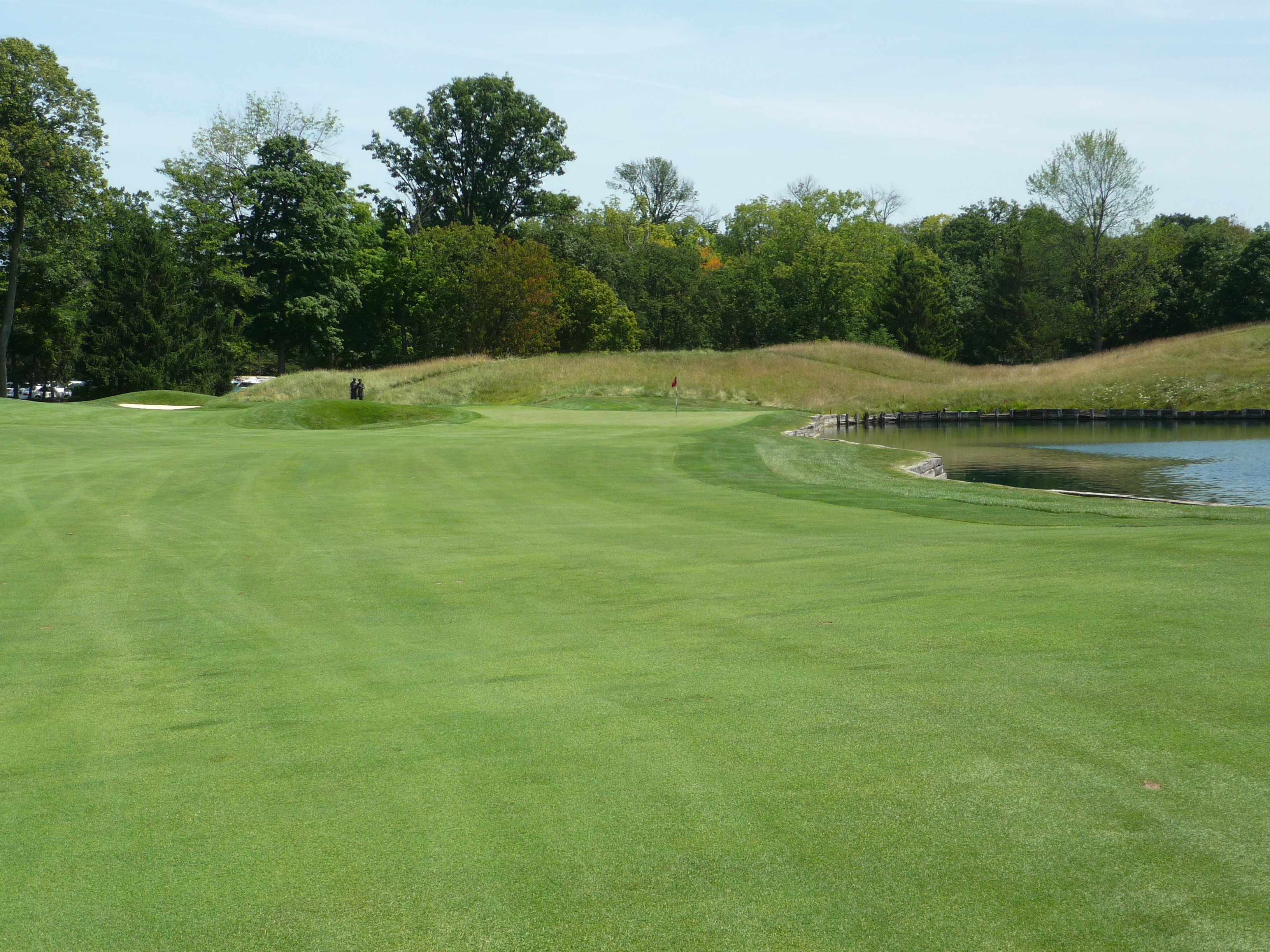
The photo of the green below shows just how close to the water it is.
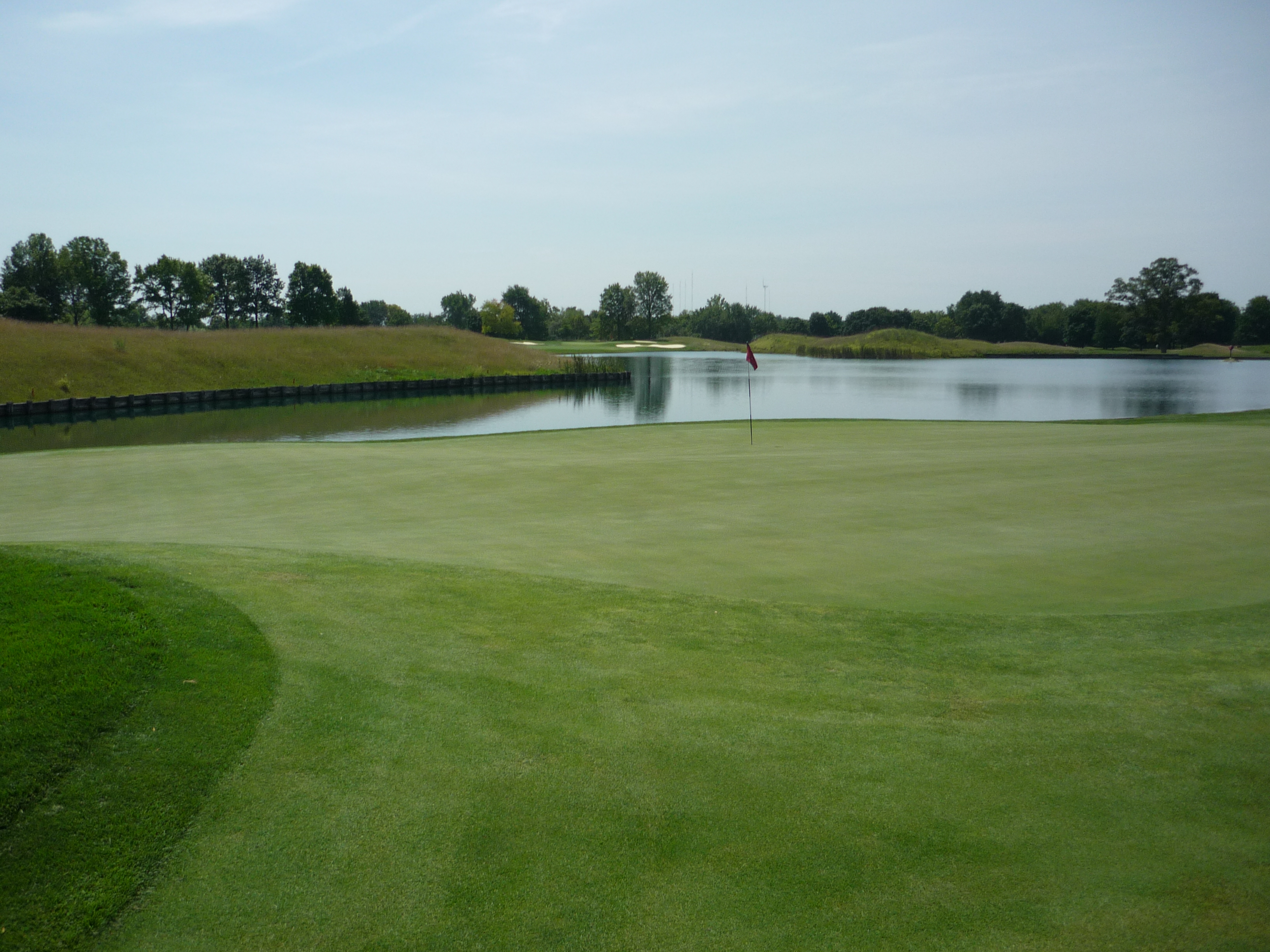
Pete and Alice Dye are represented by a nice statue just off the final green. It is heartwarming to see how close the club is to the Dyes.
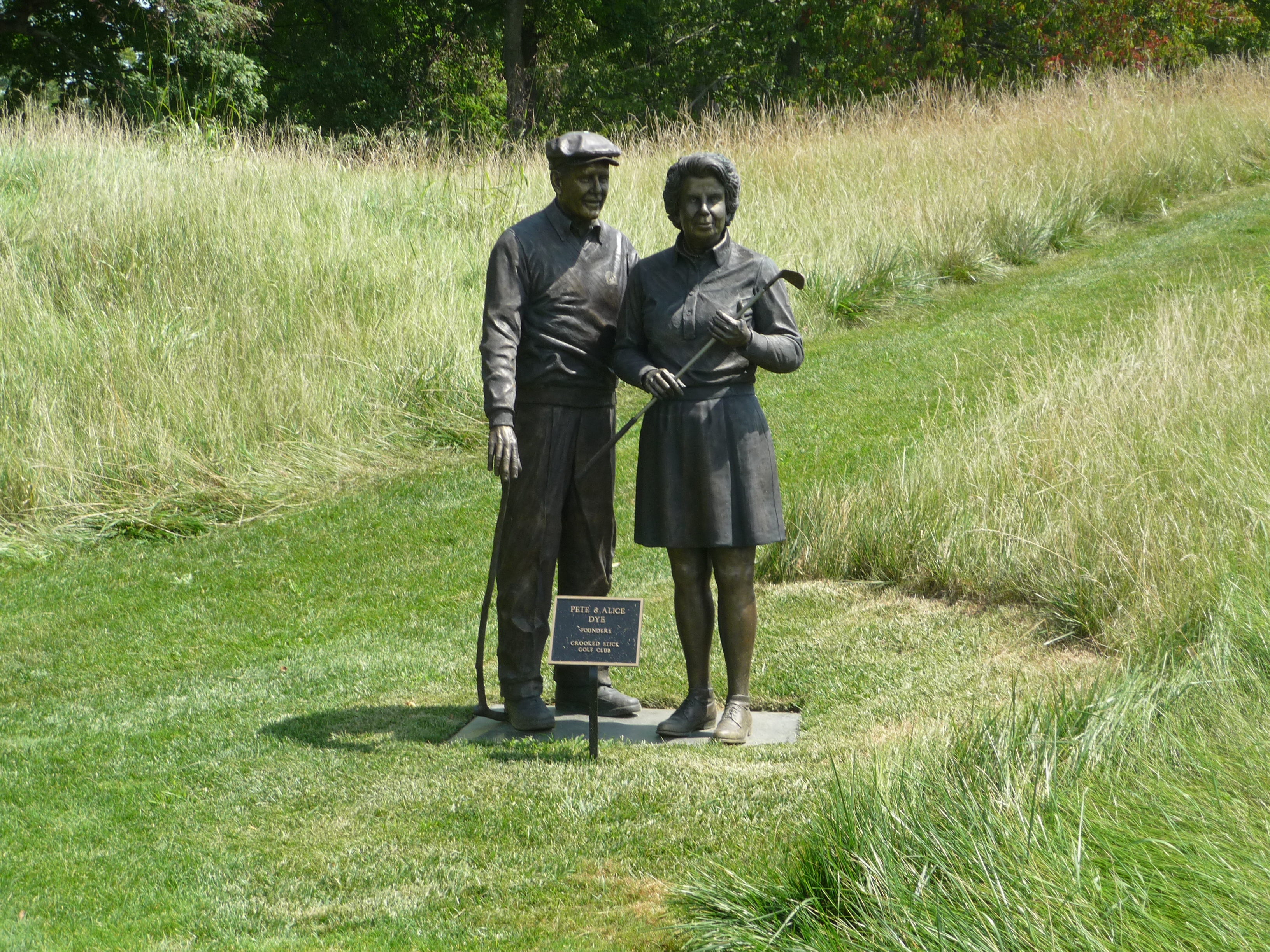
My round at Crooked Stick was simply awesome. I had a great time playing with a friend on a spectacular course. It was immaculate and featured some of the best greens I have ever putted. It was also educational to see one of Pete Dye’s early works. You can see some of the design aspects that he has used in later courses. The course was also less brutal than some of the later work. It is a great championship course that is also enjoyable for the members. I am not sure you can much better than that.

Jimmy,
What a great looking course. The bunkering was amazing! I definitely is a course that everyone should play if they have a chance! Thanks for the review.
Cheers
Jim
Thanks Jim!